

Stay in the Loop
Subscribe for exclusive content, giveaways, new products and more!
- Search for:

- Backpacking
- Backcountry Cooking
- Wilderness Medicine
- Destinations
- TRIP REPORTS
Arctic Travel , Nunavut
How to get to nunavut, canada’s seemingly inaccessible territory.

Nunavut is a vast and largely unconnected territory. One of the most common questions I get from my friends when I tell them I’m going north (besides Why? ) is “How do you even get there? Can you fly? Are there roads?” So today I’m going to do a little myth-busting and explain exactly how to get to Nunavut. Read on my friends.
How to get to Nunavut
Can you drive to nunavut.
No, you cannot drive to Nunavut. None of the communities are connected to southern Canada by road. Additionally, the 25 communities in Nunavut are not connected to one another by road either. In other words, if you’re thinking Nunavut is the destination for your next great road trip, you will be disappointed.
What airlines fly to Nunavut?
Until late 2019, there were two airlines servicing the Nunavut from the provinces down south. The two airlines merged in November and now Canadian North is the airline to take. Here is the route map:
This post may contain affiliate links. If you make a purchase through one of these links, I may receive a small commission at no extra cost to you. Your support is much appreciated! You can learn more by reading my full disclosure .
Many travellers to Nunavut go to Baffin Island . If you aren’t familiar with Nunavut’s geography, Baffin Island is the large island located on the northeast side of the map below. It is home to Iqaluit , Pangnirtung , Pond Inlet and a handful of other communities. To reach Baffin Island from the south, you would fly from either Ottawa or Montreal.
If you are going to a community in southern Nunavut (the communities on the mainland of Canada, like Baker Lake or Arviat), you would likely fly from Winnipeg.
Alternatively, if you were travelling to one of the communities on the northern part of the mainland (Kugaaruk) or an island north of the mainland (Cambridge Bay) you would fly from Yellowknife.
How do you book a flight to Nunavut?
Booking a flight to Nunavut is fairly straightforward. You can book flights on Canadian North’s website . Alternatively, you can book using Aeroplan points by contacting Aeroplan booking centre by phone.
Flights to Nunavut aren’t cheap, however, there is a strategy to significantly reduce your cost for airfare which I’ve written about extensively in How To Visit Nunavut on the Cheap .
How long is the flight to Nunavut?
Honestly, not as long of you’re expecting. But then again, it depends where in Nunavut you are going.
- Ottawa to Iqaluit : 3 hours and 10 minutes
- Montreal to Iqaluit : 4 hours and 30 minutes (with a stop in Kuujjuaq)
- Winnipeg to Rankin Inlet : 2 hours and 30 minutes
From Iqaluit or Rankin Inlet, the flights to smaller communities are never more than a couple hours. But it’s possible you will need to make multiple stops. For instance, flying from Ottawa to Gris Fiord will require you to go: Ottawa --> Iqaluit --> Arctic Bay --> Resolute Bay --> Gris Fiord. Oh my goodness.
And getting to Nunavut is as simple as that!
And check out this cool video I took while flying out of Iqaluit, Nunavut https://www.instagram.com/p/BwdIUetl9zc/
Other Resources
Here are some additional resources I think you’ll find helpful if you’re planning a trip to Nunavut.
- How to Visit Nunavut on the Cheap
- Interesting Facts About Nunavut – Canada’s Quirkiest Territory
- Snowmobiling, Kayaking & More: 10 Incredible Things to Do in Nunavut
Mikaela | Voyageur Tripper
Mikaela has been canoeing, hiking and camping for over ten years. She previously worked as a canoeing guide in Canada, and spent a season guiding hiking and kayaking tours in the high Arctic. Mikaela is a Wilderness First Responder and Whitewater Rescue Technician.
MY FAVOURITE GEAR

Fleece Sweater
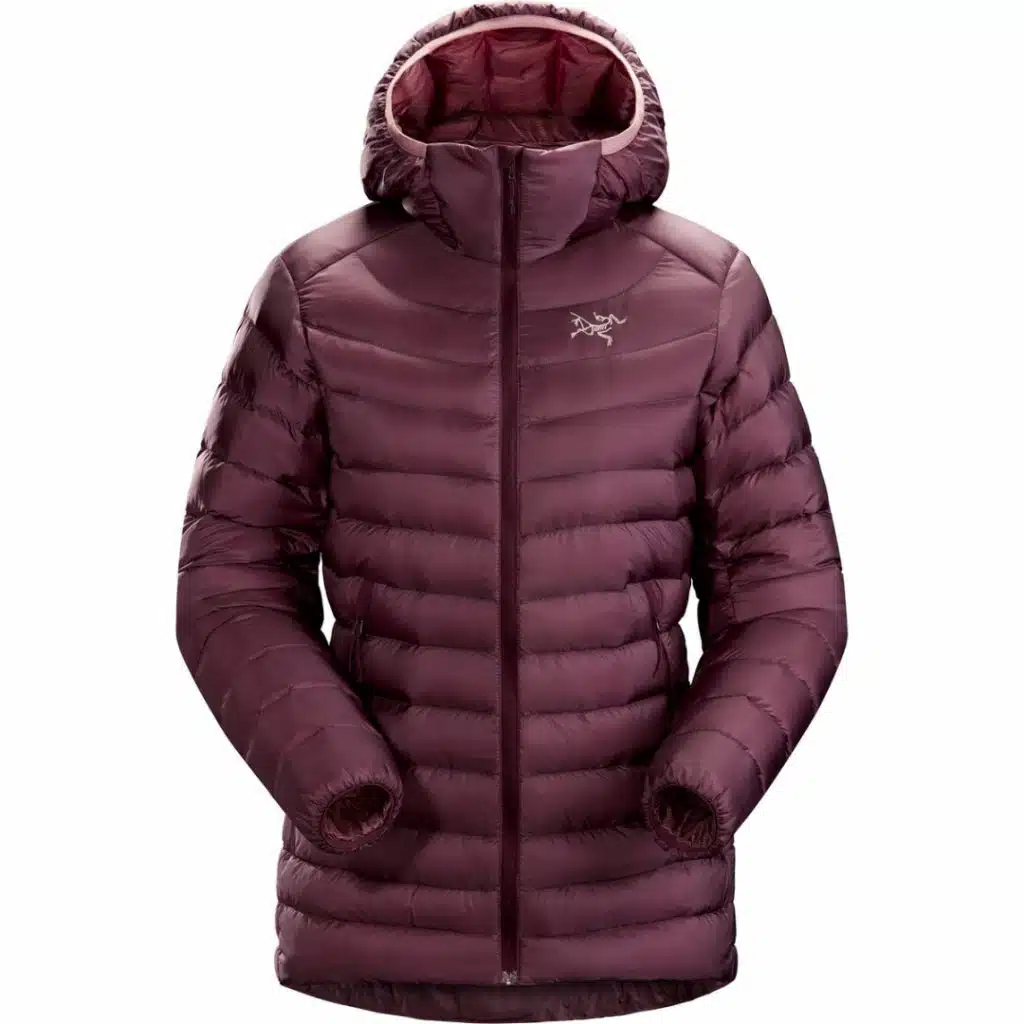
Down Jacket
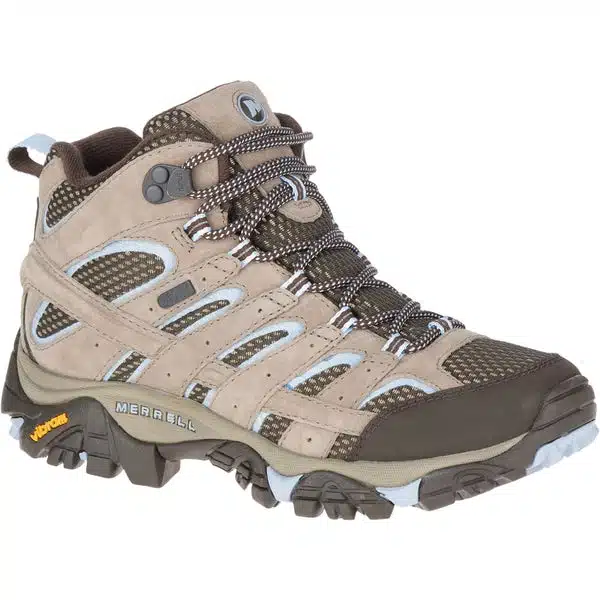
Hiking Boots

Hiking Shirt
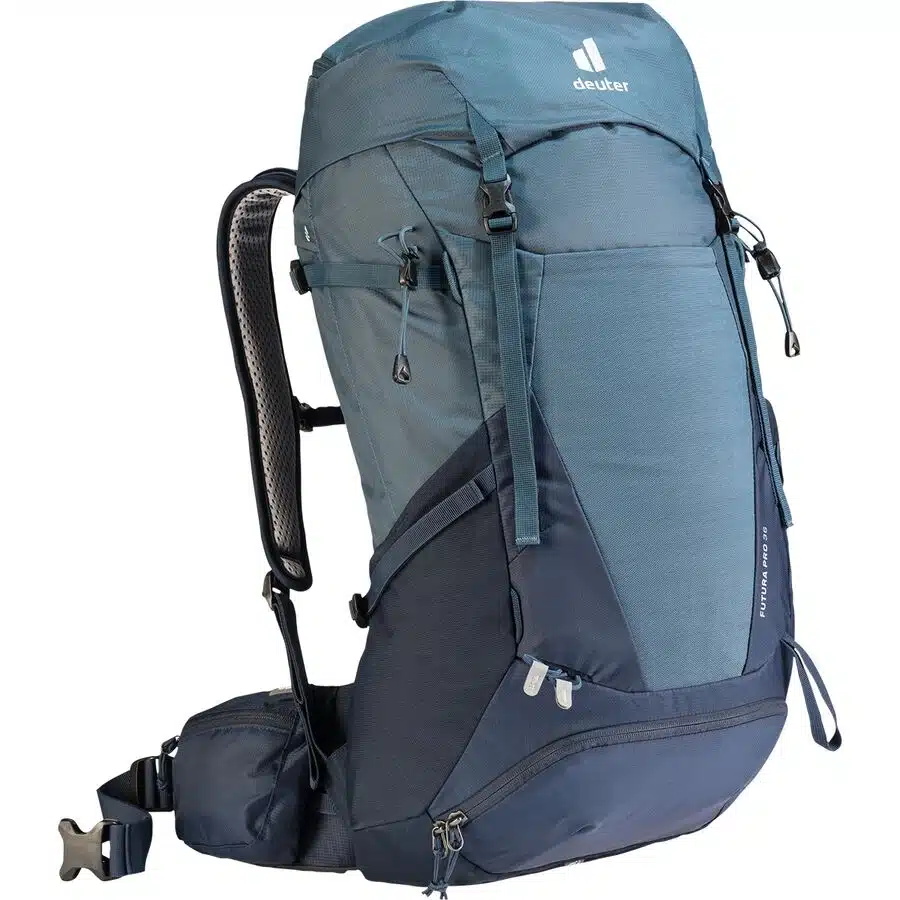
Hiking Pants
10 thoughts on “ How to get to Nunavut, Canada’s Seemingly Inaccessible Territory ”
Stay in touch.
Join our community of outdoor adventurers - you'll find trip inspiration, gear discussions, route recommendations, new friends and more!
Hey There. I found your blog using msn. This is a really well written article. I’ll be sure to bookmark it and come back to read more of your useful info. Thanks for the post. I will certainly return.
I got my pilots licence when I was 16. I took aviation in school in 1981. My accident was 1982. I wanted to fly for an airline but although I crashed, I lived and I constantly think about how I should have just gone North and I could be friends with Mikaela. We would be two females conquering the North.
I want to go to Thor Peak, world’s tallest vertical cliff. It’s on Baffin Island. With Chicago as my starting point, what is best way to get there?
Hey! Your best bet would be to fly Chicago to Ottawa (maybe with a connection in Toronto) and then Ottawa to Iqaluit. Finally, you would fly Iqaluit to Pangnirtung.
Thanks for the write up, Please want to know if there is st. George Christian University in Cambridge bay Thanks
I haven’t been to Cambridge Bay before so I don’t actually know! Sorry!
Bonjour Mikaela, Amazing travel descriptions of Canada. Middle life crisis is happening to me and I want to fulfill one of my wildest dream. Going to Nunavut next week for 6 days….from NYC. I could find flight to Montreal then no flight to Iqualit. What do you recommend as a substitute for Iqualit? Another city that I could visit (not driving) Thank you
Hey! I think the reason you can’t find flights to Iqaluit maybe that Nunavut still has a travel restriction in effect. Many (though not all) of the flights to communities in Nunavut pass through Iqaluit. I recommend looking at the government of Nunavut website and seeing if they are open for tourism yet and if so, call the airline directly. I hope you’re able to make it there!
Hi Mikaela, Hope all is well. My wife and I recently moved to Toronto from the USA, and we are avid travellers and hikers. I would appreciate it if you can give me an idea about the best time to visit the mainland Arctic and Canada, and what are some of the attractions/things to do once we get there. Can we get flights from Toronto to get there ? Thanks for your time!
Hi! You can fly from Toronto to Iqaluit through Ottawa or Montreal! It’s 3-3.5 hours from Ottawa/Montreal and Iqaluit. This post covers all of the things to do and the best time to visit:
https://www.voyageurtripper.com/travelling-to-nunavut-ultimate-guide/
Leave a Reply Cancel reply
Your email address will not be published. Required fields are marked *
Save my name, email, and website in this browser for the next time I comment.
- Facebook Group
Username or email address * Required
Password * Required
Remember me Log in
Lost your password?
- Skip to right header navigation
- Skip to main content
- Skip to primary sidebar
Follow Me Away
Couples Travel & Travel Photography Blog
- Middle East
- North America
- South America
- Photography
- Travel Tips
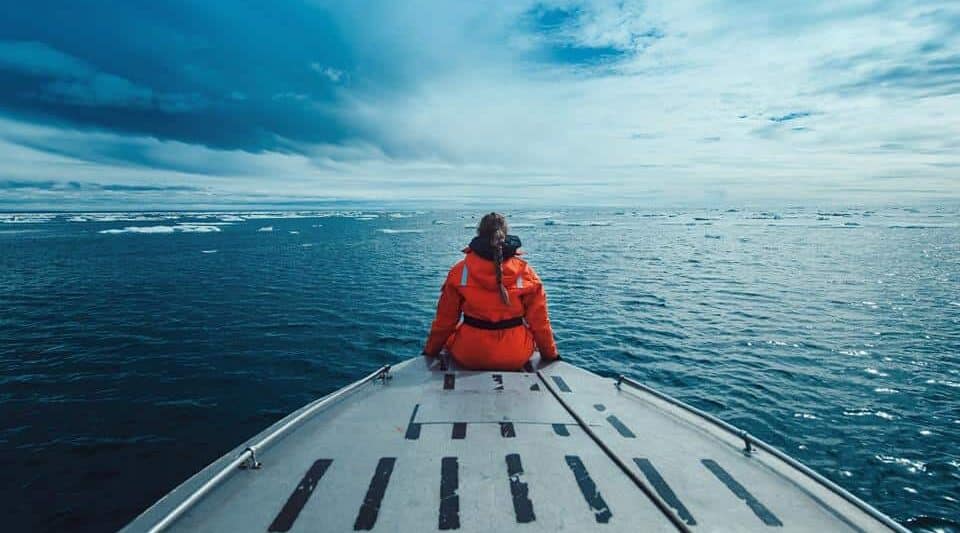
15 Things To Know Before Traveling To Nunavut
January 28, 2019 // by Follow Me Away // 47 Comments
Have you ever considered traveling to Nunavut? This Arctic Canadian territory occupies 1/5 of Canada and is where you are going to want to go when you are ready to take your adventure travel to the next level, when you are tired of the norm, when you want a beautiful destination that is unspoiled by commercialism, when you want to learn about Inuit culture, and of course, when you want to see tons of wildlife! Nunavut is where you are going to want to travel to when you want to truly visit the ends of the earth. Before you travel to Nunavut, there are a few things to know to prepare you for such a life changing trip!
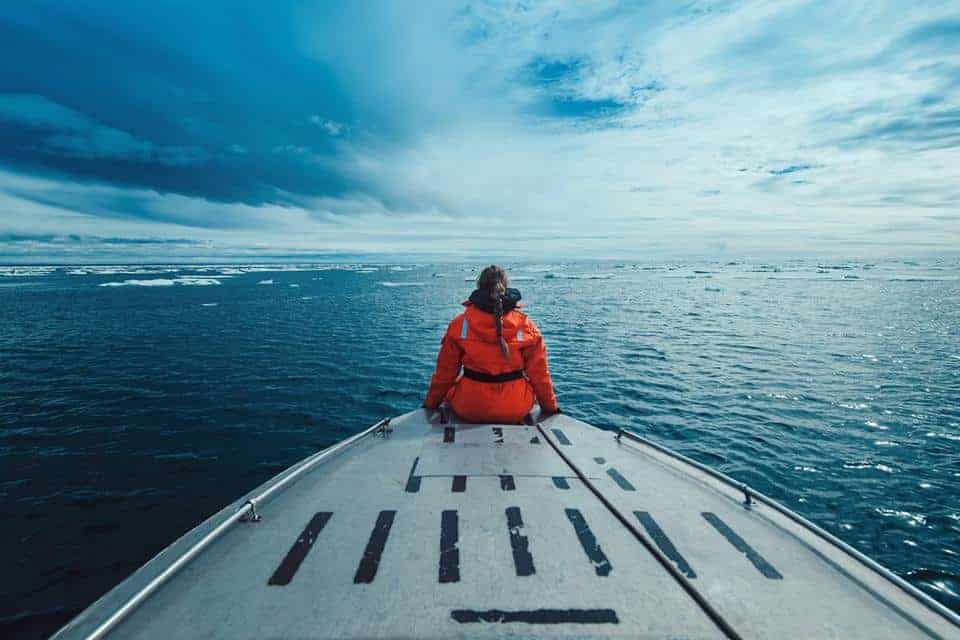
#1. There Are No Direct Flights To Nunavut
Since the province is so remote, there aren’t a ton of flights to Nunavut. Unless you live in one of the major Canadian cities that fly direct to Nunavut, such as Winnipeg, Montreal, Ottawa, or Yellowknife, you are going to have to take multiple flights to get to the Arctic. Depending on where you want to visit in Nunavut, this could mean taking up to four flights in one day!
When visiting the village of Naujaat [pronounced NOW-E-YAGHT], we had to take three flights up and four flights back! Each time, the planes and airports got progressively smaller until we arrived. Although taking multiple flights would usually be a burden, these longer flights to Nunavut are all part of the fun and anticipation of getting to the Arctic!
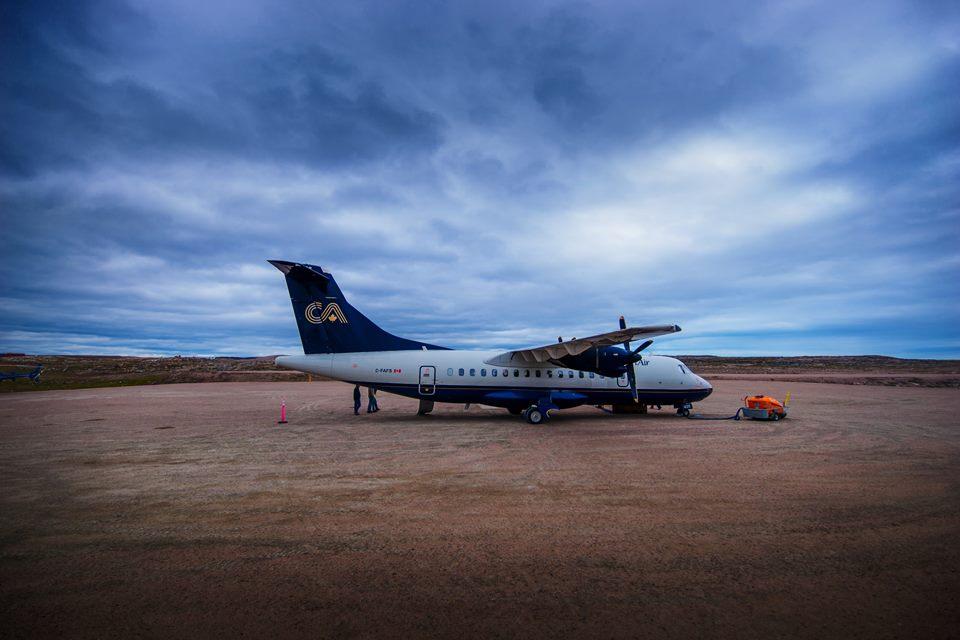
#2. There Are No Roads To Nunavut And No Roads Connecting Communities
The 25 different communities of Nunavut are not connected to each other via highway or railroad. This means that if you hope to visit, you better be okay with jumping on multiple planes to get to your destination! Once you arrive in Nunavut, traveling within the province isn’t as difficult as flight times are much shorter. Locals travel between communities by air, boat, and in winter, snow mobiles, but visitors are encouraged to travel around Nunavut by air.
Unlike other places you may have flown around, flying around Nunavut is pretty easy and straightforward. There are not long lines for TSA and security and you don’t have to fight all the people to board quickly. Things are much more relaxed and you will be able to board quickly and easily. Everyone is friendly and you most likely won’t have to show up to the airport 2-3 hours early because many community airports aren’t even open this early before a flight. Traveling through Nunavut by air is a unique and interesting experience that we know you will love.
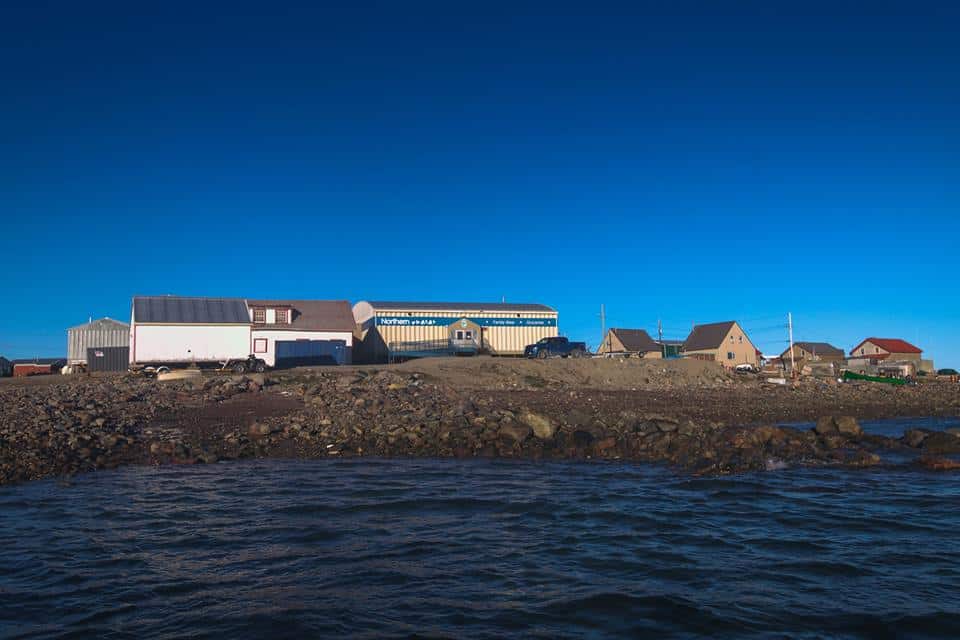
#3. You Definitely Need To Hire An Experienced Local Guide Or Outfitter
We urge you to take heed on this point! Unless you are from the aboriginal Arctic, you are not going to be experienced enough to take this trip alone. No, visiting Iceland or Arctic Norway certainly does not count in your Arctic preparedness so please listen carefully! During our time in the community of Naujatt and the surrounding areas, we were guided by Solomon, the owner, and operator of Arctic Wilderness Outfitters. He is also a school counselor and the mayor of Naujatt, so you can be sure you are in great hands.
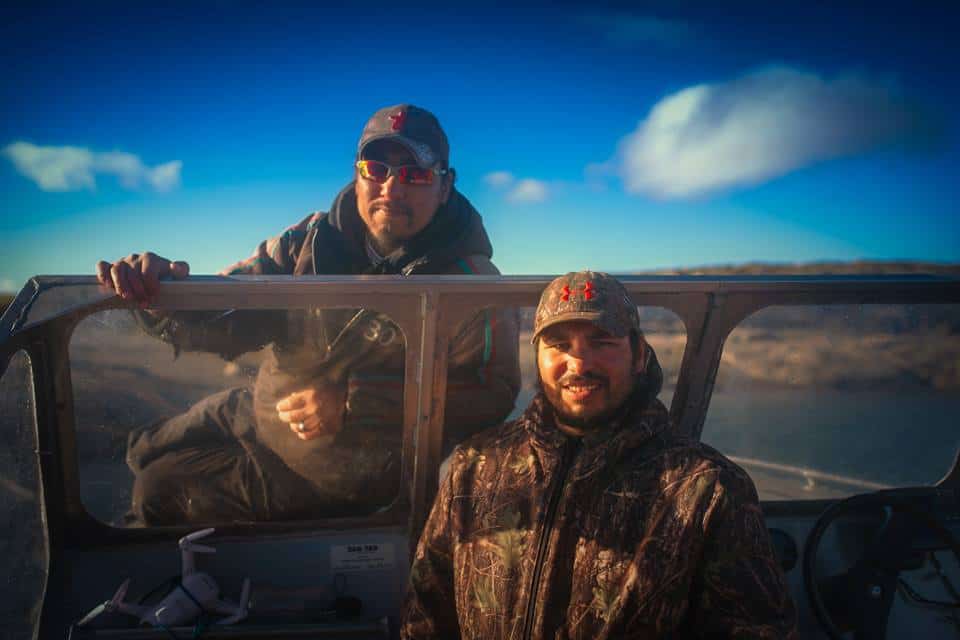
Our guide Solomon was able to provide us with meals, sleeping bags, safety information, Mustang safety suits to wear on the water, and expert first-hand knowledge on local life and the Nunavut landscape. There really isn’t a way to do such an adventurous trip alone, so hiring an experienced and trustworthy guide is essential to having a safe and fun trip. If you want to travel to the community of Naujaat, we highly recommend Solomon and Arctic Wilderness Outfitters. This was the first time we had ever worked with a guide during our travels and it was great!
#4. You Will Learn A Great Deal About Nunavut Culture
A trip to Nunavut means an immediate lesson on Arctic Canadian culture from the second you sit down in the plane. Yes, the airline magazines discussed Nunavut culture and the woes Inuit have undergone for centuries at the hands of foreign governments as well as their triumphs and successes. If you travel to Naujaat like we did, you will meet friendly Aivilingmiut (‘people of the Walrus place’), direct descendants of the ancient Thule people with a 95% Inuit ethnic distribution.
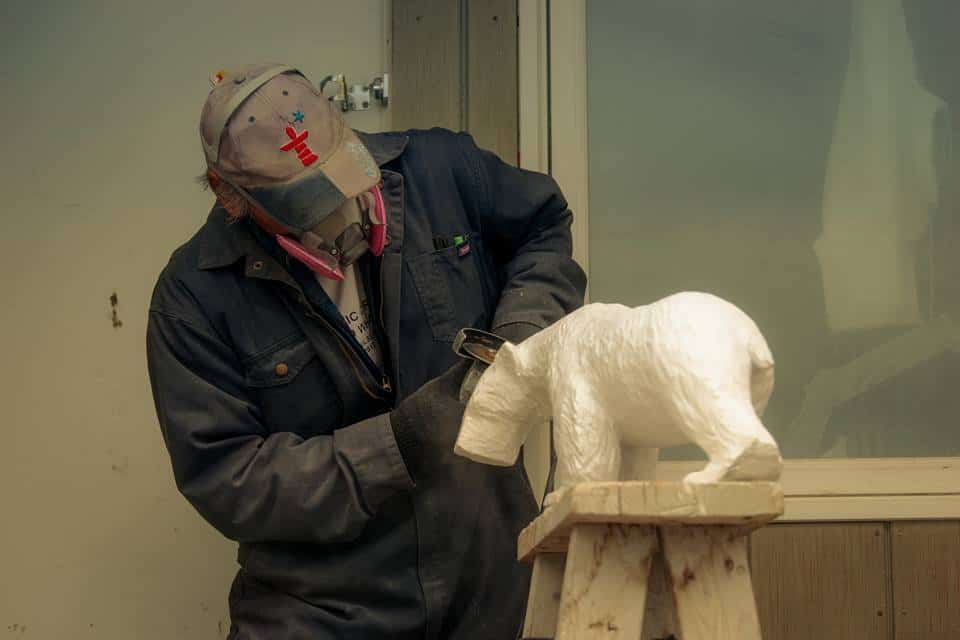
The languages spoken in Naujaat and in much of Nunavut are Inuktitut and English. The locals in Naujaat were perfectly fluent in both languages, save a few of the older adults. We loved learning about the Nunavut hunting culture from our guide Solomon. He told us that the Inuit are appalled by factory farming and hunting for sport that much of North America loves to partake in. No, in Nunavut, locals hunt out of necessity and use every part of the animal. One whale hunted by locals in Naujaat can last the entire community and surrounding communities up to two years of food! Animal skins and horns are used for bedding, winter clothing, carvings and more and Inuit have a great respect for animals.
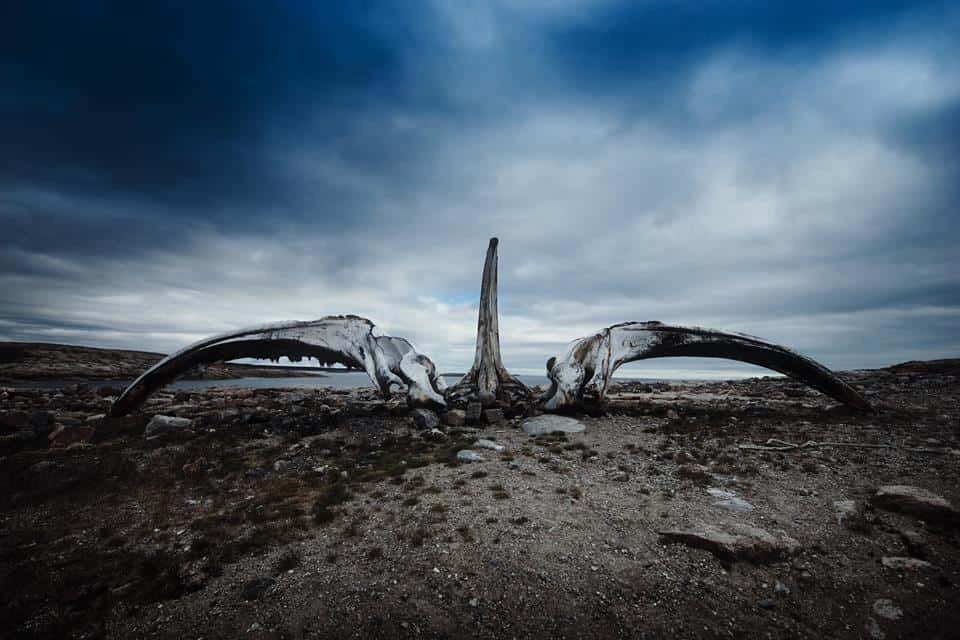
#5. You Can Stand On A Real True Floating Iceberg
When we stood on a small ice chip on the shore of Iceland’s glacier lagoon, we were met with backlash [and still are unsure why.] Here in Nunavut, we were not only allowed to stand on floating ice, we were encouraged and it wasn’t even our idea! If you are slight daredevils like we are, the prospect of standing on a piece of ice in the Arctic ocean at a depth of 400 feet floating on water that can kill you in minutes will surely excite you!
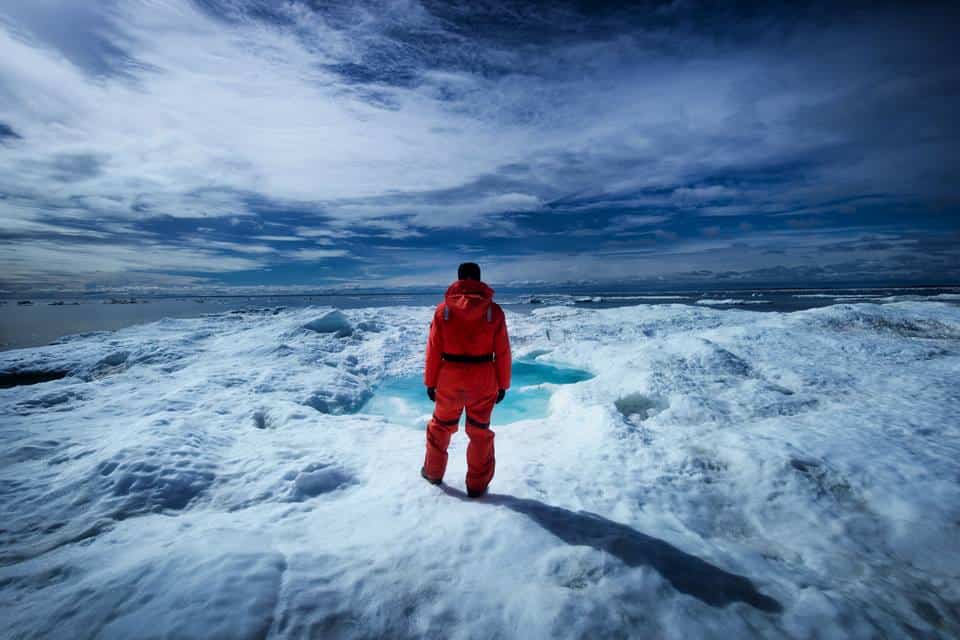
Although we were initially nervous about the idea, Solomon informed us that it is actually quite safe. He showed us how to pick out the perfect pieces of ice to safely stand on, discussed the depth of the ice itself [some went 20-30 feet down into the water], and allowed us to drink from pure-as-can-be wells of literal ice water that had collected on the ice piece. We even docked the boat on a few ice pieces and had lunch or just got out for photos!
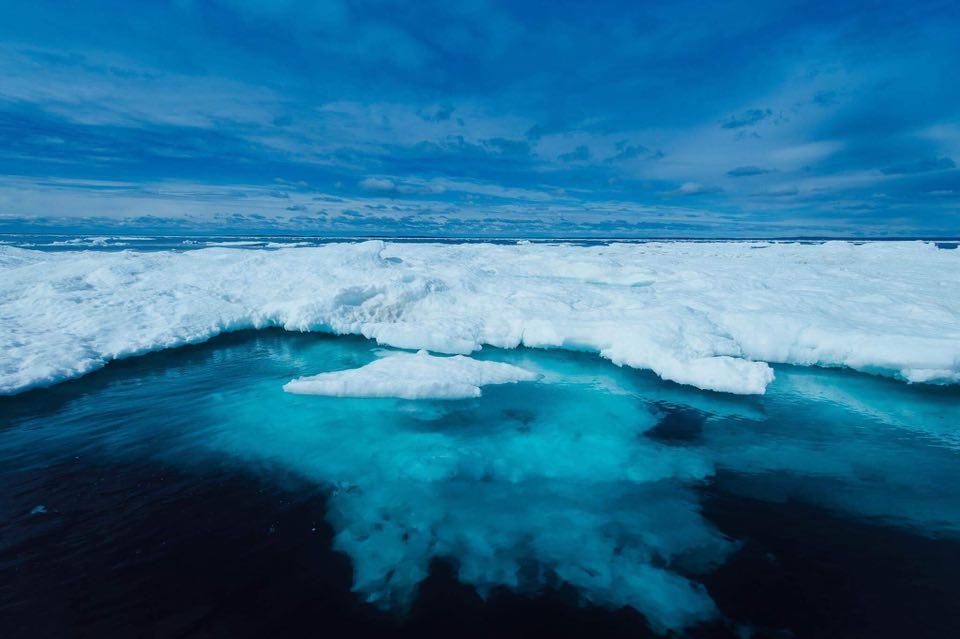
A few times during our trip, Solomon dropped one of us off on a floating piece of ice and drove the boat out into the arctic ocean for some pretty swell photos! Standing on that piece of ice with no boat nearby was an experience as you could feel the piece moving with the ocean and crashing into other ice pieces of equal or bigger size! It was such a thrill and was one of our favorite things to do in Nunavut!
#6. You May See Tons Of Wildlife, But Don’t Play The Blame Game If You Don’t
Like all things surrounding nature, nothing is set in stone and Mother Nature will do as she pleases. One of the major complaints from outfitters is that people blame them if they do not see wildlife. Solomon told us a guest was once unhappy that he didn’t take them into a dangerous situation between the ice! Trust your guide, they know more about the local wildlife than you do!
During our trip, we saw two kinds of seal, tons of seabirds, and narwhal. Depending on what time of year you visit Nunavut, you can see polar bears, beluga whales, walrus, and more. Go in with an open mind but for the love of everything good don’t blame your guide if a whale decides it is going to chill somewhere else during your trip.
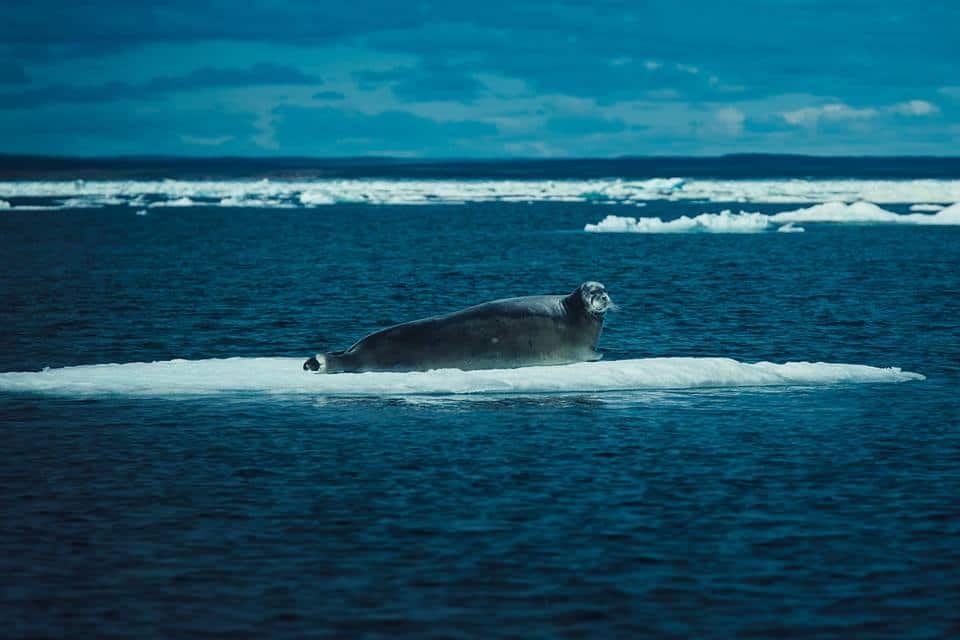
#7. You Will Get To Travel To Remote Locations Unspoiled By Tourism
Nunavut’s vast expanse of uninhabited territory means that you get to experience adventure travel at its finest. Unlike Iceland that has a record 3 million visitors per year or Norway that has even more, Naujaat received only 30 tourists in 2016. This year, we were only the 8-9 people to visit this Arctic community in Nunavut.
This means that travelers are truly able to experience Nunavut through the eyes of a local. There are no large stores, no chain hotels, and there is absolutely no fighting with your fellow tourist to get the best photo. Thousands of folks flock to Churchhill, Manitoba for their Arctic experience, but are left fighting with all the other visitors. Only one territory away, Nunavut sits welcoming visitors with open arms and completely epic locations unspoiled by consumerism.
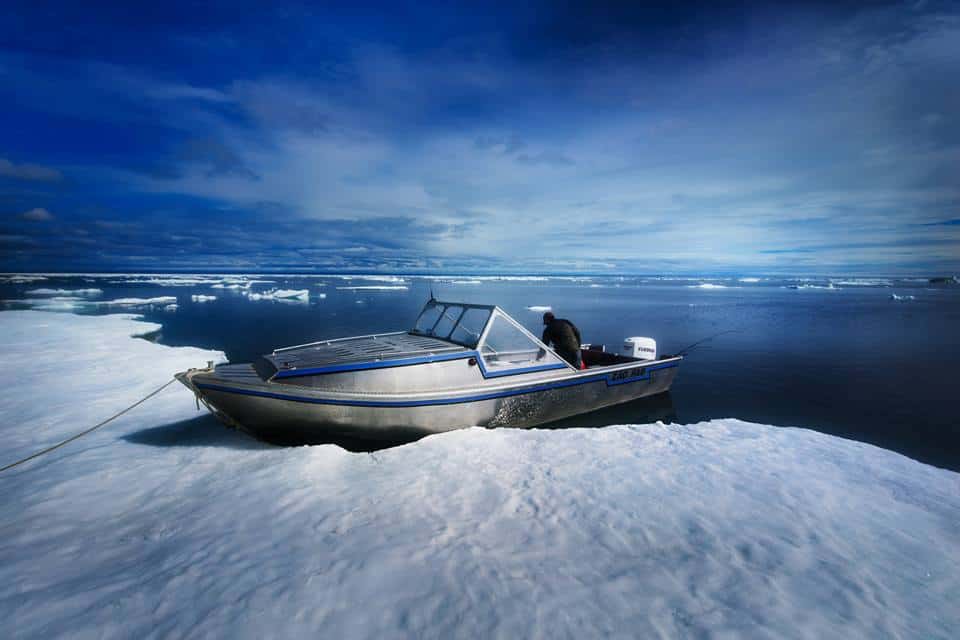
#8. Summer Weather in Nunavut Isn’t That Bad, But Winter Weather Gets Freezing
Even for Floridians, summer weather in Nunavut wasn’t that bad at all! We spent the majority of our time in Naujaat boating on the Arctic ocean, and even then we weren’t cold! If you are heading to Nunavut in the summer, pack for the winter where you live! This means your winter jacket, winter pants, multiple layers of clothing, balaclava, and waterproof boots. This Arctic packing list we created can help you choose what to bring! Summer weather hangs out at about 30-40*F [0-5*C] and you get to enjoy the 24-hour sun! If experiencing the midnight sun is on your bucket list, we suggest traveling to Nunavut during the summer!
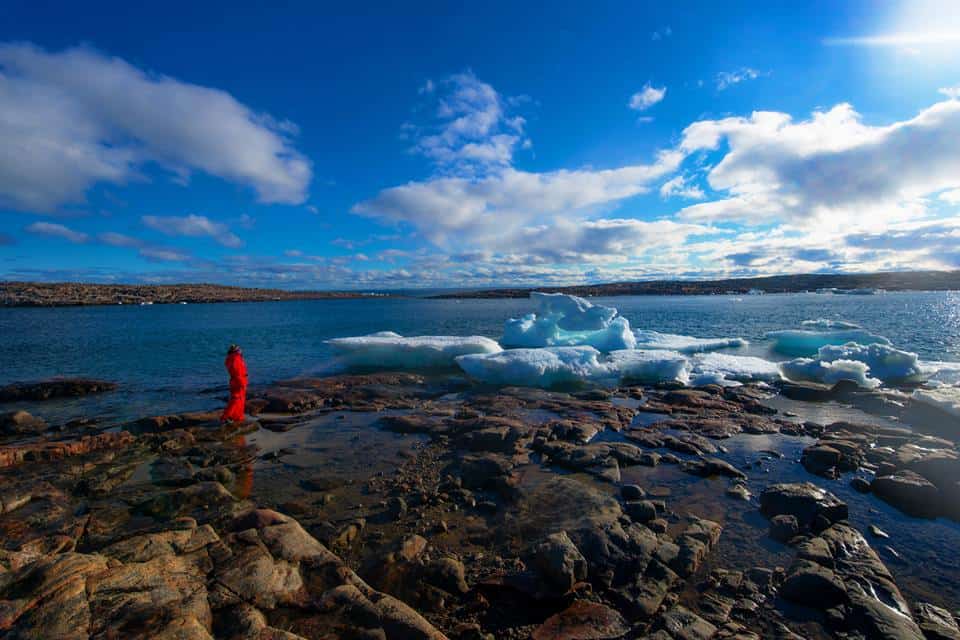
The winters in Nunavut get majorly cold! The weather goes down to a frigid -55*F and that doesn’t include wind chill! Regular winter clothing does nothing for that kind of temperature, which is why natives make use of animal skins for warmth. If you want to travel to Nunavut during the winter, you will experience a lot of darkness, but the dancing Northern Lights will make up for it! Star gazing and Northern Light sighting in Nunavut is abundant and the pure quality of the air is unlike anywhere else.
#9. You Can Choose Your Level Of Adventure When Traveling To Nunavut
Although Nunavut is typically an adventure travel destination, you are able to choose what that word means for you. Your experienced Arctic guide should provide you with options to choose from based on your skill level and comfort. We chose to stay at an amazing Inn in the community and have Solomon take us out on daily adventures. We love doing adventurous things but also like a comfy bed and a shower at the end of the day.
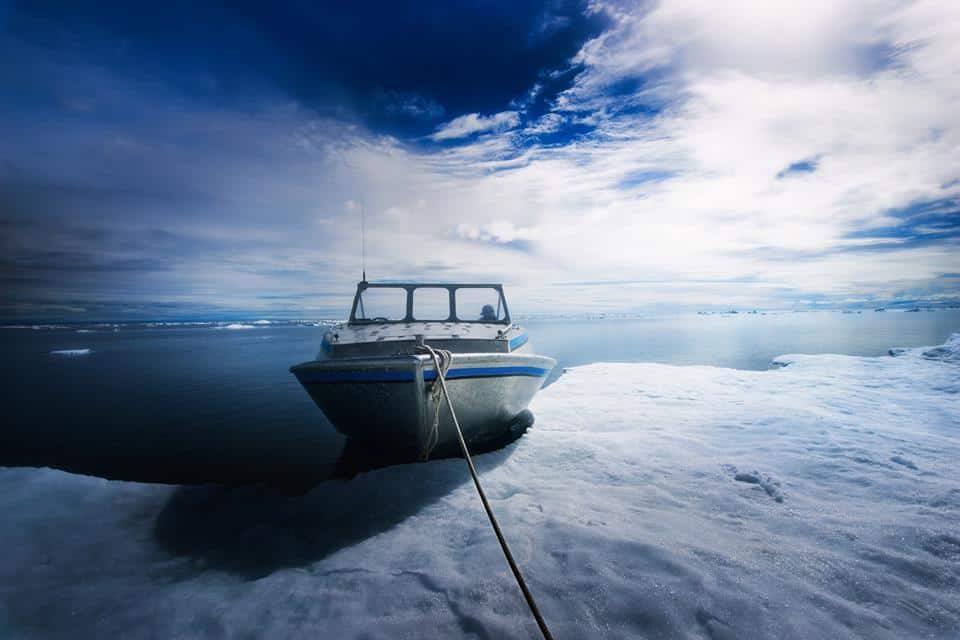
You could also choose to go to Solomon’s personal family cabin for rustic camping, camp out “on the land,” or even sleep on the ice itself [depending on the time of year]. We loved being able to choose our level of adventure so we could still experience the best of what Nunavut has to offer on our own terms. Just because you aren’t a camping queen/king, doesn’t mean you should write off a trip to Nunavut!
#10. The Nunavut Landscape Will Exceed All Your Expectations
The Nunavut landscape will leave you truly speechless. Since there are hardly any photos out there of what Nunavut looks like, we didn’t have many expectations. Since we were told there was no snow during the summer, we thought the landscape would be flat and brown, with some tundra plants and scruffy grass. Boy were we surprised! The landscape in Nunavut is crazy diverse and all-around very epic! In Naujaat, Nunavut, the landscape is solid granite rock. There are lakes and grass and wildflowers. The granite ground is by no means flat and forms what Floridians would call a mountain or what is really known as a large hill.
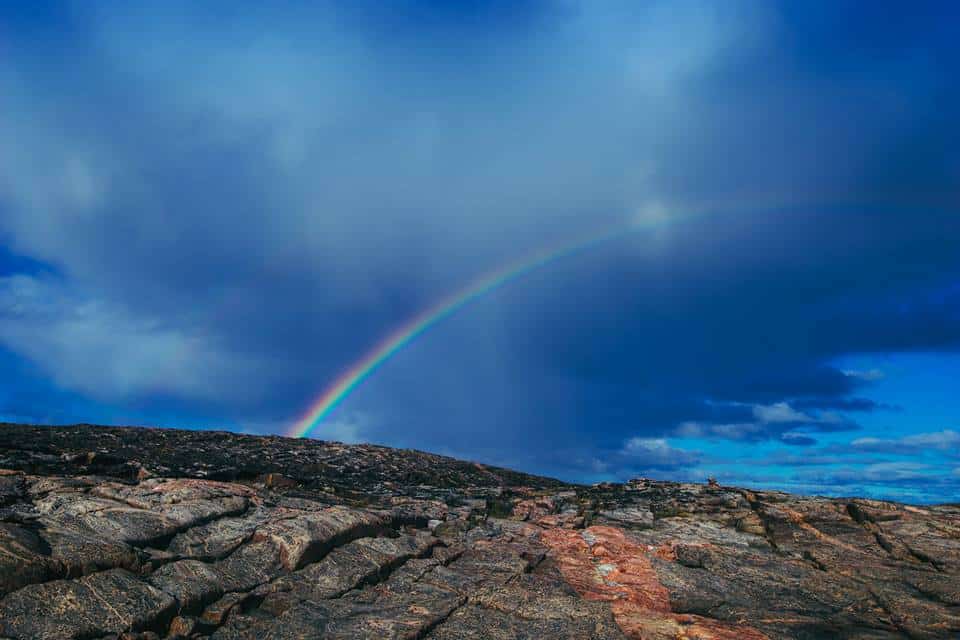
What we really didn’t expect was all of the floating ice. There was floating ice as far as the eye could see and it was moving each day. Depending on the time of year you travel to Nunavut, there may be bits of ice, it could be floating, or the entire landscape could be covered in it! We had no idea that we were going to see the Arctic ocean covered in miles and miles of floating ice that we could drive a boat in between and actually get out on. Go in with an open mind and you will not be disappointed.
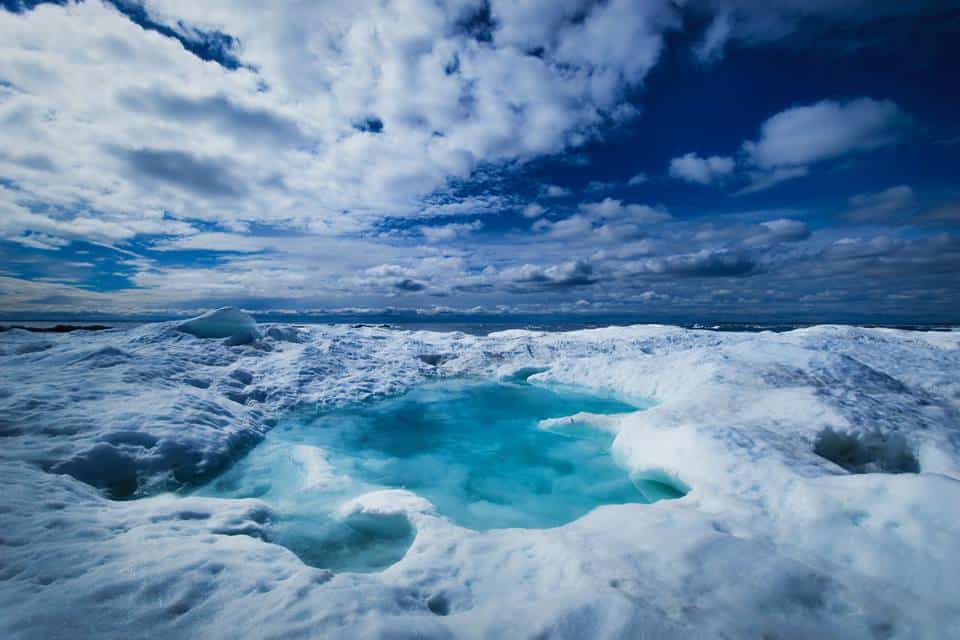
#11. The Nunavut Locals Are Friendly and Accepting
As an interracial couple, traveling has its challenges and we have run into racist individuals in a variety of European countries and even Canada itself. Traveling to small towns is always a red flag on our safety radar, as smaller towns are usually much less welcoming to minorities and individuals in mixed-race relationships. Even if people aren’t overtly racist, their judgemental stares are uncomfortable and unwelcome. We did not feel this way for one second during our stay in Naujaat or during our travels in Nunavut as a whole.
The locals took the time to say hello and to talk or share about their culture. We discussed nature, hunting, culture, politics, social media, popular television shows and more and didn’t feel uncomfortable one time. There were no weird stares or racial slurs shouted and only a sense of welcome was felt. If you are a minority traveler or part of a mixed-race couple, we encourage you to travel to Nunavut and assure you you will only receive a friendly welcome!
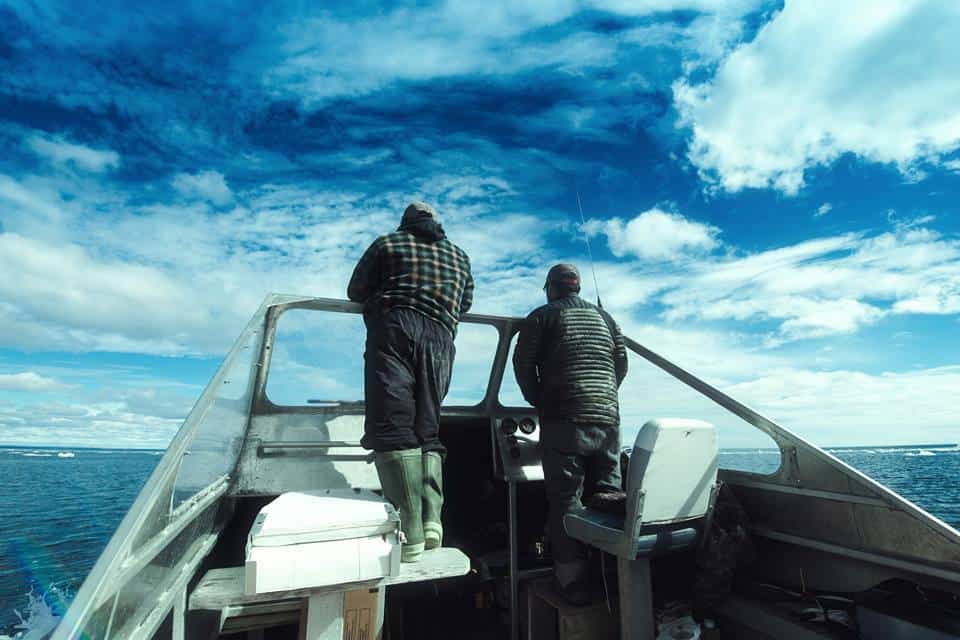
#12. The Air Is Clearer And The Water Is Purer
We had heard from the Nunavut Tourism Board that the air is going to be more clear than we had experienced in the past. We weren’t sure what that meant, but when we arrived, we knew! This meant that there were less particles of pollution and that the light was ever-so-perfect. Even though pollution in the air is very fine, it makes a huge difference in the quality of the air when it is suddenly removed! Water in Nunavut is about as pure as water can get and is collected from freshwater lakes. You can even drink straight out of a floating iceberg!
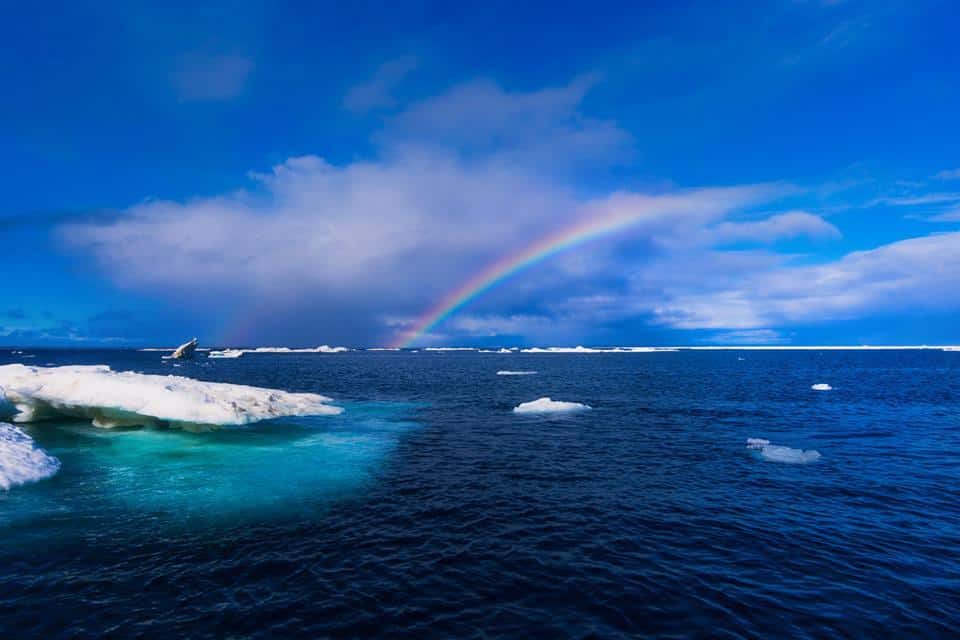
#13. Food In Nunavut Is Expensive
Unless you are eating meat killed by the locals, westernized food and fresh vegetables are very expensive. It is easy to see why since the Arctic isn’t the closest place to ship goods. This is another good reason to hire a guide when you travel to Nunavut. Food is often included in the price of your trip so you won’t have to worry about a thing. During our stay, either Solomon cooked us delicious meals or the manager of the Inn we stayed at cooked. Shoutout to Karen for the yummy food! If you want to eat snacks, bring them in from the south because a bag of chips is going to cost you $8-$10!
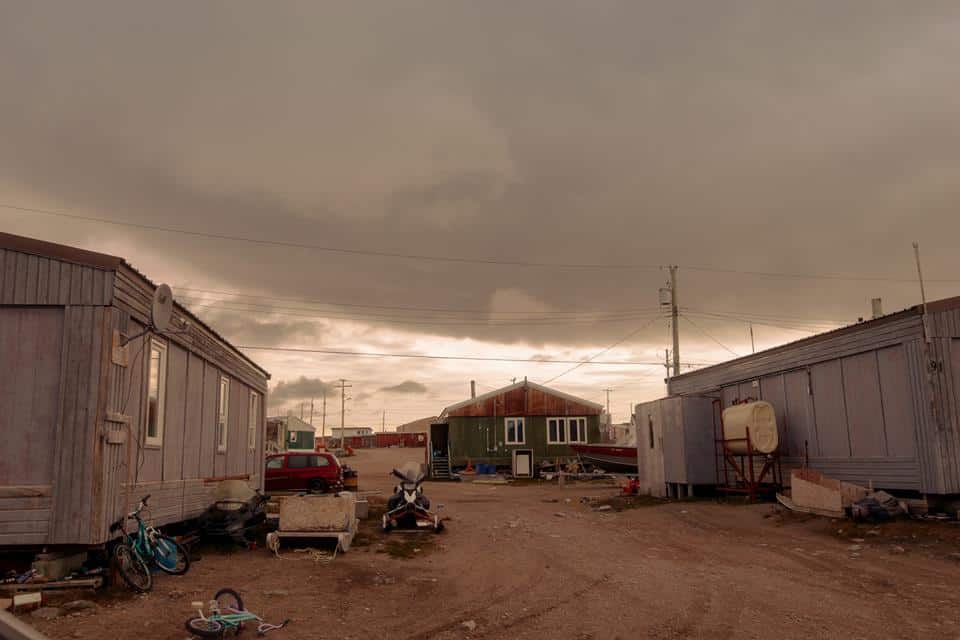
#14. You Can Easily Go Shopping If You Forget Something
Just because Nunavut is remote doesn’t mean that there aren’t stores! Don’t worry about being stranded for days without being able to pick something up as there are real people who live and work in Nunavut who use these items just as we do too! If you are traveling to Nunavut and you forgot an essential item, you can head to a general store, often called a co-op, and grab what you need. Everything is much more expensive, but when you are in a pinch, the price doesn’t matter! We needed to grab cough drops and the co-op in Naujaat had 20 for about $6.
It is important to remember that the people living in Nunavut have many of the same wants, needs, and desires as anyone else so don’t worry about not being able to find an essential item if necessary.
#15. Traveling To Nunavut Is A Once-In-A-Lifetime Trip
Taking a trip to the Polar Arctic is the trip of a lifetime. The best part is that such a trip isn’t even on the radar for the vast majority of travelers, even full-time travel bloggers like us, which makes it even more special when you finally decide to visit Nunavut. From the friendly natives and Inuit culture to the vast Arctic Ocean, fields of icebergs, and abundant wildlife, Nunavut is a stunning travel destination just waiting to be explored!
Best Time Of Year To Visit Nunavut
If you are considering planning a trip to Nunavut, summer is the most accessible time to visit! Depending on what you want to see and do in Nunavut, you may want to visit closer to spring or closer to fall. There aren’t many people who choose to travel to Nunavut in the winter, and the flight schedules are often changed, delayed, or canceled due to the weather. This isn’t a bad thing, just a fact of life when you live and work in the high arctic. If we had to recommend the best time of year to visit Nunavut, it would be during the summer months.
It is still cold during the summer in Nunavut, but the weather is good enough for you to easily travel around and see and do pretty much whatever you want to experience. Whether you are looking to go camping out on the land, to visit villages and learn about local traditions, or see ice flowing in action, the summer is the best time of year to visit Nunavut. Another perk of visiting Nunavut during the summer is the fact that you get to see and experience the “midnight sun” which is when the sun never sets. This is such a fun thing to experience and we highly recommend planning your trip to Nunavut around this time of year.
What To Pack For Nunavut
Pack for Nunavut like you would if you were going to any other cold-weather destination. Visiting Iceland? Hiking in the Rocky Mountains during the winter? Visiting a cold city in January? Pack as if you would be visiting these places, depending on what it is you want to be doing in Nunavut. Of course, things will be much different if you are looking to visit one of the larger towns in Nunavut versus if you are looking to go camping out on the land and exploring with a local guide for a few days as you sleep in the elements.
No matter what you choose to do, here are five things we recommend packing for your trip to Nunavut!
1. Balaclava: . Since Nunavut can be windy, especially if you are on a boat, skip packing a scarf that will blow off and choose a balaclava instead. They protect your face and neck from arctic winds for less than $10 and they won’t blow off like a scarf. Balaclavas tuck into your shirt and can be worn underneath a hat so you can enjoy all the protection they have to offer without all the bulk. We loved using our Balaclava while in Nunavut!
2. GoPro: If you are looking for an easy way to capture great photos and videos during your trip to Nunavut, a GoPro should top your Nunavut packing list. You can invest in a GoPro that is top of the line or stick with an older model like the GoPro Hero 3 which is what we have traveled with before. GoPros are durable and waterproof and perfect to pack for a trip to Nunavut.
3. Daypack: Since you won’t be trekking your suitcase around, a daypack is the perfect travel item to carry your essentials for the day including a snack, extra clothing, water bottle, etc. If you want to add a daypack to your Nunavut packing list, Look for one that folds up so you can pack it in your luggage and take it out upon your arrival.
4. Extra Food: It doesn’t hurt to pack some freeze-dried meals when traveling in Nunavut. If you are traveling with a guide, food will usually be provided, but if you have a special dietary concern or want to choose what you are eating, buy online before you go! Buying them online or at your local grocery store will be a fraction of the cost of buying food in Nunavut since the territory is so remote.
5. Wool Socks: There isn’t too much to say on why you should pack wool socks other than wool is the single best fabric for keeping you warm and has been for centuries. We tried to do a cold-weather trip without wool socks and it was a huge mistake. Since you will be outdoors a lot when exploring Nunavut, make sure your feet stay warm and dry at all times. Wool socks will save your feet!
We hope this post has inspired you to plan a trip to Nunavut. This destination is far from popular and that is a shame because it is so beautiful and remote with wonderful people who just love to share their culture and beautiful landscapes with visitors. If you have any questions at all about visiting Nunavut, please feel free to reach out to us. We always love to encourage others to travel to Nunavut as it made such a great impression on us when we visited!
Pin this post:
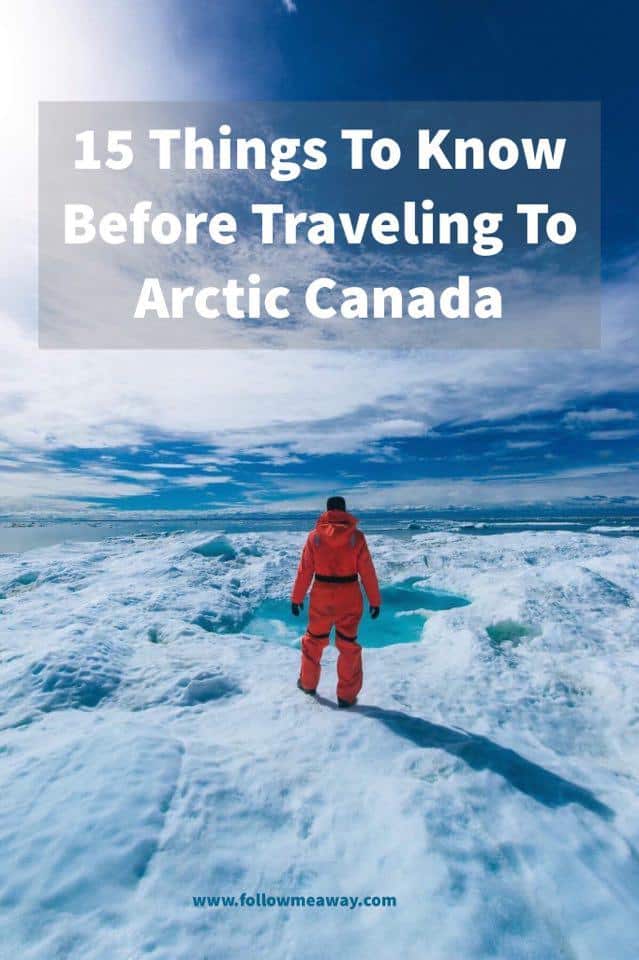
Reader Interactions
August 11, 2017 at 8:55 pm
Point #1- awesome pics. Point #2- Any place that requires 3+ flights in increasingly smaller places also demands a local guide to show you about. Great tips.
August 12, 2017 at 12:53 pm
Thank you so very much!! Nunavut was very photogenic! And Yes, a guide is a must! It was our first time with a guide and we recommend!
November 23, 2018 at 12:33 pm
Hi, we really liked all your tips and it had seriously got us considering this trip. We were wondering if we could get in touch with you for more details on the trip ? Thank you!
November 24, 2018 at 12:53 pm
Hello! Sure thing! Please feel free to email me at [email protected] with any questions!
June 12, 2019 at 3:17 am
Hi, Im coming to work for a year. What advice can you give me about the safety please?
August 12, 2017 at 12:38 pm
Fantastic post. What a great Arctic adventure you enjoyed in Nunavut! It’s certainly on our radar, though as you mention, it’s not an easy place to get to, but obviously very worth the journey. Thanks for sharing this great guide to an amazing part of Canada.
August 12, 2017 at 12:52 pm
Yes!! It is so very worth it! You should certainly consider it!
August 13, 2017 at 7:54 am
I like the fact that you will get to travel remote places. Those are things I would like to visit more. THis place is now part of my bucketlist. Thank you for a very informative post.
August 13, 2017 at 11:05 am
Oh my god!! Such a lovely place. Even lovely is a small word. Added to my must-go places.
August 13, 2017 at 9:05 pm
Wow what an amazing adventure. I didn’t know this was something I wanted to do until now but with landscape like that I need to make a trip to Nunavut happen someday!
August 15, 2017 at 2:49 pm
I’m from Canada, but I haven’t made it up north yet. I hadn’t put much thought into it until now, but you’ve made me realize just how beautiful that part of the country truly is. I would love to stand on a floating iceberg, for example. Thanks for sharing!
August 15, 2017 at 4:04 pm
It was a truly fantastic experience!!!! You should try and make it up some day!
August 15, 2017 at 4:36 pm
I had no idea that there were no roads. This sounds like such a unique experience and I would love to go someday. It’s amazing that you get such a special look at the culture. Thank you so much for sharing about this beautiful destination.
August 15, 2017 at 8:21 pm
I had an amazing experience in iqaluit and Cape Dorset. Cape Dorset especially felt so remote and grand, really it was much as you describe Naujaat with the addition of a sensational art community. Add to that the outdoor ‘ice’ adventures you describe and Nunuvut is really a hard to beat location. I love your image of standing on the ice alone, with the water rocking beneath you.
August 16, 2017 at 12:30 am
I’m Canadian, but I haven’t been to Nunavut – time to change that. Walking and drinking water from the icebergs would be very cool!
August 16, 2017 at 12:53 am
Knowing about the place for the first time and so much of info on it. Seems like a very interesting place. Shopping possibility there surprised me and food has to be expensive.
August 16, 2017 at 6:24 pm
I would love to visit. I am a big fan of destinations that have a low number of tourists. It looks so desolate but pretty at the same time.
August 18, 2017 at 1:18 am
That looks absolutely amazing! No, I’d never even heard of it, but we really must get over to that part of the world.
August 18, 2017 at 7:28 am
HAhaha, the summer maximum temperature is WAAAAY lower than winter down here in Australia – that’s CRAZY!! So great to read about somewhere I’ve never heard of before – I spent the last HOT summer downunder reading a series of detective novels set in Alaska (gotta cool down somehow), and developed a strange urge to go there. I know this is in a different country, but you’ve given some reality to the mental pictures I have of some of these extreme locations. Fantastic!!
August 18, 2017 at 10:29 am
Wow, Arctic Canada is so remote, untouched and pure. Not long before Iceland-junkies come calling. Till then, its resting in peace.
August 18, 2017 at 1:15 pm
I want to stand on an iceberg! 🙂 I had a student a few years ago who’d spent a summer there and I’ve wanted to visit ever since. It sounds like you had a great experience!
August 19, 2017 at 12:04 pm
Interesting that you suggest a guide! Usually everyone says to travel independently and tour guides are the devil but it’s good to know that their expertise and knowledge is valuable here!
August 20, 2017 at 10:02 am
I can see how important it is to hire an experience guide to help you discover this area. I mean, no roads to or connecting?? It sounds like there are many great adventures awaiting travelers who are willing to do it the right way.
August 22, 2017 at 6:46 am
At first glance I thought Nunavut was in Iceland! But wow, it’s so remote and definitely off-the-beaten path. Look like visitors really need to brave the winter winds to unravel Nunavut’s beauty and mystery!
August 22, 2017 at 12:38 pm
Looks amazing! I’d love to get to these parts of Canada myself. It’s frustrating how expensive it is though!
September 1, 2017 at 7:16 pm
Wow, what a place! It’s now on my bucketlist. Did I understand right that there is no roads at all between the communities? Not even a trail? Would it be possible to bike between the communities you think our what’s the terrain like?
September 2, 2017 at 1:41 am
Nope!! No way! It is like 200 miles between villages sometimes!
February 1, 2019 at 11:22 pm
no, a bike wouldn’t do it – snowmobile maybe
September 11, 2017 at 12:10 am
Wow now that’s truly the road less travelled, only that there are no roads leading to Nunavut! Crazy adventure!
September 14, 2017 at 4:11 pm
There is a gravel road from the Nunavut community of Arctic Bay to Nanisivik an old led-zinc mine which could be an exciting bike trip or there is also the possibility of biking the ATV trails in the Kivalliq region. http://nunavuttourism.com/images/guides/Nunavut_Tourism_Map_2017.pdf
Or you could check out fat biking Auyuittuq National park: http://www.bikemag.com/videos/trailer-island-ice/#oQkFzIY31Tx5trPf.03
March 16, 2018 at 7:48 am
I’ve been wanting to go for years. Do you know where I can find a ferry/boat schedule between communities
March 18, 2018 at 2:39 pm
Hello! We suggest contacting the Nunavut tourism board as there really isn’t that much information about the territory out there on the internet! They will be able to help provide all the information you need!
April 6, 2018 at 12:13 pm
Great guide! Have you ever been to Greenland or compared notes with someone who has? I’m trying to work out what the main differences are between visiting the two regions to decide between them. I get the impression Nunavut is more expensive, harder to get too, definitely colder in winter (although similar in summer) and more off the beaten track. Thanks!
April 24, 2018 at 8:11 pm
American tourists are so stupid.
Your article makes me feel sorry for all the lovely Canadians that have to deal with sheltered Americans.
April 24, 2018 at 10:11 pm
Hello! What did you find wrong with our article? We would love to know so we can improve in the future! Thanks
July 14, 2018 at 10:37 am
Hi…. Greetings from Toronto. Thank you for sharing such great info. We are going to make it. Would you kindly tell us what are the possibilities to get to Alert in Nunavut. Happy travel for you guys.. 🙂 Thanks again…. 🙂
September 18, 2018 at 4:02 am
I would love to discover this part of Canada for a few days or weeks. Despite many positive comments I heard about living in the North (I’m in Ottawa, so it’s common enough for federal employees to work there for a while) I think it wouldn’t be for me. I hate cold weather and I like being in urban environment. I already find most of Canada too… quiet!
That said, if I have the chance, I’d go to discover the land and the culture. It’s too bad flights are extremely expensive.
October 14, 2018 at 11:30 pm
I will have to go there someday! I have a feeling Iqaluit would feel too urban. Sounds like heaven, except for slow internet haha.
November 26, 2018 at 3:11 pm
Naujaat is a smal expensive place ….. roof buurrnn NTBM but its too expensive to require
January 22, 2020 at 9:47 pm
I didn’t read all the comments and your replies, but what I did read didn’t discuss the cost of your trip. Since everything has a price tag, will you please tell me how much you spent on your trip and how long you were there? Thanks!
Leave a Reply Cancel reply
Your email address will not be published. Required fields are marked *
Save my name, email, and website in this browser for the next time I comment.
This site uses Akismet to reduce spam. Learn how your comment data is processed .

The Great Beyond: Road Trip to Nunavut
A 3,295-km road trip shows why electrification is crucial-and how far we still have to go.
Luck. It's something we attribute to many aspects of life, sometimes unfairly. But it's the word I'd choose to explain how I ended up on a 3,295-kilometer (2,047-mile) road trip to Nunavut, Canada's northern-most territory. In February. Rewind a few months and at a wholly unrelated event, I wandered into a conversation at precisely the right time. Why do it? Ostensibly, to highlight the abilities of a pair of Toyotas in weather most buyers will never have to endure. But also, simply because we can-the truest form of a road trip.
The end result was a fascinating and at times breathtaking view of Canada's northern reaches. It was also an easier trip than I believe any of us expected, not just because of the reliability of our chosen rides, but the unseasonably mild weather.
The first leg: Orillia to Matagami
The adventure starts like many do: inauspicious. Friend and fellow journalist Dan Ilika and I make our way out of Toronto in a Toyota RAV4 Hybrid XSE, a blue example of America and Canada's best-selling SUV, built just down the road in Cambridge. We're beelining to Orillia to meet up with Mark Richardson, the man with the plan and two previous trips up this way under his belt. Joining Richardson in the Prius is German journalist Jens Meiners.
After a thorough raiding of the local Wally World, both vehicles are well-stocked with water, rations, and some rudimentary safety supplies. We top up both at the nearest gas station, zero out the odometers, and away we go. It's a straight shot up Highway 11 pretty much right until we cross into Quebec, which is where we'll do the bulk of the distance.
This first day serves as a great refresher course on these two vehicles. Netting a bit more time in the RAV4, it's easy to see why Toyota moves half a million of these things a year in Canada and the USA. What's more, the share of hybrid models is steadily increasing: over half in Canada in 2023, and a smidge above 43 percent down south. The RAV4 is fool-proof in operation, with simple controls, good visibility, and-crucially-comfortable seats. Toyota's hybrid system is a finely-honed setup at this point, taking all guesswork out of the driver's equations. It seamlessly shifts between gas and electric, or a combination of the two, without hiccups or lag, even as the mercury continues to dip.
There are just less instances of pure electric, resulting in the RAV4 blowing past its official 6.0 L/100 km (39 mpg) average by nearly a third. In its defense, we're firmly in triple-digit territory for most of this section, and even if the weather is warmer than usual, we're talking below freezing.
The Prius fares little better. This model is AWD too-standard in Canada, but optional in the US-and matches the RAV4's official figure. Only the car's own score should be 4.8 L/100 km (49 mpg), so it's off by about a quarter.
As gas stations start becoming fewer and further between, we make a habit to top up frequently. The four of us regularly swap around driver pairings, share stories, and chat on the walkie talkies, helping a long day feel appreciably shorter. The sun sets a little past Amos, QC; we press on to Matagami a little slower, mindful of the wildlife and the only-okay illumination provided by the Bi-LED headlights of the Toyotas. We roll into the quiet town and make for the one open restaurant, where generous servings of poutine ensure a sound sleep.
The second leg: Billy Diamond Highway
We're up and into the cars right as the sun starts to peak out Tuesday morning. Unbeknownst to us at the time, this will be the last time we see any other electrified vehicles for two days.
Stretching some 620 km (385 mi), the highway was built in the ‘70s to service the enormous hydroelectric projects planned further north. Formerly James Bay Road, the Billy Diamond Highway received its new name in November 2020, in honor of the former Grand Chief of the Grand Council of the Crees. There is just one service center, open 24/7, located 381 km (237 mi) up the road. Similarly, a small office sits beside the start of the road, where visitors can check in. In earlier times, folks would be handed a satellite phone to later confirm they made it to their destination.
50 Photos of Porsche's Coolest Car
The visions of treacherous roads I had dreamed up in my head couldn't be further from reality. The road is well-maintained, framed by huge hills of snow but otherwise clear. Occasional washboard surfacing is one minor annoyance-it's the white birds that prove a more consistent one. The ptarmigans are everywhere and, as they have little to contend with beyond logging trucks, are almost completely nonplussed by us sailing past. One isn't so lucky, and makes contact with the RAV4's grille in an explosion of feathers straight out of a cartoon. I've insisted on referring to the SUV as "Duck" due to its license plate, but it earns a new name after a second takedown on our return trip: the Ptarmigan Pterror.
The Prius has no such problems. Toyota's newly crowned NACTOY and Canadian Car of the Year is a deceptively good at gobbling up the winter miles, that super-slippery shape keeping the cabin quiet. The ride isn't quite as cushy as the big blue softie, but the trade-off is a more positive front-end. If only our infrequent stops didn't keep bugging out the wireless Apple CarPlay-a problem both vehicles persist with through the trip. It's not like we have any signal for 90 percent of the BDH, anyway.
We roll into Chisasibi right as the sun is setting. It's a laidback night, for tomorrow we tackle the final challenge.
Chisasibi and the Nunavut technicality
Look, it's important to get this out of the way here: it is not currently possible to drive to Nunavut on a permanent road. Oh, we get close: nearly every island in James Bay is technically Nunavut territory, and the bay itself is frozen solid. The road west out of town terminates at a small park, with only a small grade down to the ice. If we had a Tacoma, a cleared path down, and an almost complete lack of concern about making a very expensive phone call to Toyota, we could have done it.
Instead, we settle for a short ski-doo trip over, as local Steven Sam pulls us in a rudimentary wooden trailer. We make land on Sealskin Island, two Toyota headrests in hand, and admire the stark landscape. There are no seals here, only hearty moss and plenty of driftwood. Sam suspects the ice is only about three feet thick instead of the typical five. Climate change is real.
It's a sentiment echoed by community elder Eddie Pashagumiskum. He grew up a couple hundred kilometers east of here-land that is still his, though he estimates around 80 percent is under water at this point. In addition to acknowledging climate change, Pashagumiskum laments the other challenges the northern community faces: the gradual loss of culture, and the talent draw as many younger folks move south to find jobs.
The electric trade-off
That evening, we drive to the reason for local land flooding all those decades ago: the massive Robert-Bourassa Reservoir. The eponymous hydroelectric generating station along with the La Grande-2-A station, are together the largest of its kind in Canada, and generate nearly a quarter of Quebec's total electric capacity. It looms large as we approach, and it only gets bigger. The causeway looks like a play area for gods, an 100-meter trough right through the wilderness.
There are no electric car chargers here. The same is true in Chisasibi-a community that literally sprung into existence in response to the dam's impact on the local environment. The cost to create charging infrastructure here would be prohibitive-the distances between locations, hardly tenable. The more typical -30 degrees C weather of this time of year would demolish EV ranges.
Yet Canada, like many parts of the world, is targeting a near-total ban on combustion engines in a little over a decade. It's easy to toss out stats, such as 90 percent of Canadians live within 100 miles of the US border, but the sheer size of the country means communities like Chisasibi are often overlooked in idealized electrified visions.
The irony is not lost on us. We've burned through around 480 liters (125 gallons) on this round trip. We've heard the stories of the people, seen the remoteness that makes pure electric simply impossible short-term. The entire trip saw temps well above average; we came back to Toronto the same Friday the city broke an 80-year-old record for warmth. The ice, it's only three feet deep.
Both the Prius and RAV4 dramatically improve consumption (and reduce pollution) over gas-only equivalents. Toyota argues hybrids are the way forward, typically alongside a swipe at pure EVs-and I get it, that short term, hybrids make a significant improvement with little sacrifice. Even if enough rare materials exist to switch over the entire global fleet of automobiles, there will be remote communities that will struggle to adapt. If anything, this road trip has reinforced the idea that a versatile, adaptable electrification plan is required, one that leaves nobody behind. Luck alone won't save us.
Become an AutoGuide insider. Get the latest from the automotive world first by subscribing to our newsletter here .
Nissan Previews a New Small Car With This Wild Concept
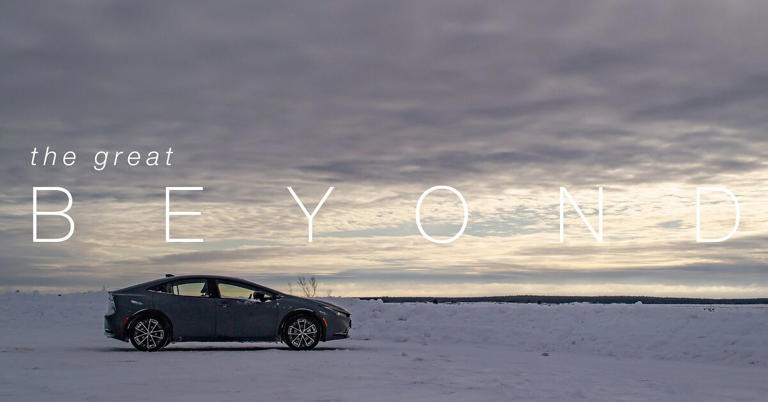

Can You Drive To Nunavut?
Nunavut is Canada's largest province, a stunning polar wilderness that is home to only 33,000 people. Made up of 25 indigenous Inuit communities, parts of Nunavut have yet to be fully explored. It's easy to see why this beautiful region has piqued the interest of many travelers.
It is not possible to drive to or across Nunavut because there are no roads in this area. Instead, visitors arrive and travel between communities and islands by plane or boat, and can carry on their overland journey by snowmobile or dog sled.
It's a challenging journey to make it this far north, but travelers who come here will be rewarded with views of an unforgettable frozen landscape that's home to whales and polar bears, illuminated by the spectacular Aurora Borealis - otherwise known as the Northern Lights.
Can you drive to Nunavut?
Nunavut is located in the far north of Canada, extending far beyond the Arctic Circle. It borders the Northwest Territories of Canada and is separated from Greenland only by the 35 km wide Nares Strait.
Part of the Nunavut territory is attached to mainland Canada, but it also comprises many islands, stretching out around Hudson Bay, the Northwestern Passages and the Baffin Bay.
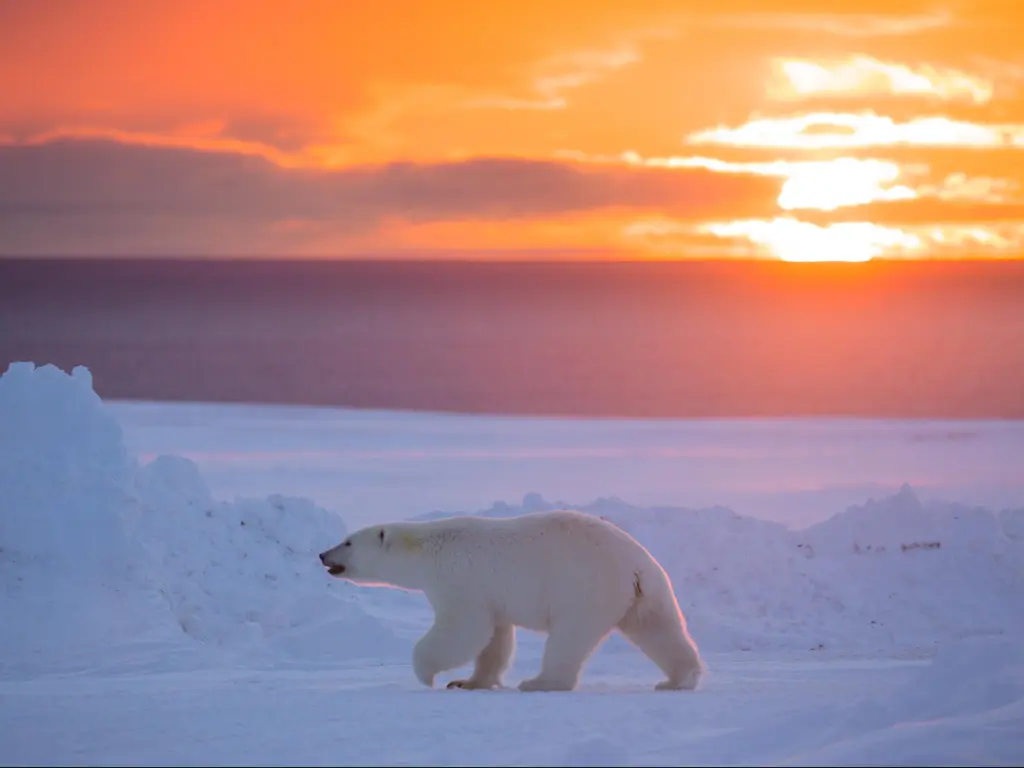
It's not possible to drive to Nunavut because there are no roads connecting it to other parts of Canada. Nor are there any roads between the 25 separate communities that inhabit the territory.
Instead, you can reach Nunavut by aeroplane using either Calm Air International or Canadian North. It's also possible to travel around Nunavut by boat, although options are limited because of the arctic conditions. Expedition cruises run from Toronto, and also include time in Greenland.
How to drive to Nunavut from mainland Canada
*Note: flight prices in the above table are approximate, for a round trip journey.
As it's not possible to drive to Nunavut, most visitors arrive by air. It's the most affordable way of travelling to the territory, with flights costing considerably less compared to an unforgettable round-trip cruise.
Most travellers come with organised groups, but if you're travelling independently, you're advised to use a local guide who can arrange your onward travel via snowmobile or dogsled.
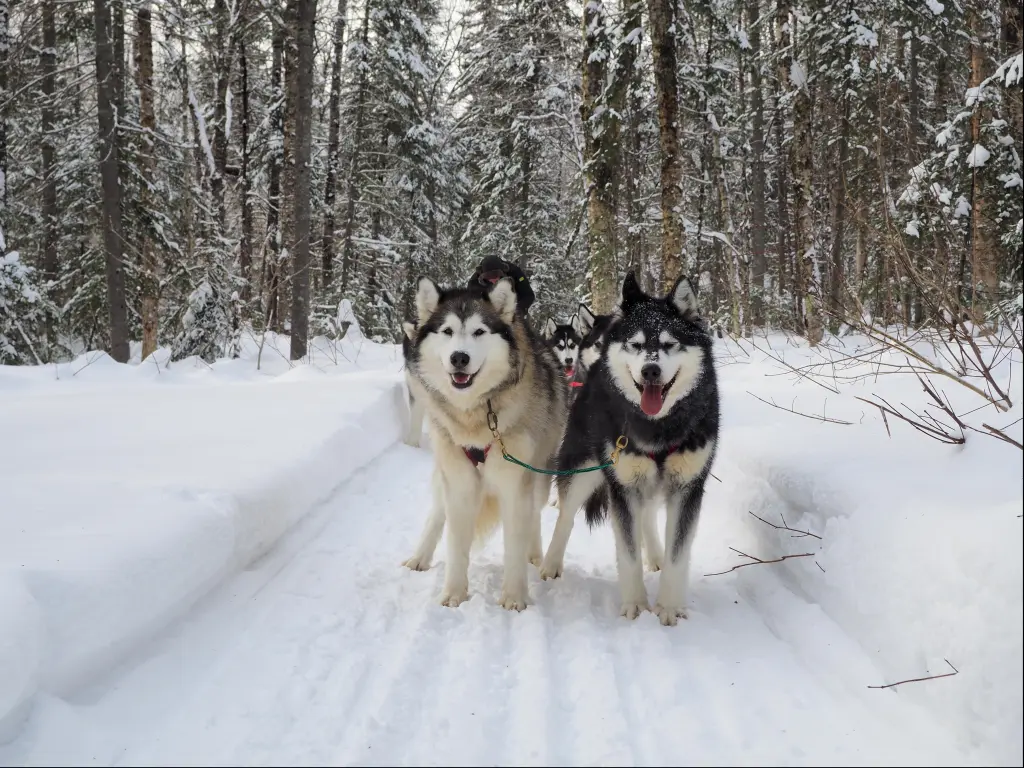
Internal flights are also available to other Nunavut destinations, allowing you to explore some of the more remote islands of this vast wilderness province.
What is the best way to get to Nunavut?
Flight times vary from different parts of Canada, with routes taking upwards of 3 hours unless you're starting from one of Canada's more northerly cities.
As you can see from the table above, there is also an option to get to Nunavut by boat. Here are our recommendations, depending on what you are looking for.
Which port or airport should you arrive at in Nunavut?
The most popular route to Nunavut is to fly into Iqaluit, the Capital of Nunavut province. There are direct flights from Ottawa and Yellowknife. Flights from Ottawa take around 3 hours while flights from Yellowknife take 3 hours and 20 minutes.
Visitors to Iqaluit, where you'll find the territory's largest community, can spend time at Unikkaarvik Visitor Centre to find out more about the region, or visit Sylvia Grinnell Park. There are also displays of Inuit art, culture and history at Nunatta Sunakkutaangit Museum.
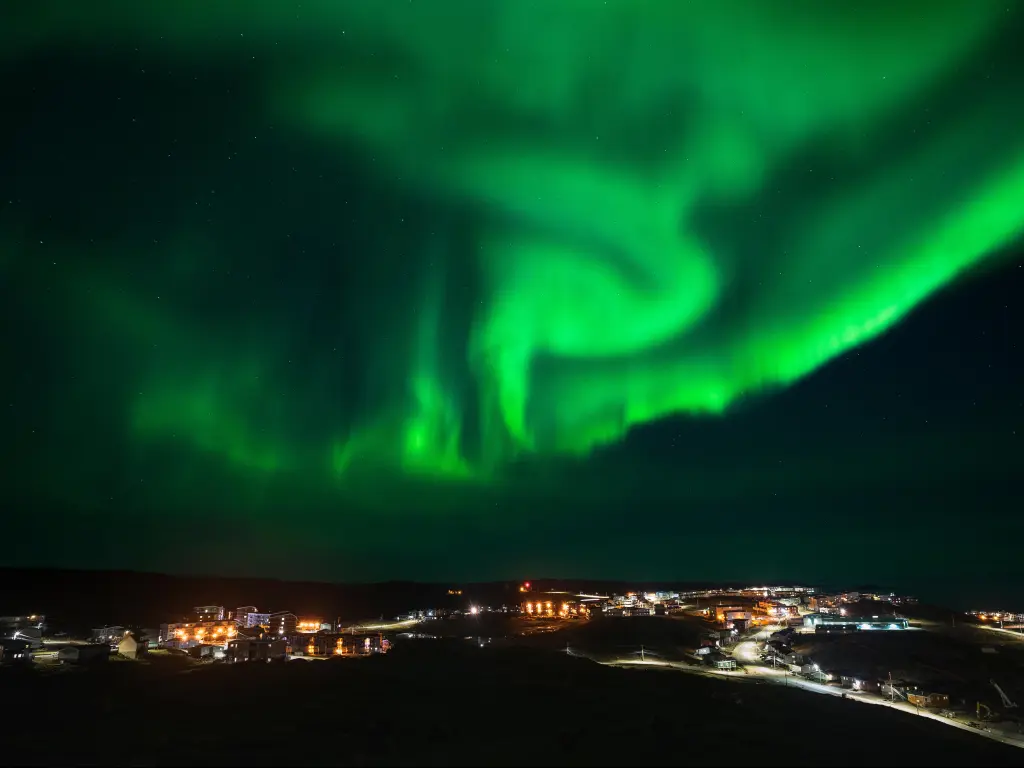
As well as being the most affordable way of getting to Nunavut, flying to Iqaluit means you can make use of internal flights, to further explore the province. There are also cruises which depart from Iqaluit, such as the 4-day ‘Guided Northern Lights Getaway' and ‘Taste of the Arctic Summer'.
If you're planning on exploring the region's icy waterways, Cambridge Bay Airport is a good place to start your trip. In Cambridge Bay you'll find the Arctic Coast Visitor Center and Canadian High Arctic Research Station, as well as Ovayok Park.
A third option is to fly to Rankin Inlet to explore Iqalugaarjuup Nunange Territorial Park or visit Matchbox Gallery, before heading on to see other parts of Nunavut. This is a spectacular place for whale watching, with boats taking along the Marble Island Coast.
The table below summarizes the main arrival points in Nunavut and the closest places and attractions nearby.
Things you need to know about driving to Nunavut
Nunavut is a destination that you have to book well in advance as spaces are limited, and think carefully about the time of year you plan to travel.
Flights are more expensive in May, June and July, while October tends to have the cheapest flights. Flight and cruise packages only sail in the summer months between June and August due to ice.
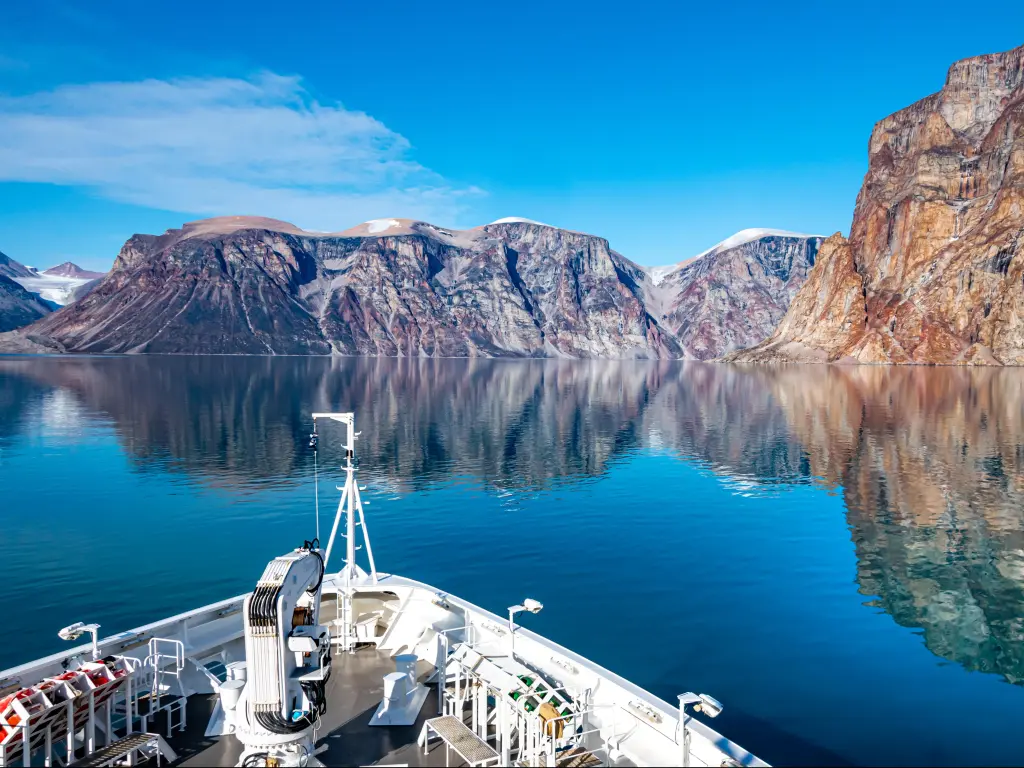
If you're travelling from outside Canada, you'll need a valid passport that's in date for the length of your stay - check for specific requirements relating to your nationality travel documents. You'll also need to provide proof of a return journey.
Travellers from outside the USA and Canada also require Electronic Travel Authorisation. You can complete this online before your travel date at a cost of $7 CAD. If you're entering from the USA, make sure you also have identification proving your residence.
Here are our top tips when it comes to preparing for a drive to Nunavut
- Dining is expensive because it's so remote. Using a cruise operator that includes meals will make the trip easier. If you are an adventurous foodie, native foods include raw seal and polar bear.
- If you book a cruise, because there are no deep seaports, you'll have to get on a smaller boat to reach land.
- It's in the Arctic circle, so it'll be very cold. Temperatures can go as low as -29 degrees Fahrenheit in winter. Make sure you have the proper clothing and take parkas, balaclava, mitts, and quick-dry wind pants.
- In comparison, in summer, it's around 30-40 degrees Fahrenheit. It's still cold, but warmer than winter. Even so, remember, you'll need multiple layers of clothing in summer.
- If you want to hike or canoe, visit during August and September when the landscape is more walkable, and the seas are less frozen.
- But if you want a full frozen Arctic experience, go from February to April. Between November and February is very cold and dark so it isn't advised.
- The Arctic landscape of Nunavut can be treacherous at times, so always take careful note of local advice. Your best bet is to hire a local guide to help ensure your trip is safe and well-planned.
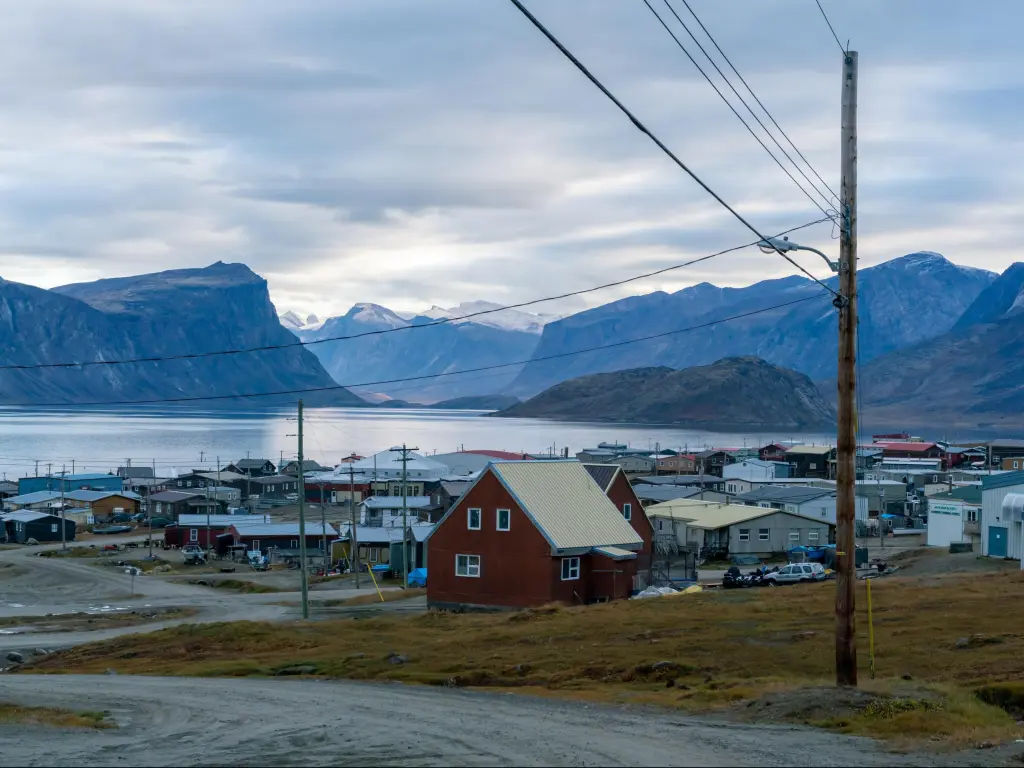
Things to see once you reach Nunavut
The main attractions of Nunavut are the unique things you can do here, rather than the man-made monuments you might visit in other parts of the world.
- The Northern Lights ( Aurora Borealis) - This bucket list sight, with colourful green, blue and pink lights that dazzle the night sky can only be seen from a few parts of the planet. Because of the lack of light pollution, Nunavut is a great place to see this natural spectacle.
- Dog sledding - With the lack of roads, dog sledding is a popular form of transport in Nunavut. Although snowmobiles are now more common and practical, local communities still offer dogsled tours.
- Wildlife spotting - In Nunavut you can witness Arctic animals such as seals, walruses, beluga whales and polar bears in their natural habitat. With this comes once-in-a-lifetime photo opportunities.
- Photography - With this in mind, Nunavut is a popular destination for photographers who take a pilgrimage to snap the icebergs and magnificent arctic landscape, as well as the unique wildlife.
- Visit local communities - Inhabited by native Inuit people, some communities welcome visitors who come to learn about their culture. You can also try traditional arts, dance to historic drums and see how they hunt to survive in the Arctic conditions.
- Kayak or canoe - With no deep seaports, you can kayak or canoe through arctic surroundings. It's always recommended to ask guides for help or to leave a travel itinerary with a responsible body.

A trip to Nunavut is one of those rare, once-in-a-lifetime adventures that still offers the chance of a glimpse into a different world. While the cost of travelling here is high, if you're able to take the trip you'll be rewarded with unforgettable memories of this remote Arctic wilderness.
Join our email list!
By joining our email list, you give LazyTrips permission to use your email for sending you newsletters, emails and updates including for marketing purposes. Your email will not be provided to third parties.
Already have an account? Log in
Book your individual trip , stress-free with local travel experts
Select Month
- roughguides.com
- North America
- Travel guide
- Itineraries
- Travel Advice
- Accommodation
Plan your tailor-made trip with a local expert
Book securely with money-back guarantee
Travel stress-free with local assistance and 24/7 support
Home to only 32,000 people, Nunavut (meaning “Our Land” in Inuktitut, the Inuit language) covers almost two million square kilometres – a fifth of Canada’s land surface and an area five times the size of California, stretching west from Hudson Bay then north through the great “Barrenlands” of the interior to the Arctic islands in the north. From its western edge to the tip of Baffin Island in the east is 2000km (the distance from Washington DC to Denver). From north to south it’s even more of a span – 2500km, the distance from London to Moscow.
Auyuittuq National Park
The northwest passage.
Long an amorphous political entity administered by the federal government, the Northwest Territories was formally divided on April 1, 1999, by a land treaty which split the old territories in two and created a new central and eastern Arctic territory termed Nunavut. The signing followed fifteen years of low-profile but effective negotiating and campaigning and produced the largest land deal in Canadian history, in which the Inuit regained possession of their homeland (valued at $1.15 billion) in return for renouncing all their claims to the remainder of the NWT. One practical effect has been the renaming of most of its 28 settlements with Inuit names, though in many cases English-language names have continued to stick.
Nunavut is the land of musk ox, polar bears, vast caribou migrations, millions upon millions of migrating songbirds and endless horizons of fish-filled lakes and rivers. The region is also home to ten-thousand-year-old glaciers, deep fjords, impressive mountain ranges and endless kilometres of open tundra. Besides the wildlife and breathtaking landscapes , there are a host of activities, including fishing and high-adventure outdoor pursuits. Add to these the wide spectrum of living cultural treasures , from Inuit printmakers and carvers to traditional drummers and “throat” singers.
Most of the region’s communities are formed of indigenous Inuit and lie in the Kivallliq region on the arc of Hudson Bay’s western coast, and encompassing Baker Lake , Nunavut’s only inland community. In these settlements you will find that the Nunavummiut , or Inuit of Nunavut, continue to honour their traditional lifestyle, culture and ancestors. The remainder of Nunavut’s population live even further north in the scattered communities dotting Baffin Island and its surrounding archipelago. The capital, at Iqaluit on Baffin Island, is home to nearly one-fifth of the territory’s population.
Although you’ll find an old way of life and stunning Arctic landscapes, don’t be alarmed by the physical appearance of most villages; housing here is at a premium and many buildings and infrastructure suffer the effects of the Arctic’s harsh and changing environment. Houses are built on stilts and sit high above the permafrost layer, while some are even cabled down to prevent them from blowing away during the fierce arctic winds. All building supplies, canned grocery goods and supplies must be shipped in by sealift, which arrives once or twice a year during the brief ice-free months between July and early October. Despite the rundown appearance of these places, it is the warmth and generosity of the Inuit who live there that make staying here an unforgettable experience.
Straddling the Arctic Circle on the northeast coast of Baffin Island, Auyuittuq National Park is one of the most spectacular destinations in the Canadian North. The heart of the park is the massive Penny Ice Cap , a remnant of the ice sheet that extended over most of Canada east of the Rockies about eighteen thousand years ago, and the 110km Pangnirtung/Akshayuk Pass , a major hiking route which cuts through the mountains between Cumberland Sound and the Davis Strait. Auyuittuq is Inuktitut for “the land that never melts” but despite the unrelenting cold in summer the sparse tundra plants do bloom and chance encounters with arctic hares and foxes, polar bears, Canada geese, snowy owls and gyrfalcons are a possibility. Just offshore you may spot narwhal, walrus, bowhead and beluga whale, as well as harp, ringed and bearded seals. Yet the main attraction is not necessarily the random, rare wildlife sightings, but the sheer rugged beauty and raw power of the dramatic landscape.
Services within the park are extremely limited and the weather is highly unpredictable. Snowstorms, high wind and rain occur frequently, and deaths from hypothermia have been known even in summer. All-weather hiking gear is essential, as is a walking stick to assist you with the ice-cold stream crossings which occur every 200–300m and can be waist-high in July. There is no wood for fuel, so a camping stove is essential.
Distinct from all other Canadian Aboriginal peoples by virtue of their culture, language and Asiatic physical features, the Inuit are the dominant people of a territory extending from northern Alaska to Greenland. They once led a nomadic existence in one of the most hostile environments on earth, dwelling in igloos during the winter and skin tents in the summer, moving around using kayaks ( qajaq ) or dog sleds ( qamutik ). The latter were examples of typical Inuit adaptability – the runners were sometimes made from frozen fish wrapped in sealskin and caribou bones were used for crossbars.
Animals from the land and sea – caribou, musk ox, seal, walrus, narwhal, beluga whales, polar bears, birds and fish – provided everything: oil for heating and cooking, hides for clothing and tents, harpoon lines and dog harnesses and food.
The Inuit diet was almost entirely meat based, and every part of the animal was consumed, usually raw, from the eyeballs to the heart. Delicacies included the plaited and dried intestines of seals and whole sealskins stuffed with small birds and left to age until the contents had turned to the consistency of cheese. All food was shared among the community and the successful hunter had to watch his catch being distributed among other families in the group, in accordance with specific relationships, before his own kin were allowed the smallest portion. Starvation was common – it was not unusual for whole villages to perish in the winter – and consequently infanticide , particularly of females, was employed to keep population sizes down. Elders who could not keep up with the travelling group were abandoned, a fate that also befell some offenders of the social code – though the usual way of resolving conflict was the song-duel , whereby the aggrieved would publicly ridicule the behaviour of the offender, who was expected to accept the insults with good grace.
It was a woman who often served as the shaman , or angakok , maintaining the group’s communion with the supernatural. The deity who features most regularly in Inuit myth is a goddess called Sedna , who was mutilated by her father. Her severed fingers became seals and walruses and her hands became whales, but Sedna lived on as the mother and protector of all sea life, capable of withholding her bounty if strict taboos were not adhered to, including keeping land and sea products separate.
Sporadic European contact dates back to the Norse settlement of Greenland, and early missionaries did visit some Inuit. It wasn’t until the early 1800s that the two cultures met in earnest. By 1860 commercial whalers had begun wintering around the north of Hudson Bay, employing Inuit as crew and food hunters in return for European goods. The impact on the Inuit was not really deleterious until the arrival of American and European whalers in 1890, when the liberal dispensing of alcohol and spread of diseases (smallpox and tuberculosis) led to a drastic decline in population.
By the early 1900s fur traders were encouraging the Inuit to stop hunting off the coast and turn inland, using firearms and traps. The accompanying missionaries brought welcome medical help and schools, but put an end to multiple marriages, shamanism and other traditional practices. More changes came when Inuit were employed to build roads, airfields and other military facilities during World War II, and to construct the line of radar installations known as Distant Early Warning system (DEW) in the Cold War era. As well as bringing new jobs, this also focused government attention on the plight of the Inuit.
The consequent largesse was not wholly beneficial: subsidized housing and welfare payments led many Inuit to abandon their hunting camps and settle in permanent communities . Without knowledge of English and French, these Inuit were left out of all decision-making and often lived in separate parts of towns administered by outsiders, and high levels of depression, alcoholism and violence became the norm. A 1982 ban on European imports of sealskins created mass unemployment , and although hunting still provides the basics of subsistence, the high cost of ammunition and fuel makes commercial-scale hunting uneconomical.
And yet it’s not all gloom. Inuit co-operatives are increasingly successful and the production of soapstone carvings – admittedly a commercial adulteration of traditional Inuit ivory art – is very profitable. Having organized themselves into politically active groups and secured land claims such as Nunavut, the Inuit are now slowly rebuilding an ancient culture that was shattered in under half a century.
The fabled Northwest Passage across the top of Canada’s Arctic continues to exert a romantic allure – and, in the wake of oil discoveries in the far North, an increasingly economic one. The world’s most severe maritime challenge, it involves a 1500km journey from north of Baffin Island to the Beaufort Sea above Alaska. Some fifty thousand icebergs line the eastern approaches and thick pack ice covers the route for nine months of the year, with temperatures rising above freezing only in July and August. Perpetual darkness reigns for four months of the year and thick fog and blizzards can obscure visibility for the remaining eight. Even with modern technology navigation is extremely difficult: little is known of Arctic tides and currents; sonar is confused by submerged ice; and the featureless tundra of the Arctic islands provides the only few points of visual or radar reference.
John Cabot can hardly have been happy with Henry VII’s 1497 order to blaze the northwest trail, the first recorded instance of such an attempt. The passage subsequently excited the imagination of the world’s greatest adventurers, men such as Sir Francis Drake, Jacques Cartier, Sir Martin Frobisher, James Cook and Henry Hudson – cast adrift by his mutinous crew in 1611 when Hudson Bay turned out to be an ice-bound trap rather than the actual passage.
Details of a possible route were pieced together over the centuries, though many paid with their lives in the process, most famously Sir John Franklin , who vanished into the ice with 129 men in 1845. Many rescue parties set out to find Franklin’s vessels, HMS Erebus and HMS Terror , and it was one searcher, Robert McClure , who – in the broadest sense – first transited the route in 1854. Entering from the west, he was trapped for two winters before sledging to meet a rescue boat coming from the east. Norwegian Roald Amundsen made the first sea crossing in 1906, but only after a three-year voyage. The first single-season traverse was made by a Canadian Mountie, Henry Larsen , in 1944 – his schooner, the St Roch , is now enshrined in Vancouver’s Maritime Museum.
The Rough Guides to Canada and related travel guides
In-depth, easy-to-use travel guides filled with expert advice.
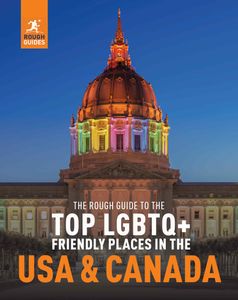
Find even more inspiration for Canada here

Planning your own trip? Prepare for your trip
Use Rough Guides' trusted partners for great rates
written by Rough Guides Editors
updated 26.04.2021
Ready to travel and discover Canada?
Get support from our local experts for stress-free planning & worry-free travels.
- Travel advice
- Where to stay
- Account Settings
- Aston Martin
- Lamborghini
- Mercedes-Benz
- Rolls-Royce
Car Reviews
Car comparisons, auto resources.
- Auto Insurance
- Auto Glass Repair
- Auto Warranty
- Product Roundups
Top stories

- Manufacturers
The Great Beyond: Road Trip to Nunavut

A 3,295-km road trip shows why electrification is crucial—and how far we still have to go.
Luck. It’s something we attribute to many aspects of life, sometimes unfairly. But it’s the word I’d choose to explain how I ended up on a 3,295-kilometer (2,047-mile) road trip to Nunavut, Canada’s northern-most territory. In February. Rewind a few months and at a wholly unrelated event, I wandered into a conversation at precisely the right time. Why do it? Ostensibly, to highlight the abilities of a pair of Toyotas in weather most buyers will never have to endure. But also, simply because we can—the truest form of a road trip.
The end result was a fascinating and at times breathtaking view of Canada’s northern reaches. It was also an easier trip than I believe any of us expected, not just because of the reliability of our chosen rides, but the unseasonably mild weather.
The first leg: Orillia to Matagami
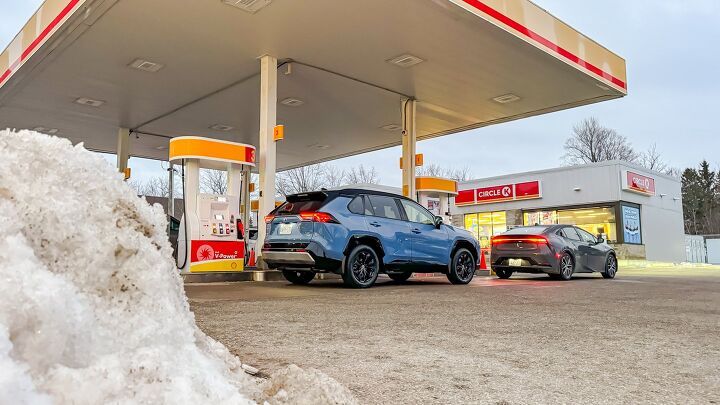
The adventure starts like many do: inauspicious. Friend and fellow journalist Dan Ilika and I make our way out of Toronto in a Toyota RAV4 Hybrid XSE, a blue example of America and Canada’s best-selling SUV, built just down the road in Cambridge. We’re beelining to Orillia to meet up with Mark Richardson, the man with the plan and two previous trips up this way under his belt. Joining Richardson in the Prius is German journalist Jens Meiners.
After a thorough raiding of the local Wally World, both vehicles are well-stocked with water, rations, and some rudimentary safety supplies. We top up both at the nearest gas station, zero out the odometers, and away we go. It’s a straight shot up Highway 11 pretty much right until we cross into Quebec, which is where we’ll do the bulk of the distance.

This first day serves as a great refresher course on these two vehicles. Netting a bit more time in the RAV4, it’s easy to see why Toyota moves half a million of these things a year in Canada and the USA. What’s more, the share of hybrid models is steadily increasing: over half in Canada in 2023, and a smidge above 43 percent down south. The RAV4 is fool-proof in operation, with simple controls, good visibility, and—crucially—comfortable seats. Toyota’s hybrid system is a finely-honed setup at this point, taking all guesswork out of the driver’s equations. It seamlessly shifts between gas and electric, or a combination of the two, without hiccups or lag, even as the mercury continues to dip.
There are just less instances of pure electric, resulting in the RAV4 blowing past its official 6.0 L/100 km (39 mpg) average by nearly a third. In its defense, we’re firmly in triple-digit territory for most of this section, and even if the weather is warmer than usual, we’re talking below freezing.

The Prius fares little better. This model is AWD too—standard in Canada, but optional in the US—and matches the RAV4’s official figure. Only the car’s own score should be 4.8 L/100 km (49 mpg), so it’s off by about a quarter.
As gas stations start becoming fewer and further between, we make a habit to top up frequently. The four of us regularly swap around driver pairings, share stories, and chat on the walkie talkies, helping a long day feel appreciably shorter. The sun sets a little past Amos, QC; we press on to Matagami a little slower, mindful of the wildlife and the only-okay illumination provided by the Bi-LED headlights of the Toyotas. We roll into the quiet town and make for the one open restaurant, where generous servings of poutine ensure a sound sleep.
The second leg: Billy Diamond Highway

We’re up and into the cars right as the sun starts to peak out Tuesday morning. Unbeknownst to us at the time, this will be the last time we see any other electrified vehicles for two days.
Stretching some 620 km (385 mi), the highway was built in the ‘70s to service the enormous hydroelectric projects planned further north. Formerly James Bay Road, the Billy Diamond Highway received its new name in November 2020, in honor of the former Grand Chief of the Grand Council of the Crees. There is just one service center, open 24/7, located 381 km (237 mi) up the road. Similarly, a small office sits beside the start of the road, where visitors can check in. In earlier times, folks would be handed a satellite phone to later confirm they made it to their destination.

The visions of treacherous roads I had dreamed up in my head couldn’t be further from reality. The road is well-maintained, framed by huge hills of snow but otherwise clear. Occasional washboard surfacing is one minor annoyance—it’s the white birds that prove a more consistent one. The ptarmigans are everywhere and, as they have little to contend with beyond logging trucks, are almost completely nonplussed by us sailing past. One isn’t so lucky, and makes contact with the RAV4’s grille in an explosion of feathers straight out of a cartoon. I’ve insisted on referring to the SUV as “Duck” due to its license plate, but it earns a new name after a second takedown on our return trip: the Ptarmigan Pterror.
The Prius has no such problems. Toyota’s newly crowned NACTOY and Canadian Car of the Year is deceptively good at gobbling up the winter miles, that super-slippery shape keeping the cabin quiet. The ride isn’t quite as cushy as the big blue softie, but the trade-off is a more positive front-end. If only our infrequent stops didn’t keep bugging out the wireless Apple CarPlay—a problem both vehicles persist with through the trip. It’s not like we have any signal for 90 percent of the BDH, anyway.
We roll into Chisasibi right as the sun is setting. It’s a laidback night, for tomorrow we tackle the final challenge.
Chisasibi and the Nunavut technicality

Look, it’s important to get this out of the way here: it is not currently possible to drive to Nunavut on a permanent road. Oh, we get close: nearly every island in James Bay is technically Nunavut territory, and the bay itself is frozen solid. The road west out of town terminates at a small park, with only a small grade down to the ice. If we had a Tacoma, a cleared path down, and an almost complete lack of concern about making a very expensive phone call to Toyota, we could have done it.
Instead, we settle for a short ski-doo trip over, as local Steven Sam pulls us in a rudimentary wooden trailer. We make land on Sealskin Island, two Toyota headrests in hand, and admire the stark landscape. There are no seals here, only hearty moss and plenty of driftwood. Sam suspects the ice is only about three feet thick instead of the typical five. Climate change is real.

It’s a sentiment echoed by community elder Eddie Pashagumiskum. He grew up a couple hundred kilometers east of here—land that is still his, though he estimates around 80 percent is under water at this point. In addition to acknowledging climate change, Pashagumiskum laments the other challenges the northern community faces: the gradual loss of culture, and the talent draw as many younger folks move south to find jobs.
The electric trade-off

That evening, we drive to the reason for local land flooding all those decades ago: the massive Robert-Bourassa Reservoir. The eponymous hydroelectric generating station along with the La Grande-2-A station, are together the largest of their kind in Canada, and generate nearly a quarter of Quebec’s total electric capacity. The dam looms large as we approach, and it only gets bigger. The causeway looks like a play area for gods, an 100-meter trough right through the wilderness.
There are no electric car chargers here. The same is true in Chisasibi—a community that literally sprung into existence in response to the dam’s impact on the local environment. The cost to create charging infrastructure here would be prohibitive—the distances between locations, hardly tenable. The more typical -30 degrees C weather of this time of year would demolish EV ranges.

Yet Canada, like many parts of the world, is targeting a near-total ban on combustion engines in a little over a decade. It’s easy to toss out stats, such as 90 percent of Canadians live within 100 miles of the US border, but the sheer size of the country means communities like Chisasibi are often overlooked in idealized electrified visions.
The irony is not lost on us. We’ve burned through around 480 liters (125 gallons) on this round trip. We’ve heard the stories of the people, seen the remoteness that makes pure electric simply impossible short-term. The entire trip saw temps well above average; we came back to Toronto the same Friday the city broke an 80-year-old record for warmth. The ice, it’s only three feet deep.
Both the Prius and RAV4 dramatically improve consumption (and reduce pollution) over gas-only equivalents. Toyota argues hybrids are the way forward, typically alongside a swipe at pure EVs—and I get it, that short term, hybrids make a significant improvement with little sacrifice. Even if enough rare materials exist to switch over the entire global fleet of automobiles to pure electric, there will be remote communities that will struggle to adapt. If anything, this road trip has reinforced the idea that a versatile, adaptable electrification plan is required, one that leaves nobody behind. Luck alone won’t save us.
Become an AutoGuide insider. Get the latest from the automotive world first by subscribing to our newsletter here .

Kyle began his automotive obsession before he even started school, courtesy of a remote control Porsche and various LEGO sets. He later studied advertising and graphic design at Humber College, which led him to writing about cars (both real and digital). He is now a proud member of the Automobile Journalists Association of Canada (AJAC), where he was the Journalist of the Year runner-up for 2021.
More by Kyle Patrick
Join the conversation
Popular articles.

Run As Fast As You Can From Used Cars Made By These Brands

Affordable Cars With Surprisingly Higher-End Interiors: Top 10

Best Small SUV | Testing (almost) Every Compact SUV

AWD Hatchbacks: Top 10 Lowest Priced

Who Makes MINI Cooper and Where Are MINI Coopers Made?
Latest comparisons.

Subaru WRX TR vs Toyota GR Corolla Comparison

Comparison Test: 2024 Kia EV9 vs 2024 Mazda CX-90 PHEV

2024 Porsche Cayenne S and Cayenne Coupe Review

What’s the Difference Between the 2023 and 2024 Subaru Crosstrek?

Volkswagen Atlas SE Vs SEL: Which Trim is Right for You?
Car buying tools.
- How to Buy a Car
- Free dealer Price Quote
You may also be interested in

BFGoodrich All-Terrain T/A KO2 Tire Review
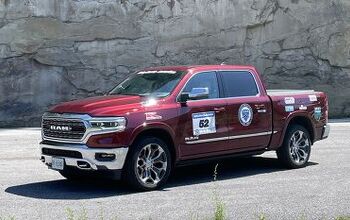
The Great American Road Trip is Alive and Well

5 Great Deals for Summer Road Trip Season

Continental ControlContact Sport A/S Tire Review: Great for a Summer Road Trip

How To Waste Less Oil in Older Vehicles

Are Budget Off-Road Tires Worth It?

2024 BMW M3 CS Review: Green Meanie
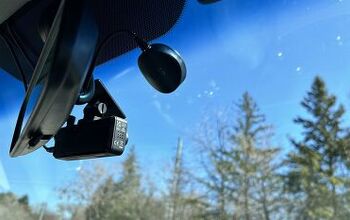
Thinkware Q200 Dash Cam Review: Simple, User Friendly, Affordable

13 Photos of the Crazy-Colored 2024 Easter Jeep Safari Concepts

3 Reasons the 2024 Hyundai Elantra is Still the Best-Value Compact Car

The AutoGuide Show Ep 13 - Best Cars to Modify, New Forester and More

Ford Files 'RS200' Trademark in Europe, Bringing Back Historic Name

2024 BMW X2 xDrive28i Review: Baby Grows Up

Nissan Teases Next Armada With Patrol Roots


2024 Hyundai Santa Fe NHL Edition Comes With a Signed Bedard Jersey

2025 Jeep Wagoneer S Revealed: Meet the 600-Horsepower Grand Cherok-EV
How To Get Here
Nunavut is massive. It occupies a fifth of Canada – which is over 1 million square kilometres. Seeing all of it in one visit is not practical for most visitors. Its important you know where you want to go when planning your trip – after all, there is no highway you can pull a U-turn on and head back to another community. Getting here is part of the adventure.
All communities in Nunavut are accessible by air. You’ll find yourself flying on Canadian North, Calm Air or Chrono Aviation to get into the territory. The gateway cities to Nunavut are mostly served by jet service.
- Montreal (to Iqaluit)
- Ottawa (to Iqaluit)
- St. Hubert (to Iqaluit)
- Winnipeg (to Rankin Inlet)
- Yellowknife (to Cambridge Bay)
Once you get to Nunavut, if you’re continuing from one of the hubs to another community, you’ll be flying on a smaller plane likely. Pack your patience – the weather is boss in Nunavut which can sometimes mean waiting around in airports.
Cruise Access
Cruise ships are an excellent way to see unique parts of Nunavut. In addition to landing in some the most beautiful and inspiring communities, cruises also allow you to land at some unique historical sites and parks. Cruise ships visit Nunavut from July – October and your route will vary based on which ship you are travelling on. Adventure Canada and Quark Expeditions are great places to start your planning.
Nunavut is the only province or Territory in Canada that is accessible only by air or sea.
Getting here is part of the adventure.
Start typing and press enter to search

How to Take an Epic Canadian National Parks Road Trip
By: Author Taryn Eyton
Posted on Last updated: September 12, 2024

If you think of National Parks in Canada, you probably think of the famous National Parks in Canada’s Rocky Mountains near Banff. And yes, the mountain parks are spectacular. But… Canada is a REALLY big country with a REALLY varied landscape. And we have dozens of National Parks spread all the way from sea to sea, to sea. (That last “sea” is the Arctic if you weren’t sure.)
I have visited a lot of Canada’s National Parks. Recently I wanted to figure out how many parks I had left to visit, and the best way to see them. I’ve also driven across Canada twice, and I know it’s a beautiful trip.
I had a look at a map and figured out that while some Canadian National Parks are fly or boat-in only, most of them are easy to reach on a road trip. And actually, you could design a really epic road trip from coast to coast that includes most of the National Parks plus lots of Canada’s major cities.
So I sat down with google maps and worked one out for you! Here is my guide to the ultimate Canadian National Parks road trip. Enjoy!
Psst! Do you love national parks? Check out my list of the best Canadian national parks gifts
Hey there: Some of the links in this post are affiliate links, which means I earn a small commission at no extra cost to you if you make a purchase. Thanks for supporting my website! -Taryn
Table of Contents
Canadian National Parks Road Trip Planning
As of 2019, Canada has 48 National Parks. Thirty-one of them have road-access. (You have to fly or boat into the others.) I’ve used Google maps to design a cross-Canada road trip that visits all 31 of those parks with the least amount of backtracking possible. In most places, the route stays close to the trans-Canada highway, so it’s easy to take short detours off the cross-Canada route to visit National Parks.
This road trip visits every single Canadian province and two territories. (Nunavut isn’t connected to the road network. That means it’s not even possible to road trip there!) It includes 31 National Park and also visits lots of major Canadian cities and provincial capitals, since you’ll have to to eat some great food and soak up some culture now and then.
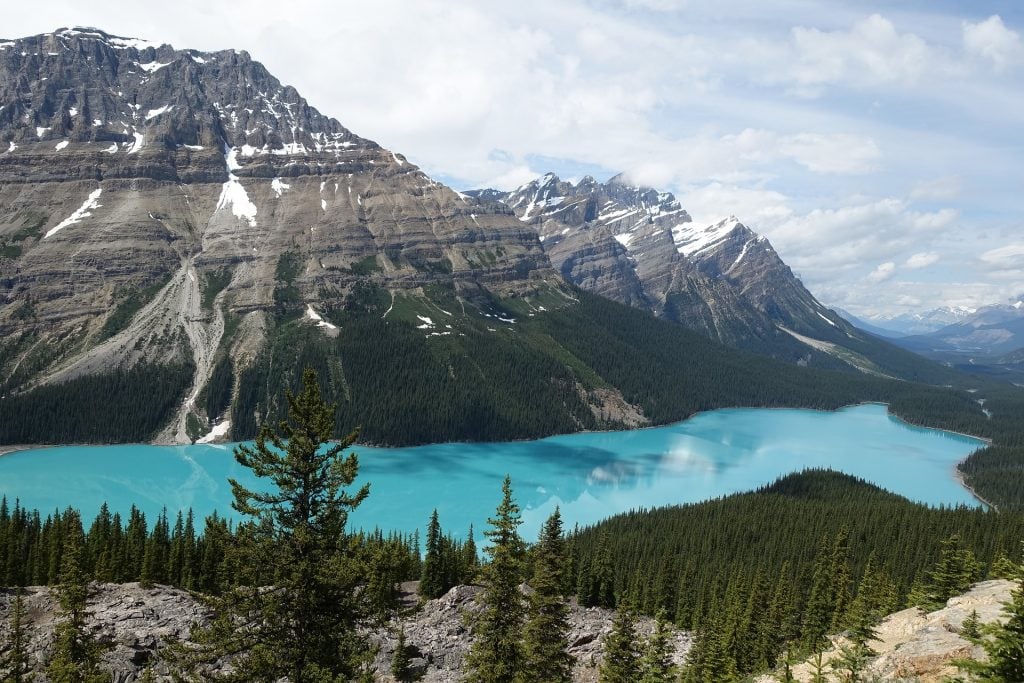
The entire Canadian National Parks road trip involves over 19,000km (11,800 miles) of driving. And lots of the parks are REALLY big. For example, Wood Buffalo National Park is larger than the entire country of Denmark! (For more fun trivia, check out this list of 155 crazy facts about Canada ).
At a minimum, it would take about a month or two to complete the entire trip, but it would be REALLY rushed. Ideally, I would set aside at least 4 months for this epic road trip, but ideally closer to 5 or 6 months to really spend time in each place.
Of course, that’s a lot of time off for most people, so if you don’t have that much time, take a few weeks to just do a section. Some of the areas I’ve enjoyed the most are the Rocky Mountain parks in BC and Alberta, and the Atlantic Canadian provinces, especially Newfoundland.
Weather in Canada is no joke. By far the best time of year to do this road trip would be the summer months of June to September. May and October are also nice unless you are in the north. Theoretically, you could do this trip at any time of year with good snow tires and some winter driving experience, but many of the parks have reduced services in the winter or close completely.
Canadian National Parks Road Trip Map
Here’s the custom google map of Canada’s National Parks I’ve made for you. Click to explore the map. The National Parks you can visit by car are in green. Parks you have to fly or boat into are in red. The blue line is the epic Canadian National Park road trip route.

Canadian National Parks Road Trip Itinerary
Here’s a list of every single National Park in Canada visited on the road trip, in order from west to east. It also includes important cities and provincial capital cities. I’ve listed every National Park and city I have visited in bold. That means I’ve been to 17 of the 31 parks on this road trip already! Just 14 to go!
- Victoria, British Columbia
- Pacific Rim National Park (Read about the West Coast Trail in Pacific Rim)
- Gulf Islands National Park
- Vancouver, British Columbia ( Read Vancouver area posts )
- Mount Revelstoke National Park
- Glacier National Park
- Kootenay National Park (Read about the Rockwall Trail in Kootenay National Park)
- Waterton Lakes National Park
- Calgary, Alberta
- Banff National Park (Read about h ow to visit Banff in the fall and what to do in Banff in the spring )
- Yoho National Park
- Jasper National Park
- Whitehorse, Yukon Territory
- Kluane National Park
- Wood Buffalo National Park
- Edmonton, Alberta
- Elk Island National Park
- Prince Albert National Park
- Saskatoon, Saskatchewan
- Grasslands National Park
- Regina, Saskatchewan
- Riding Mountain National Park
- Winnipeg, Manitoba
- Pukaskwa National Park
- Georgian Bay Islands National Park
- Bruce Peninsula National Park
- Point Pelee National Park
- Toronto, Ontario
- Rouge National Urban Park
- Thousand Islands National Park
- Ottawa, Ontario
- Montreal, Quebec
- La Mauricie National Park
- Quebec City, Quebec
- Mingan Archipelago National Park
- Forillon National Park (Read my friend Josanne’s guide to hiking and camping in Forillon National Park )
- Kouchibouguac National Park
- Fredericton, New Brunswick
- Fundy National Park
- Prince Edward Island National Park
- Charlottetown, Prince Edward Island
- Halifax, Nova Scotia
- Keijimkujik National Park
- Cape Breton Highlands National Park
- Gros Morne National Park (Read about the Long Range Traverse in Gros Morne)
- Terra Nova National Park
- St. John’s, Newfoundland and Labrador (Read my list of the best things to do in St. John’s )
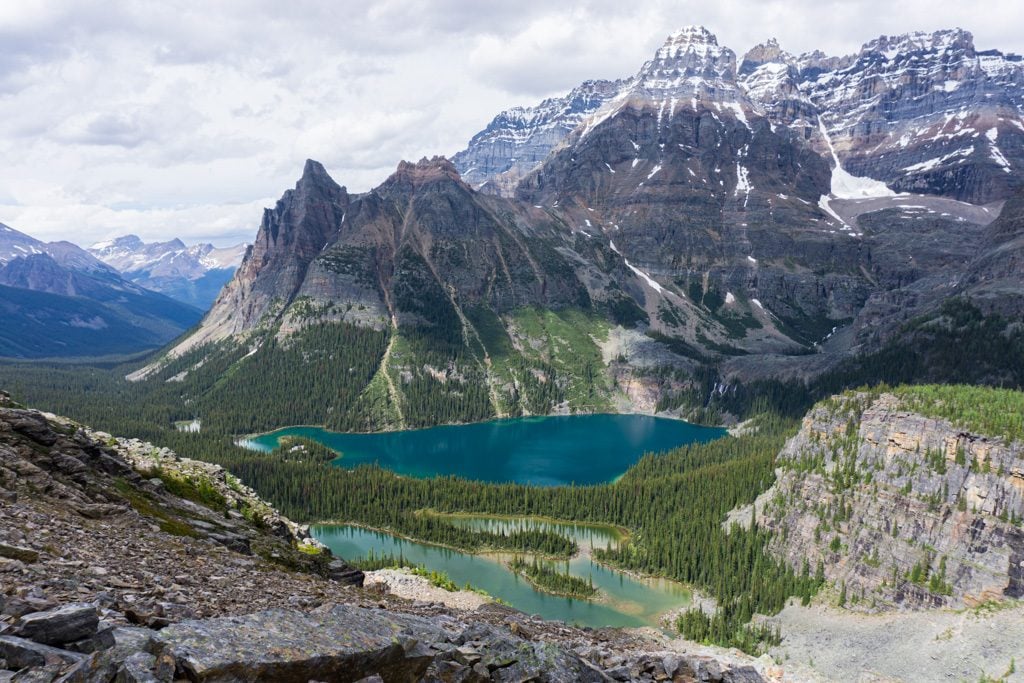
Canadian National Parks Without Car Access
While they are difficult to get to, and in many cases pretty expensive, I’d love to visit some of Canada’s more remote National Parks. Here are the other 17 National Parks that require charter flights or boats to reach. I’ve included info on their location and how to get there if you’re curious.
Akami-Uapishkᵁ-KakKasuak-Mealy Mountains National Park Reserve: Located in southeastern Labrador, the only way to reach this park is to fly in from the town of Happy Valley-Goose Bay.
Aulavik National Park: This park is on the north end of Banks Island, an arctic island in the North-West Territories. To get there, you’ll fly in from Inuvik, NWT.
Auyuittuq National Park: To get to this park on the southern end of Baffin Island in Nunavut, you charter a flight from Iqaluit, NU.
Gwaii Haanas National Park Reserve: This national park is located in the southern end of Haida Gwaii (also known as the Queen Charlotte Islands) off the west coast of British Columbia. To get to Haida Gwaii, drive your car onto the passenger ferry in Prince Rupert, BC. Once you’re on the island, you can take a boat or a float plane from Queen Charlotte City into the park. Read my guide to Gwaii Haanas National Park Reserve .
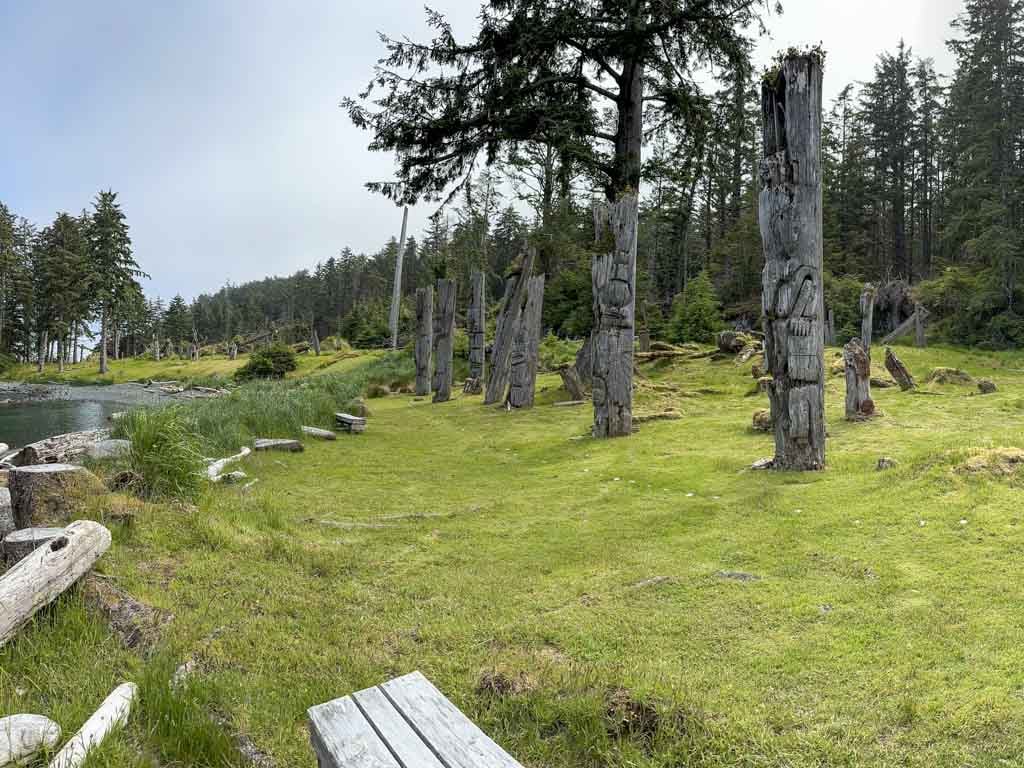
Ivvavik National Park: This park is located along the Arctic Ocean in the northern part of the Yukon Territory. The only way to get there is to charter a flight from Inuvik, NWT.
Nááts’įhch’oh National Park Reserve: This Canadian national park is located in the North West Territories near the border with Yukon Territory. To get there, you’ll need to fly to the remote communities of Norman Wells, Tulita, or Fort Simpson, NWT, and then charter a floatplane into the park.
Nahanni National Park Reserve: Located in the southwestern part of the North West Territories, you can only reach Nahanni National Park by floatplane. Charter one in Fort Simpson or Yellowknife (NWT), Watson Lake (YT), or Muncho Lake (BC).
Qausuittuq National Park: This park is located on Bathhurst Island in Nunavut’s high arctic. To get there, you can fly in from Iqaluit, Nunavut.
Quttinirpaaq National Park: Canada’s northernmost National Park, this park is located on Ellesmere Island. To get there, you’ll have to fly in from Iqaluit, Nunavut to Resolute Bay, then into the park.
Sable Island National Park Reserve: Located in the Atlantic Ocean off the coast of Nova Scotia, Sable Island is a giant sand bar with a population of wild horses. The only way to reach it is by charter flight from Halifax, NS.
Sirmilik National Park: This arctic National Park is on the northern end of Baffin Island in Nunavut. To get there, fly from Iqaluit to Pond Inlet or Arctic Bay, then snowmobile or boat into the park.
Thaidene Nene National Park Reserve: This brand new National Park was just created in 2019. It’s located on the eastern end of Great Slave Lake in the North West Territories. The only way to get there is by boat or floatplane from Yellowknife.
Torngat Mountains National Park: Located in northern Labrador, the easiest way to get there is to take a charter flight from Happy Valley-Goose Bay, Labrador to Saglek airstrip at the southern end of the park. From there you can take a boat or helicopter into the park.
Tuktut Nogait National Park: This northern park is located in the North West Territories near the border with Nunavut. To get there, book a charter flight from Inuvik, NWT.
Ukkusiksalik National Park: Located in Nunavut near Hudson’s Bay, the only way to reach this park is by charter flight from Baker Lake, Rankin Inlet, or Naujaat, Nunavut then boat or fly into the park.
Vuntut National Park: This National Park is located near the Alaska border in Yukon Territory. To get there, fly to Old Crow, Yukon, then fly or paddle into the park.
Wapusk National Park: Located in the heart of polar bear country on Hudson’s Bay in Manitoba, this park can be reached by boat, snowmobile, plane or dog team from the town of Churchill, Manitoba.
Canadian National Parks Resources
- Parks Canada’s website is your best source for up to date info on the parks. You can also buy National Parks passes online . For an extended trip, the best deal is the Discover Pass, which gets you in to all parks for a year.
- To help plan your trip (and get excited about what you’ll be seeing) the National Geographic Guide to the National Parks of Canada is a great choice. National Geographic also has a great bundle of maps of Canada . They’re waterproof and tear-resistant so they’re great on the road or for at-home planning.
- For general Canada travel advice, Lonely Planet’s Canada Travel Guide is great. We used an older version of this guide on our drives across Canada.
So there’s my itinerary for the most epic Canadian National Parks road trip. If you are planning a road trip across Canada, these 31 National Parks should be on your list.
Don’t have enough time for a full cross-Canada road trip? Here are some ideas for shorter Canadian road trips :
- Drive the Sea to Sky Highway from Vancouver to Whistler
- Explore the Pacific Marine Circle Route on Vancouver Island
- Take a hot springs road trip in BC and Alberta
- 20 Fabulous Canadian National Park Gift Ideas
- Best Small Towns in Canada for Outdoor Adventures
- The Best Canadian Adventure Books
- Your Guide to the Best Hot Springs in Canada
- Things to do in Mount Revelstoke National Park, Canada
- Your Guide to Camping and Hiking at Lake O’Hara in Yoho National Park
- Your Guide to the West Coast Trail in Pacific Rim National Park
- Hiking the Long Range Traverse in Gros Morne National Park
- Rockwall Trail in Kootenay National Park: Everything You Need to Know
- Cozy Cabins near Vancouver Perfect for a Weekend Getaway
- Latest Posts
- Things to Do in Yoho National Park - September 12, 2024
- Things to do on Fogo Island, Newfoundland - September 6, 2024
- Backpacking the Yoho Valley Loop/Iceline Trail - September 4, 2024
Sunday 12th of May 2024
doDyou have any suggestions on less travelled highways ? Looking for quiet roads to travel across Canada. Thanks for your article.
Taryn Eyton
Monday 13th of May 2024
For the most part, if you stay away from Highway 1, the roads are very quiet. And in some places, even Highway 1 is quiet. Canada is a very big country and most of the population is clustered in the cities. The highways around the cities are very busy but pretty much everywhere else is quiet.
Saturday 23rd of March 2024
Very well done and I really like the fact that you admit that this itinerary will take at least 4 months. People do not always understand how big Canada is. Thanks!
Saturday 25th of June 2022
I have two questions: 1. What are A, B, C, .... meanings on the map? The map cannot be linked to the google map. 2. I plan to visit Acadia NP and across the border to visit Canada NP nearby. Would you please advise on the best road trip? James
Tuesday 28th of June 2022
Sorry about that - the link is fixed now and you can click through to see everything in Google Maps now. The closest Canadian National Park to Acadian National Park is Fundy National Park in New Brunswick.
Monday 31st of January 2022
Hello Taryn!!! My name is Barbara and my family and I are planning a 38 days epic road trip through national parks in the Northwest United States and Southwest Canada. I would love to talk to you about some of the planning logistics with you if you can reach out to me via email.
Tuesday 1st of February 2022
Hi Barbara, That sounds like an incredible trip. Feel free to email me: taryn [at] happiestoutdoors [dot] ca if you're looking for help planning. I offer travel consultation services and custom itineraries.
Saturday 10th of July 2021
Can you please explain your map that has indexed A to I three different times on the map. Are they the same repeated or… please help I’m planning to go across Canada in the fall and like your site.
Sunday 11th of July 2021
That's just a function of how google maps works - it has a limit on how many stops you can include in one trip. So I had to split it up into several segments. If you click through to the map you can see the entire route.
The long drive north to Nunavut
This article was published more than 6 months ago. Some information may no longer be current.
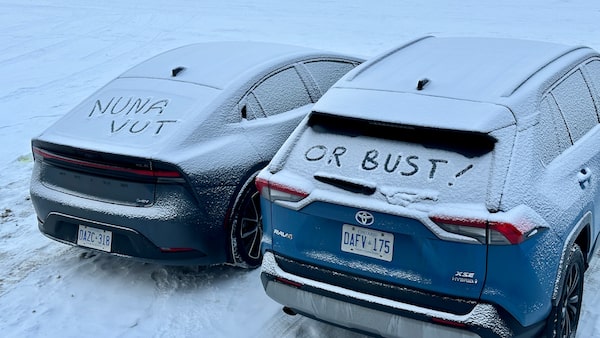
The Toyota Prius and a Toyota RAV4 Hybrid at the entrance to Chisasibi. Mark Richardson/The Globe and Mail
Let’s just be clear, right off the top. There is no road that crosses into the territory of Nunavut from anywhere in Canada. There used to be a winter ice road north of Yellowknife that stretched up to a Nunavut diamond mine, but that melted away years ago when the mine closed. You cannot drive a car to Nunavut .
Except, you sort of can.
That’s because all of the islands in James Bay, almost 1,400 kilometres by road north of Toronto, are considered part of Nunavut. And some of them are tantalizingly close to land.
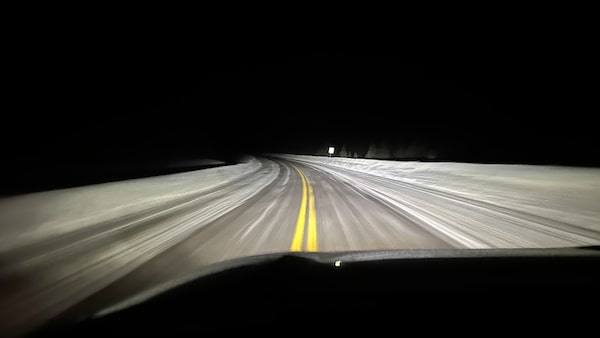
Driving at night in the RAV4 from Radisson to Chisasibi. Mark Richardson/The Globe and Mail
So why not drive through Ontario and Quebec to one of the Cree communities on the eastern shore of James Bay, and then travel on the ice to a nearby island? It seemed like a good idea at the time, debated over beers with friends, and that’s how we found ourselves at the base of the Billy Diamond Highway, checking in at the road’s security hut for the long journey north.
Review: Driving Toyota Prius and RAV4 hybrids on the long road to James Bay
The James Bay Road was renamed in 2020 for the late Grand Chief of Quebec’s Cree Nation, a successful businessman who fought to enshrine Indigenous rights in the Canadian Constitution. It’s 620 kilometres of wide, paved road, built in the early 1970s and designed to carry heavy truck loads up to the hydro town of Radisson, for the construction of the massive dams of the James Bay Project. The road is open all year, though it’s officially closed on winter nights from 8 p.m. to 8 a.m. Driving is safer that way.
Sealskin Island, Nunavut. Mark Richardson/The Globe and Mail
The four of us signed in and were given an information sheet that told us of the various waypoints along the route. There aren’t many, despite a distance farther than the drive between Toronto and Montreal. Four junctions for roads heading west to the four Cree communities on James Bay, two roads headed east – one of them for an ominous 666 kilometres of gravel to more dams and with only a couple of hunting camps for services – and one truck stop halfway in the middle of seemingly nowhere. That’s where you can buy gas and food, and sleep the night if needed, at kilometre 381, and yes, we would need gas.
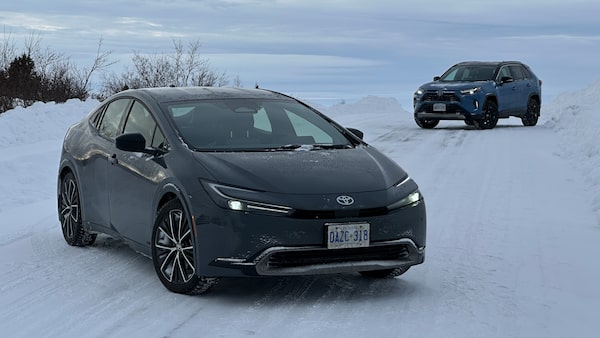
The Prius and RAV4 near the shore of James Bay at Chisasibi. Mark Richardson/The Globe and Mail
We were driving a Toyota Prius and a Toyota RAV4 Hybrid. Both were frugal with fuel, but the Prius had a range of about 580 kilometres on a full tank, and that wouldn’t be enough to leave the gas station in the nearby town of Matagami and reach Radisson without filling up along the way.
In any case, we weren’t going to Radisson. We were turning west, 20 kilometres before the town, and driving an extra 80 kilometres to Chisasibi, the farthest north of the road-accessible Cree communities.
I’ve driven this highway twice before. Both times, the temperature was much colder at around minus-20 degrees, and both times we had to be wary of animals along the way, attracted to the asphalt and its ice-melting salt. This year, the caribou were far to the east, shunning the taiga forest burned in last summer’s wildfires. Instead, we saw flocks of ptarmigans, known as white birds, strutting around on the highway and oblivious to our vehicles. We swerved around them as best we could, but one swooped low in front of the RAV4 and seemed to explode in a cloud of feathers on impact. None of the other trucks on the road slowed or changed course to avoid them and the highway was sometimes littered with small, white carcasses.
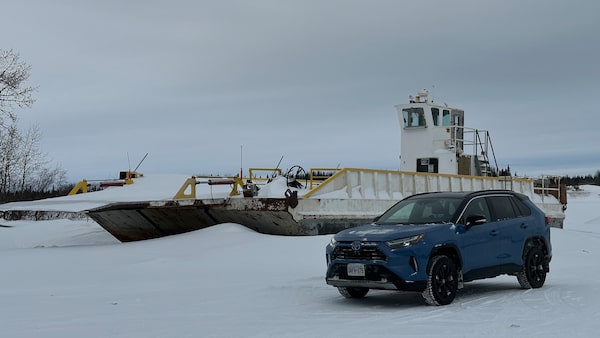
The RAV4 beside the ferry to Fort George island, near Chisasibi. Mark Richardson/The Globe and Mail
Time passed quickly on the highway, with few distractions from the scenery of low hills and endless trees, both green and burned. Snow was thick on the ground, but the road and sky were mostly clear. We changed drivers every two hours, chatted between the vehicles on the walkie-talkies we’d brought along for safety, and listened to satellite radio. Our cellphones were far from any reception, even with the WiFi hotspots available through the two Toyotas.
The long highway is smooth and well maintained, but it’s taken a beating over the years from the heavy truck traffic and sub-Arctic weather, and there are many patches of rippled or undulating asphalt that would be dangerous to drive on at speed. It has a reputation for being lightly policed, though we saw cruisers headed in both directions, so that didn’t hold up. We were happy to see them, in any case. We travelled with blankets and survival equipment and rations – lots of chocolate bars – in case of being caught in a storm, but even in the clear weather, it was good to know help would be at hand if something went wrong.
The enormous spillway from the Robert Bourassa dam near Radisson. Mark Richardson/The Globe and Mail
Occasionally, there were rudimentary hunting camps beside the road, and we saw maybe two dozen vehicles along the entire route. We were warm and comfortable inside the hybrids, but Chisasibi was still a welcome sight when we rolled into town, eight hours after starting up the road. It’s the largest of the Cree communities and has grown considerably in size since I last visited in 2011; the population of around 5,000 people is about the same, but new housing means many residents are not so crowded into family homes as they used to be.
We were still in Quebec, of course, and not quite at Nunavut. We stayed a night at a local auberge and then drove out to the far end of the community’s peninsula of land. The gravel road was totally white, cleared by huge snowcats so it seemed like a rolling winter chute for the cars. Finally, a further 15 kilometres west of town, a parking lot and picnic tables marked the true end of the road. The Toyotas were blocked by walls of snow, and beyond, the vast, flat bay itself. Islands of dark rock in the white ice taunted us, and if one of those snowcats were to push aside the snow to create a path out to one of them, we could surely have driven all the way to Nunavut. But the way was blocked by the walls of cleared snow, and sensibly so.
No matter. We’d arranged through Chisasibi’s tourism office to meet there with Steven Sam, a local resident who owns both a snowmobile and a trailer large enough for four passengers. We removed a headrest from each of the Toyotas, so at least part of the vehicles would make it to Nunavut, and clambered into the trailer. The representative from Chisasibi Tourism, Thomas Sealhunter, met us at the shoreline and watched with bemusement as we prepared to fulfill our quest.
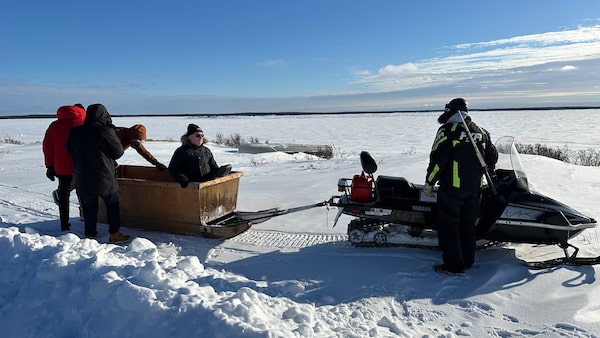
Mark Richardson’s drive partners join him in the snowmobile trailer before the ride over to Sealskin Island. Mark Richardson/The Globe and Mail
“This is important,” I told him. “This is the road to Nunavut, which is just over there.”
Sealhunter pursed his lips together and kind-of nodded. “It’s understandable,” he said after a while, politely. “I guess.”
And so we carried the headrests for three more kilometres across the metre-thick ice to a small clump of rock called Sealskin Island, officially in the jurisdiction of Nunavut. Sam carried a rifle in case of wolves but none were there to threaten us. Actually, nothing was there. Just some driftwood and snow and rock and a wind that weakened as we walked the island’s short length and width and took photos for posterity.
We’d made it. We weren’t quite sure why, but this road trip was a journey of exploration that left each of us feeling we’d achieved something worthwhile. Quite what that was, we weren’t yet sure. If I ever figure it out, I’ll be sure to tell my grandchildren.
Toyota provided the vehicles and covered basic expenses for the trip. Content was not subject to approval.
Report an editorial error
Report a technical issue
Editorial code of conduct
Follow related authors and topics
- Mark Richardson
- Environment
- Ontario Highway 407
Authors and topics you follow will be added to your personal news feed in Following .
Interact with The Globe
A Guide To Every Unique Thing You Can Do In Nunavut

Your changes have been saved
Email is sent
Email has already been sent
Please verify your email address.
You’ve reached your account maximum for followed topics.
10 Charming Small Towns Near Tucson, Arizona
10 additional scenic stops to make if you're visiting the grand canyon, 10 scenic upstate new york road trips that should be on your bucket list.
Nunavut is a massive region in Northern Canada and comprises most of the Canadian Arctic Archipelago. The remoteness, vastness, and variety of environment mean that Nunavut is rife with unique opportunities to see, do, and experience a near-endless list of attractions. This article is a short introduction to what the region has to offer.
- Not only is Nunavut the least populated province and territory in Canada, but it is also one of the remotest and least settled parts of the world
How To Get To Nunavut
Nunavut is the only part of Canada that is not connected to the rest of the continent by road or highway. It's not an easy place to reach , so travelers will have to get there via plane or boat. The area is almost the size of Mexico and is largely comprised of islands separated by freezing water. Traveling within Nunavut is therefore accomplished by dog sleds, boats, and charter planes.
There are around 40 airports in Nunavut. Travelers planning on flying there will probably land in Iqaluit, the capital city, which is also the largest and most popular point of entry.
- A flight from Toronto to Iqaluit will cost anywhere between $400 and $1000, depending on the time of the year
- The total direct flight time is around 3 hours and 30 minutes
When To Visit Nunavut
Nunavut is best enjoyed in the summer. Being an Arctic region, the summers are short and cool. The climate is arctic (obviously) and the terrain is characterized by perennial frost and endless tundra, so visitors will require winter wear regardless of the time of the year.
Tourists are not recommended to visit during the winter due to the extremely low temperatures. Almost none of the usual activities take place as the locals hunker down to survive the cold.
Between the months of October and April, the northern lights illuminate the night skies. Motivated visitors with the right equipment and skills can make the trip, given that weather conditions allow it.
It's important to note that during the summers, many of the northern islands experience 24 hours of sunlight, while in the winter, the same islands are plunged into perpetual darkness. For a while in between, twilight reigns, so be prepared for unusual circadian conditions.
- The town of Alert, in Nunavut, is the world's northernmost permanently inhabited area
Related: Can You See The Northern Lights In Canada? Here's Where To Go
What To Do In Nunavut
Arctic animals are one of the most unique and prominent features of Nunavut.
Cambridge Bay is home to fascinating arctic oxen like the Musk Ox. In the early summers, watch the steam rise from their backs as they migrate north toward newly thawed land to graze. Floating in the lakes and straits are elegant tundra swans, enjoying the fleeting warmth after a long migration.
- Most of the islands of Nunavut are uninhabited and many are unexplored
At Floe Edge, where the coast is clearly demarcated by ice and sea, whales, polar bears, and walrus get close to the shore to feed on shrimp and fish. Spring and summer are energetic times, as animals and humans alike make use of the long daylight hours to hunt and eat enough to last them the entire year, most of which is spent hibernating and laying low.
Dog Sledding
Another unique activity is dog sledding. It's a practical way to get around and see the landscape, as a lot of the area is unpaved. Alternatively, Nunavut is a great place to go snowmobiling. Book an Inuit guide at any of the major towns and set out into the wilderness on foot, sled, or snowmobile to see how settlers have traveled in the arctic for thousands of years.
- The first settlers of Nunavut, the Dorsets, are estimated to have arrived there over 4,500 years ago
Wildlife safaris are almost exclusively conducted as hikes, on boats, or dog sleds and snowmobiles.
Related: You Can Go On A Polar Bear Tour In Canada's Arctic, So Prepare To Be In Awe Of This Incredible Species
Inuit Culture And Art
There are about 30,000 people inhabiting Nunavut. By far, the majority of settlers are Inuit. Having lived there for thousands of years, the Inuit have a rich culture and are generally happy to share their traditions and way of life with respectful visitors.
- Inuit settlements are concentrated along the coasts of the southern islands
Music is a big part of indigenous culture and includes throat singing and drum-led dancing. Since European settlement, the locals have syncretized various styles of music and dancing. Visitors can attend concerts featuring one-of-a-kind versions of country and bluegrass music, which incorporate a blend of indigenous and European instruments like the button accordion and fiddle.
Nunavut even has its own homegrown circus collective of international renown. Artcirq is a group of Inuit circus performers based in Igloolik. The group has performed around the world and was even featured in the 2010 Olympic Winter Games. They regularly put on shows around Nunavut, especially during summer festivals in the capital.
- Refer to the official Nunavut tourism website for information regarding tourist activities
Shopping, a universal activity, is special in Nunavut. The Inuit are skilled artisans, hunters, and chefs. At one of the many markets in almost every community in Nunavut, visitors can shop for one-of-a-kind goods such as furs, pelts, handicrafts, and art.
- Nunavut holds the title as the world's largest high-Arctic land area
Inuit art is world-renowned, and locals are famously decent. They will seldom charge more than what they believe an item is worth, so prices are almost always fair. Inuits strongly believe in maintaining peace and avoiding unpleasant confrontations, so they might be compelled to sell their goods below cost if tourists give them a hard time by haggling. It's indecent to put them in these situations, so, as a tourist, avoid bargaining and return their grace by paying what they charge.
This has been a short introduction to the unique activities available in Nunavut. It's not particularly expensive to get there, and more than worth the time and effort to make the trip. Make the most of this stunning pocket of the world by being open-minded, well prepared, and respectful.
Next: Haunted Arctic: These Stories Are Why It's Considered The Most Haunted Place On The Planet
- Destinations

Can you drive into Nunavut?
Nunavut, Canada’s largest and northernmost territory, is a truly unique and remote destination. With its stunning landscapes, indigenous cultures, and abundant wildlife, it’s no wonder that some adventurous tourists may be eager to drive into this region. But the truth is that driving into Nunavut is virtually impossible.
There are no roads that connect Nunavut to the rest of Canada, and the only way to access the territory is by air or sea. The majority of Nunavut’s communities are located on the shores of the Arctic Ocean or Hudson Bay, and are only accessible by boat or plane. The few roads that exist within Nunavut are strictly for local travel, and there are no highways or interstates like those found in the rest of Canada.
For those who still want to explore Nunavut on wheels, there are some options available. Snowmobiles are a popular mode of transportation in Nunavut, especially during the winter months when the terrain is covered in ice and snow. Some communities also have a limited number of all-terrain vehicles (ATVs) available for rent, although these are more commonly used for short trips within a specific region rather than long-distance journeys.
It’s worth noting that driving in Nunavut, whether by snowmobile or ATV, can be challenging and potentially dangerous. The region’s extreme weather conditions, rugged terrain, and vast distances can be daunting for even the most experienced drivers. It’s essential to have the proper equipment, gear, and training to ensure a safe and successful trip.
In conclusion, while driving into Nunavut may seem like an exciting adventure, it’s simply not feasible. The lack of roads and infrastructure means that travelling by air or sea (or by snowmobile or ATV for short trips) is the only option. However, the incredible beauty and unique culture of Nunavut make it well worth the effort to visit, no matter how you get there.
Quick navigation
What are the requirements for driving into Nunavut?
Driving into Nunavut can be a daunting task due to the remote location and harsh weather conditions. There are a few requirements that drivers must be aware of before embarking on a road trip into Nunavut. Firstly, it is important to note that Nunavut does not have a road network that is connected to the mainland. Therefore, drivers must access Nunavut either by ferry or plane. The main route is via Churchill, Manitoba, where a ferry operates during the summer months, and during the winter months, airlines offer flights to Nunavut from various Canadian cities.
Secondly, drivers must ensure that their vehicles are well-equipped to handle the severe weather conditions that are prevalent in the region. During the winter months, temperatures can plummet to -30°C, and it is crucial that vehicles are fitted with winter tires, a reliable battery system, and a functioning heating system. Additionally, drivers must carry emergency kits consisting of warm clothing, blankets, food and water, and first aid supplies. The roads are largely unpaved, and it is advisable to carry a spare tire, a tow rope, and a shovel in case of emergencies.
Overall, driving into Nunavut can be a unique and rewarding experience, but drivers must be prepared for the challenges that come with it. With proper planning and preparation, drivers can enjoy the stunning natural beauty of Nunavut and appreciate the culture of the local inhabitants.
Is it possible to drive from other Canadian provinces or territories into Nunavut?
Nunavut is a vast territory located in the northernmost region of Canada. It is the largest and newest Canadian territory, comprising of 1.9 million square kilometers of land and water. Many people often wonder if it is possible to drive from other Canadian provinces or territories into Nunavut. The answer to this question is simply no.
Nunavut is an isolated and remote region with no roads connecting it to other Canadian provinces or territories. The territory can only be accessed by air or by sea. The only way to reach Nunavut by land is through the territory of Quebec, via the James Bay Road, and then continue by boat or by plane. This makes Nunavut one of the most difficult regions to travel to in Canada.
The isolation and remoteness of Nunavut add to its beauty and uniqueness. It is a region that is rich in culture, history, and natural resources. While it may not be easy to get there, Nunavut is definitely worth visiting for those who are adventurous and seeking something different.
Are there any roadblocks or checkpoints when driving into Nunavut?
Nunavut is a vast territory in Canada’s far-northern region that is accessible only by air and sea, as there are no roads connecting it to the rest of Canada. The territory is incredibly remote and sparsely populated with small communities scattered throughout its vast expanse. Traveling to Nunavut by road is impossible, but there are a few roadblocks and checkpoints that drivers should be aware of before arriving in Nunavut.
One of the significant roadblocks to traveling to Nunavut is the lack of roads. The only way to move around Nunavut is by air, boat, or snowmobile. For visitors traveling on a Northern passage cruise, they may encounter ice floes, which can create more complications in their travels. In addition, there are military checkpoints in certain areas of Nunavut, especially near defense installations. It is also essential to note that there are many restrictions on hunting, fishing, and wildlife viewing in Nunavut, so visitors should have a basic understanding of these restrictions before embarking on their journey.
In conclusion, visitors need to plan their travel to Nunavut carefully. It is recommended that they take advantage of the transportation services offered by tour companies or air carriers. It is also crucial to understand the hunting and fishing policies of Nunavut before setting out on your trip. While there are some roadblocks and checkpoints to be wary of, the vast beauty of this region and the unique experience of accessing it makes the journey well worth it.
What are some of the challenges or hazards drivers may encounter when driving into Nunavut?
Driving into Nunavut can be a challenging and sometimes hazardous experience due to a variety of factors. Firstly, Nunavut has a very limited road network, with only a few roads connecting the communities. Most communities in Nunavut are only accessible by air or sea, which means that driving can be a challenging experience. The roads in Nunavut are often unpaved and are not well-maintained, which can make them difficult to navigate, especially during winter when the roads are covered in snow and ice.
Another hazard that drivers may encounter when driving into Nunavut is the extreme weather conditions. Nunavut experiences long, harsh winters, with temperatures often dipping below freezing. This can make driving dangerous, especially for those who are not used to the extreme weather conditions. Icy and slippery roads, along with reduced visibility due to blowing snow or fog, can increase the risk of accidents on the road. Additionally, there are often strong winds in Nunavut, which can make driving even more challenging, especially for high-sided vehicles, such as trucks or SUVs.
Finally, drivers in Nunavut must also be aware of the potential for encountering wildlife on the road. Nunavut is home to many species of wildlife, including caribou, muskox, and polar bears. These animals may wander onto the road, especially during winter when the snow forces them to look for food in areas they may not otherwise go. This can lead to accidents, especially if drivers are not familiar with driving in areas where wildlife may be present. As such, it is important for drivers to exercise caution and to be aware of their surroundings at all times when driving in Nunavut.
Are there any scenic routes or destinations worth visiting by car in Nunavut?
Nunavut, the northernmost territory of Canada, is full of awe-inspiring natural beauty that is truly unique. While there are no paved roads or highways in the territory, there are still plenty of scenic routes and destinations that are worth exploring by car. One popular road trip route takes you along the Northwest Passage, a legendary waterway that was once used by Arctic explorers. Along the way, you can visit small Inuit communities, spot Arctic wildlife, and marvel at stunning landscapes that include towering glaciers, fjords, and icebergs.
Another must-see destination in Nunavut is Auyuittuq National Park. Located on Baffin Island, the park offers an unforgettable driving experience through some of the most spectacular wilderness areas in the world. The park is home to incredible landscapes ranging from glaciers, cliffs, and icefields to deep valleys and rivers, which can all be explored via driving tours. Visitors to Auyuittuq National Park can also enjoy hiking or backpacking through one of the park’s many scenic trails, including the famous Akshayuk Pass, which offers breathtaking views of the Arctic landscape.
In conclusion, driving in Nunavut offers an opportunity to witness some of the most incredible natural scenery on Earth. Whether you are driving along the Northwest Passage or exploring Auyuittuq National Park, you can expect breathtaking views, access to amazing wildlife, and unique cultural experiences. While Nunavut may be a remote destination, it is definitely worth the journey for those seeking an unforgettable road trip.
Bell R Webster
Recent Posts
Can Ontario rpn work in Alberta?
Registered Practical Nurses (RPN) are an essential part of the healthcare system in Canada. They work in various roles such as hospitals, clinics, and long-term care facilities to provide care to...
What to do if you win the lottery in Ontario?
Winning the lottery is a dream that many Canadians harbor. A sudden surge of wealth can bring a lot of happiness and freedom. However, handling such a significant amount of money can be overwhelming,...
- BUCKET LISTS
- TRIP FINDER
- DESTINATIONS
- 48HR GUIDES
- EXPERIENCES

- DESTINATIONS South Carolina 3 Ways to Get Wet and Wild in Myrtle Beach BY REGION South America Central America Caribbean Africa Asia Europe South Pacific Middle East North America Antarctica View All POPULAR Paris Buenos Aires Chile Miami Canada Germany United States Thailand Chicago London New York City Australia
- EXPERIENCES World Wonders 14 Landmarks That Should Be Considered World Wonders BY EXPERIENCE Luxury Travel Couples Retreat Family Vacation Beaches Culinary Travel Cultural Experience Yolo Winter Vacations Mancations Adventures The Great Outdoors Girlfriend Getaways View All POPULAR Cruising Gear / Gadgets Weird & Wacky Scuba Diving Skiing Hiking World Wonders Safari
- TRIP FINDER Peruvian Amazon Cruise BY REGION South America Central America Caribbean Africa Asia Europe South Pacific Middle East North America Antarctica View All POPULAR Colors of Morocco Pure Kenya Costa Rica Adventure Flavors of Colombia Regal London Vibrant India Secluded Zanzibar Gorillas of Rwanda
- Explore Bucket Lists
- View My Bucket Lists
- View Following Bucket Lists
- View Contributing to Lists
Nunavut Travel Guide

Nunavut’s isolated location, notoriously frigid winters, and sheer physical size may intimidate many people, but those who make the long and expensive trek to Canada’s newest territory will be greeted by some of the world’s friendliest people and most pristine landscapes. Few other places on Earth give visitors the opportunity to build and camp in igloos during a dog sledding excursion or watch whales, seals, and icebergs from the edge of a floating ice floe.
The vast majority of Nunavut’s tourists arrive during the very short summer season, which lasts as little as a month in some regions. This still gives visitors plenty of time to fish in some of the planet’s most unpolluted waters or navigate them by kayak, which Nunavut‘s native Inuit invented over 4,000 years ago. Walrus, polar bears, caribou, and muskoxen can all be hunted, photographed, or admired from safe distances.
Accommodations, like everything else in Nunavut, cost several times more than their southern Canadian counterparts, especially during the short summer season. Luxury hotels are unheard of and visitors may have to share facilities with other guests at some establishments. Iqaluit contains most of Nunavut’s full service hotels, but more adventurous visitors may prefer to stay at isolated hunting lodges with welcoming Inuit families, or even camp miles away in any of Nunavut’s huge and isolated national parks.
Flying is literally the only way to enter Nunavut, which has no road links with the rest of Canada, and it is the only way to travel between the territory’s 26 incorporated communities. The first landmark all visitors will see is the bright yellow Iqaluit Airport, whose flights to Ottawa and Montréal are Nunavut’s only direct connection to southern Canada. Bus and rail lines are non-existent and the entire road network consists of streets around Iqaluit and a brief 13-mile stretch between two northern Baffin Island communities, Nanisivik and Arctic Bay.
The Inuit people who form the majority of Nunavut’s population warmly welcome all respectful visitors to the territory whose name means simply ‘our land’ in Inuktitut, the first language of approximately 65 percent of residents. The same frigid temperatures and isolated location which long kept outsiders away from Nunavut helped its Inuit people successfully maintain a strong language, lifestyle, and culture.
- Warm up with tea brewed from melted iceberg water while watching wildlife from the comfort of a giant ice floe
- Build and sleep in a private igloo during a dog sledding trip 500 miles north of the tree line
- Learn about the Inuit’s rich culture and admire carvings and artwork by over 2,000 artists at Iqaluit’s Nunatta Sunaqutangit Museum or several smaller art galleries throughout the territory
- Examine Nunavut’s oldest fossils at Southampton Island’s Fossil Creek Trail
- Kayak along the same pristine waters the Inuit have navigated for centuries
- Sample local delicacies like caribou, musk ox, whale meat, and wild berries
- Gaze upon the literal top of the world - or the top of Canada - at Quttinirpaaq National Park, Canada’s northernmost national park in the country’s northernmost island
- Things To Do
- Attractions
- Food And Restaurants
- Shopping And Leisure
- Transportation
- Travel Tips
- Visas And Vaccinations
- History And Culture
- Festivals And Events
World Wonders
These are the most peaceful countries on the planet, the great outdoors, deserts in bloom: 6 spots for springtime wildflower watching, how to plan a luxury safari to africa, british columbia, yoho national park is the most incredible place you've never heard of.
- Editorial Guidelines
- Submissions
The source for adventure tourism and experiential travel guides.
- Toll Free: 1-800-347-7126
- Intl: 1-403-259-5447
- Agent Portal
- Online Check-in
Get RV Rental Pricing & Availability
Get rv sales pricing & availability.
- All RV Types
- {{rvType.Name}}
- All Locations
- {{location.Name}}
- {{sleepCapacity.Name}}
- {{maxPrice.Name}}
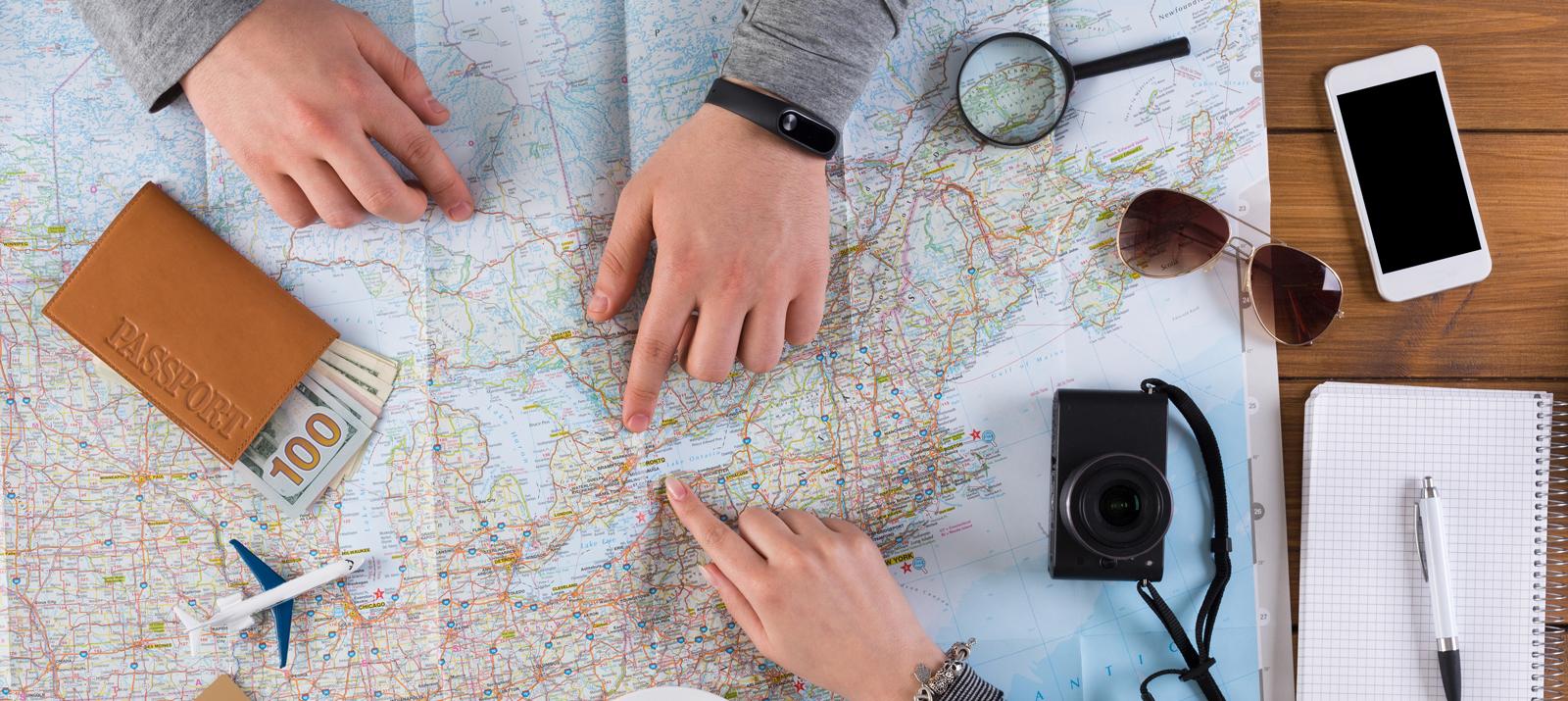
A Canadian RV Adventure is Calling
It's our pleasure to help you plan your canadian rv adventure using our road trip planner tools.
Browse our itineraries and read through our destination pages to discover the many places you want to visit while experiencing Canada at your own pace! Our Road Trip Planner tools will help simplify the planning of your RV vacation.
Driving Directions
We are happy to assist you in calculating the driving distance between cities in both kilometers and miles.
Calculate your Driving Distances
Adventure at Your Fingertips
Whether you’re visiting us from afar to embark on an experience from coast to coast or getting out to experience the breathtaking scenery of your own backyard, the ultimate freedom to roam is yours. We are happy to provide you with a multitude of itineraries to help you plan the ultimate Canadian road trip.
See Itineraries
Great lakes, rugged mountains, and wide open spaces
From Pelee Island Ontario all the way up to Alert Nunavut, Canada is a massive country spanning nearly 9.99 million square kilometres and is surrounded by three oceans. When it comes to mother nature’s dealings, it’s fair to say Canada drew the best cards!
Explore Destinations

- Skip to main content
- Skip to primary sidebar
- Skip to footer
Must Do Canada
The Best Things to Do in Canada
13 of the Best Canada Road Trips That Will Blow Your Mind
April 30, 2019 By Matthew G. Bailey 12 Comments

Canada Road Trip Last updated: April 1st, 2022
If the thought of being behind the wheel while driving amongst some of the most beautiful scenery in the world excites you, then this Canada road trip article is for you.
As world travellers that specialize in Canada travel, we’ve done some epic road trips in our lifetime, including the Australian East Coast, the Oregon Coast, California, and parts of Mexico, Malaysia, Peru, and New Zealand. Still, nothing compares to the 150-day road trip across Canada we did back in 2017. Comprising over 27,000 kilometres of asphalt (and some dirt roads as well), we got to explore Canada from coast to coast to coast. However, not everyone has 150 days to dedicate to driving across Canada.
While there are many other road trips not listed here, as well as a variety of incredible destinations that may not include an iconic road trip, we believe these 13 itineraries below are some of the best road trips in Canada and we hope they are helpful suggestions when you’re ready to take your next Canada road trip.
Let’s get started.

Table of Contents
Icefields Parkway, Alberta
How could I not start an article about Canada’s best road trips without first mentioning the Icefields Parkway, which has often been ranked as one of the best road trips in the entire world? Stretching 232 kilometres through both Banff National Park and Jasper National Park, this highway invites you into a journey of mind-blowing scenery, including mighty mountains, waterfalls, turquoise-coloured lakes and rivers, and glaciers too. While the drive from Banff to Jasper really only takes upwards of three-four hours, you’ll probably want to budget an entire day for all the stops you’ll be making to take photos, short hikes, or even full-on tours at the Columbia Glacier. Popular stops include Lake Louise, Peyto Lake, Columbia Icefield, Sunwapta Falls, and Athabasca Falls, just to name a few. For those coming from Calgary to Banff , you just continue towards Lake Louise and then head North on highway 93.
Best time to go: This Alberta road trip is best from June to September, although May works as well. October is also good if you don’t mind a higher chance of rain in exchange for much fewer tourists. From November until April, you should expect snow and ice. This is also a beautiful time to do the road trip, but you’ll need to be much better skilled at driving and expect delays. In addition, many things such as the Columbia Icefield tour are closed.
Bonus: Due to the popularity of this area, it’s also a great place for delicious food. There are so many restaurants in the area and we’ve made some extensive guides, such as our guide to the best Banff restaurants and the best Canmore restaurants .

Cowboy Trail, Alberta
If you’re looking for some prairie and mountainous “wild west” scenery, Alberta’s Cowboy Trail is the road trip for you. Primarily located just south of Calgary, you could start your experience in the province’s biggest city, taking time to explore the many things to do in Calgary such as the Glenbow Museum, Heritage Park, Studio Bell, or the new central library. If you’re up for a party, time your visit with the Calgary Stampede, which is known as the greatest outdoor show on Earth. You could even stop by the Alberta Boot Company and grab yourself some authentic Cowboy boots or other Western-style clothing.
While the actual “Cowboy Trail” refers to Highway 22, which travels all the way from the Edmonton area down into the USA, our favourite part starts around Bragg Creek and takes you down past Turner Valley, Black Diamond, Okotoks, High River, Longview, and down towards Pincher Creek. You’ll pass a lot of stunning scenery and historical sites such as the Bar U Ranch National Historic Site as well as a number of Western-style towns before winding up in the Rocky Mountains such as the Crowsnest Pass and Waterton Lakes. If you’re not wanting to continue into the USA, you could return to Calgary via Highway 2, stopping to see the UNESCO World Heritage Site of Head-Smashed-in-Buffalo-Jump .
Best time to go: This is one of the best road trips from Calgary and is best done between May and October.

Banff to Vancouver via the Trans-Canada Highway
While the Trans-Canada Highway can take you across the entire country, the most beautiful part, in our opinion, is from Calgary to Vancouver . After just an hour or so, you’ll arrive in Banff with nothing but gorgeous scenery for the remainder of the drive. This 900-kilometre slice of the Trans-Canada takes you through Banff National Park, Yoho National Park, Mount Revelstoke National Park, Glacier National Park of Canada, and finally into Vancouver, which is nestled next to the Pacific Ocean. While this drive can be done in one very long 12-hour day, you’ll obviously want to take as long as possible to make use of the incredible national parks you’ll be driving through. There are also a number of side trips you could take, such as highway 93 down into Radium Hot Springs, and Highway 97, which will take you down to Kelowna and the Okanagan Valley.
Tour Idea: Click here for a Smartphone Audio Driving Tour Offer .
Best time to go: This largely depends on what you aim to do. The safest time to go is during the warmer months when the highways are clear. However, if you’re into skiing, this is one of the best places in the world to shred powder, which is typically best between January and March.
For more tips on what to bring on a road trip, check out our Road Trip Essentials article.

Road Trip around the Okanagan Valley, BC
While the Okanagan Valley isn’t really known as a specific “road trip”, it is home to one of Canada’s most famous wine regions, a gastronomic hot spot, and beautiful Lake Okanagan. There are all sorts of beautiful towns to visit, such as Kelowna , Penticton, and Vernon. There are all sorts of award-winning wineries, farm-to-table restaurants, and sandy beaches as well. This also happens to be one of Canada’s warmest regions, which can hit 40 degrees Celcius in the summer months.
Best time to go: June to September for the warmest temperatures. April, May, and October are also great and a bit cooler.

Sea to Sky Highway, BC
This is the shortest road trip mentioned in this article but a great one to take if you’re in the Vancouver area. The Sea to Sky Highway links Vancouver to Whistler, which are less than two hours apart, making this one of the most popular road trips from Vancouver. Driving along the coast, this is a great place to see the beautiful west coast. Popular stops include Whytecliff Park in West Vancouver, Shannon Falls, and the Britannia Mine Museum. There’s also the Sea-to-Sky Gondola, which provides unforgettable views and a suspension bridge and of course, Squamish and Whistler, which provide all sorts of adventurous activities. In addition, don’t forget to experience Vancouver whale watching while in the city as well as all the other fun things to do in Vancouver .
Tour Idea: Sea-to-Sky Gondola and Whistler Day Trip Tour .
Best time to go: July to September is Vancouver’s dry season, but if the rain doesn’t bother you, almost any time of year is good. If you’re into skiing or snowboarding, January to March is best.

Vancouver Island, BC
Vancouver Island is undoubtedly one of the most beautiful places in Canada and is home to some of the best things to do in British Columbia . Not only does it have one of the mildest climates in the country, but it’s also home to a variety of landscapes, including rainforests, mountains, rugged coastlines, and scenic towns and cities, making it a great place for a BC road trip. It’s also home to beautiful gardens, epic hikes, surfing, scuba diving, and whale-watching tours. Two of the most popular places to visit include Victoria and Tofino, which are on opposite sides of the island. While driving between the two, don’t forget to stop at Cathedral Grove to marvel at the massive trees as well as the many other parks and towns along the way. Finish the trip with one of Tofino’s stunning sunsets.
Best time to go: a West Coast road trip is best between March to May and September to November. Summer is great too but is very busy and expensive.
Before you go, check out our article about things to do in Victoria BC .

Dempster Highway, Yukon
As Canada’s only all-weather road that goes past the Arctic Circle, the Dempster Highway has become one of the most unique road trips in Canada. However, this is not your average highway. The Dempster Highway is a 700-kilometre extremely isolated dirt road with only one service station (they also offer accommodation and a restaurant) option along the way in Eagle Plains. This road trip takes a little more preparation than the others and will be much harder on your vehicle than any other road trip mentioned in this article. However, for those who choose this adventure, you’ll be rewarded with incredible arctic scenery and the chance to drive all the way to Tuktoyaktuk and the Arctic Ocean!
Best time to go: The best time to go would be in the warmer months between May and early October. The road is open year-round but the driving becomes much more dangerous in the winter. Spring will bring a lot of bugs, summer will bring a lot of tourists, and the fall has no bugs and beautiful fall foliage (hint: our favourite time is the fall). However, if you time your arrival in Inuvik for mid-July, you might be able to experience the Great Northern Arts Festival.

Georgian Bay Coastal Route, Ontario
Looking for one of the best road trips from Toronto? With more than 30,000 islands and over 2,000 kilometres (1,243 miles) of shoreline, the Georgian Bay Coastal Route loops around the Bay from Toronto and features some of Ontario’s most stunning scenery. Some of the most popular stops include the Bruce Peninsula, Parry Sound, and Killarney Provincial Park. There’s also beautiful Manitoulin Island, which is the world’s largest freshwater island, as well as Wasaga Beach, which is the world’s largest freshwater beach.
In addition, you could also extend the road trip and add in the Chatham-Kent Corridor, which is comprised of 23 small communities overlooking Lake Erie, Lake St. Clair, and the Thames River. Basically, it goes from Toronto to Amherstburg, which makes this one of the most popular road trips from Toronto. This route is popular with motorcyclists but is equally impressive on four wheels. Without a doubt, the most famous stop along the way is Niagara Falls Canada .
Best time to go: Summer is great but also busy. Shoulder season in late August to mid-September or in the spring from May to June is also great. Either way, this is one of the best things to do in Ontario .

Lake Superior Circle Tour, Ontario
While the entire Lake Superior Circle Tour takes you to both Canada and the USA, you could opt to do a half-circle tour and just stay on the Canadian side. Either way, it’s a beautiful drive and a really cool place to get out in nature. Lake Superior is absolutely massive and will make you feel as if you’re driving alongside the ocean. It’s home to some incredible scenery as well as some interesting history from the war between Canada and the USA. In fact, you can even go scuba diving to see shipwrecks. Popular stops include Sault Ste. Marie, Lake Superior Provincial Park, Sleeping Giant Provincial Park, Ruby Lake Provincial Park, Pukaskwa National Park, and Thunder Bay. This is one of those places where you should plan to spend at least a few days and perhaps go camping, hiking, or enjoy some time on the lake. It’s a great road trip in Ontario for those who love the outdoors.
Best time to go: The warmer months from May to October. July and August will be the busiest. Before going, don’t forget to enjoy one of the many awesome things to do in Toronto !

Montreal to Gaspé Peninsula, Quebec
For those wanting to experience a world-class city like Montreal, followed by a scenic road trip, the Gaspe Peninsula is the one for you. This 9-hour trip takes you along the St. Lawrence River, from Montreal to Quebec City, and up to the Gaspé Peninsula. Known for its pine forests and looming cliffs, the Gaspé Peninsula is a stunning place to visit. Some of the highlights include visiting the pierced rock in Percé, spending some time at the Parc de la Gaspésie, and taking a boat tour to Bonaventure Island. Obviously, the cities of Quebec and Montreal aren’t so shabby either. This is a great road trip for those wanting to mix urban and rural fun.
Best time to go: June to mid-September. Want more? Here are other things to do in Quebec as well as the top things to do in Montreal .

Prince Edward Island Coastal Drives
With so many beautiful coastal drives, the hardest thing might be picking the right one. Then again, you could always do all three. The tourism board has three road trips they recommend, which include the North Coast Coastal Drive, Central Coastal Drive, and Points East Coastal Drive. The North Coast will introduce you to its Mi’kmaq culture as well as some unique stops, including a potato museum and a college for the Highland arts. The Central Coastal Drive includes the Red Sands Shore and the Green Gables Shore region. This area is great to experience the beautiful red sand that PEI is famous for as well as the historical landmark of Anne of Green Gables. Lastly, there’s the Points East Coastal Drive, which is characterized by its parks, trails, and lighthouses. Either way, you’ll be treated to an array of stunning coastal views and delicious seafood along the way.
Best time to go: The Eastern Canada road trip is best in the warmer months, as many attractions close in the winter. Want more ideas? Here are other things to do in Prince Edward Island .

Cabot Trail, Nova Scotia
For those visiting the East Coast, don’t miss a scenic drive on Cabot Trail, which is easily one of the best things to do in Nova Scotia . Cradling the coast of Cape Breton, Nova Scotia, the Cabot Trail has become one of the most famous road trips in Canada and the most famous East Coast Canada road trip. At 300 kilometres in length, most of which hug the coastline, this road trip is perfect for those who love the ocean and incredible views. Traversing through Cape Breton Highlands National Park, there are all sorts of places to stop off and go for a hike as well. One of the most popular hikes is the Skyline Trail, which takes you up to the peak of the highlands for jaw-dropping views of the Atlantic Ocean. There are also some small communities of Celtic and Acadian descent, which are also home to many artisans. This is another road trip that only takes 3-4 hours to complete but is better done over one day or more.
Tour Idea: Click here to learn about a low-cost Smartphone Audio Driving Tour .
Best time to go: June to September is best for good weather but October is great to see the fall foliage.
Spending more time in Nova Scotia? Don’t forget to enjoy some of the best things to do in Halifax !

The Viking Trail and Gros Morne National Park, Newfoundland
Known to locals as “The Rock”, Newfoundland is one of the most unique and beautiful provinces in Canada. It has its lively music, food, culture, and a really friendly laid-back charm. It’s also a great place for a Canada road trip thanks to Gros Morne National Park and the Viking Trail. In fact, there are many great road trips in Newfoundland but this one stands out as the best. If you’re looking for incredible scenery, wildlife, adventure, and ancient history, there’s no better place to go. It all starts with Gros Morne National Park, which is home to landlocked fjords, mountains, forests, barren cliffs, and the sea. It’s also home to the only place in the world where you can walk on the Earth’s mantle. There’s also loads of wildlife, including moose and caribou. Then there’s the Viking Trail , which takes you from Gros Morne National Park up to St. Anthony’s. This is the tip of Newfoundland and home to the thousand-year-old Viking settlement at L’Anse aux Meadows National Historic Site. Both Gros Morne and L’Anse aux Meadows are UNESCO World Heritage Sites.
Best time to go: June to early October is the best time for good weather. It’s also the only time L’Anse aux Meadows is open. For more, check out our article on the best things to do in Newfoundland

Road Trip Canada – Canada’s Trans-Canada Highway
The Trans-Canada Highway is the most epic and incredibly long road trip you can take in Canada. It stretches across the country through all 10 provinces. Starting in Victoria, it ends in St. John’s, Newfoundland. Some of the (many) highlights awaiting road-trippers include Vancouver, Banff National Park , the Alberta Badlands, Toronto, Ottawa, Quebec City, Montreal, Fundy National Park, and Gros Morne National Park, just to name a few. In fact, there are far too many highlights to include here. Just make sure you have a lot of time. Stopping only to sleep, this trip will take approximately 7 days. Personally, I’d want at least one month to do the whole journey from coast to coast. Add in an additional 2-4 weeks if you plan on going North to the Yukon and the Northwest Territories.
Best time to go: April to October for optimal weather coast to coast. However, some parts of Canada still get snowstorms up until May.

We hope this list has inspired you to take a Canada road trip somewhere in this country, if not all the way across.
If you’re exploring Canada, we have many other articles you might enjoy as well, including:
- Things to Do in Drumheller
- Things to Do in Jasper
- Whale Watching Canada
- Things to Do in Calgary
- Camping in Alberta
Happy Travels!
LIKE THE ARTICLE? PIN IT!

About Matthew G. Bailey
Matthew G. Bailey is the founder and editor-in-chief of Must Do Canada. Growing up in Alberta to a mother from Quebec and a father from Newfoundland, Matt spent his childhood playing hockey under the Northern Lights and hanging out in the forest before moving to Calgary and travelling to more than 250 cities spanning 42 countries and 6 continents. He loves travel, learning new things, playing sports, writing, making videos, photography, and scuba diving. You can also find him at LiveLimitless.net .
Reader Interactions
March 18, 2020 at 5:18 am
Traveling by car can get you places which can be very difficult to reach by public transport or tour. It gives you the convenience of going your own way, in your own time, and it can often be cheaper than public transport alternatives, especially if traveling as a couple or a group. Many car rental services are giving comfortable rides at affordable rates Here, some top road trip ideas to inspire you : 1) The Trans-Canada Highway 2) Sea to Sky Country, British Columbia 3) Icefields Parkway, Alberta 4) Country Routes, Quebec 5) The Dempster Highway, Yukon and Northwest Territories 6) Coastal Drives, Prince Edward Island
I mentioned above places are when I visited last time in Canada by ReRyde ride share service. It is easy for me to travel all the places at affordable rates within the scheduled hours. I enjoyed my trip happily by seamless ride To get more information: https://www.reryde.com/
June 9, 2020 at 7:33 pm
I am especially interested in the Dempster Highway drive. Could you send me a guide please?
Mike Richins 325-660-8904
5058 Oaklawn Drive Abilene, Texas 79606
June 10, 2020 at 3:23 pm
We don’t have any guides to sell. We might create a digital one, but it wouldn’t be ready anytime soon.
June 24, 2020 at 8:56 pm
I’m looking for some good road trips as I’m RVing from Kingston, Ontario to Vancouver Island in September and taking a month to do it.
June 25, 2020 at 1:23 am
Oh awesome, that sounds like a great trip. So much to see along the way. Riding Mountain NP, Grasslands NP in Sask, Calgary, the Rocky Mountains, etc 🙂
September 9, 2020 at 6:37 pm
My wife and I are planning to drive from Surrey BC to London Ontario. Leaving October 9th, or 10th 2020. wish me luck. we are hoping for good weather.
September 9, 2020 at 7:16 pm
Very cool! That’s a big drive! Just going for fun?
January 30, 2021 at 8:32 pm
There is the Northern Woods and Water Highway road trip that is the furthest North people can travel east west in Canada. See the website http://www.NWWR.ca As an Association we promote a different view of the prairies. It can be connected with the TransCanada or Yellowhead for a circle tour of Western Canada from Winnipeg to Vancouver and return. Get on anywhere and experience woods, water and wildlife.
February 1, 2021 at 3:56 pm
Very cool! Thanks for sharing! Are you like a Tourism Board for the area? We’d love to feature this one day on the channel
April 28, 2021 at 5:12 pm
just got some new wheels so anxious to hit the road….when we can once again do that! thanks for the great ideas!
April 3, 2023 at 9:01 pm
Do you have suggestions for renting a car that would allow you to rent the car on the west coast and leave it on the east coast?
April 4, 2023 at 1:51 pm
Not really. Some do allow that though for a fee. Sometimes you can book it this way through a site like Rentalcars.com, Expedia, etc.
Leave a Reply Cancel reply
Your email address will not be published. Required fields are marked *
Please enter an answer in digits: 8 − five =
This site uses Akismet to reduce spam. Learn how your comment data is processed .

© 2022 Must Do Canada. All Rights Reserved.
Things to Do in Canada
- Privacy Policy
- Work With Us
- Get in Touch
- Facts about Canada
- Canadian Languages
- Canadian Money
- Canada Flags
- Best Canada Road Trips
- Best Road Trip Essentials
- Fall in Canada
- Travel Resources
Experience true Nordic winter with these Iceland and Canada tours!
Nunavut Tours,Cruises & Arctic Expeditions
Popular multi-day tours in nunavut, canada.
- Backpacking Tours
- Cruising Tours
- Skiing tours
- Wildlife Tours
- Indigenous Culture Tours
- About Nunavut
Dramatic coastlines, Arctic wildlife, and Inuit culture await you in Canada’s newest territory of Nunavut. Established in 1999, Nunavut is the largest territory in the country and represents Canada’s true Arctic. Although it’s the largest territory in the area, Nunavut is also the least populated in Canada with only about 35,000 people, mostly of Inuit descent.
On our Nunavut guided tours, backpack the world's most remote areas, spot mythical narwhals, and cruise through the fabled Northwest Passage. If you thought that the great age of exploration on Earth was over, wait until you see the vastness of Nunavut. Shall we explore the world again?
Below find our Nunavut vacation packages grouped by activity.
Backpacking Tours in Nunavut

14-Day Backpacking Trip in Sirmilik National Park

Backpacking on Ellesmere Island in Northern Canada

BACKPACKING TRIPS IN AUYUITTUQ NATIONAL PARK
Cruising tours in nunavut.

Arctic Cruise from Baffin Island to Greenland

Arctic cruise through the northwest passage

Arctic Explorer Cruise between Resolute and Greenland
Skiing tours in nunavut.

Cross Country Skiing Expeditions on Baffin Island
Price from:
Wildlife watching tours in Nunavut

WALRUS & BOWHEAD WHALE WATCHING IN NORTHERN CANADA

Wildlife Viewing Adventure in Floe Edge, Baffin Island

Wildlife Watching Expedition on Somerset Island in Nunavut
Indigenous culture tour in nunavut.

Arctic Ocean, Tundra and Inuit Cultural Experiences in Nunavut
More about nunavut.
Welcome to Nunavut, where you can fulfill all your explorer’s dreams.
The main feature of coastal Nunavut is, of course, the Arctic Ocean. The sea is abundant with wildlife and breathtaking scenery of winding glaciers and immense icecaps. From May to June, the floe edge — where the ocean meets the ice — becomes the world’s best place to spot whales, walrus, seals, and polar bears.
Many adventures include Inuit guides whose knowledge of the region, wildlife, and ecosystem will amaze you.
From May to June, the floe edge — where the ocean meets the ice — becomes the world’s best place to spot whales, walrus, seals, and polar bears.
With no roads linking its communities, the best way to explore Nunavut is by ship. Arctic cruises invite you to travel where few people ever get to go. Visit local communities and marvel at world-class Inuit art.
Possible stops along the way include Baffin Island, Devon Island, and Beechey Island, the location of the ill-fated Franklin expedition. For history buffs, cruises to retrace the route of the elusive Northwest Passage are also available.

The largest community in Nunavut is the capital city of Iqaluit on Baffin Island. As the centre of government and a growing community of local Inuit people, Nunavut is seldom explored, offering a true wilderness immersion. Start in the forest of the Precambrian Shield and embark on a journey through the Arctic tundra before ending at Hudson Bay.
Nunavut Quick Facts
- Capital: Iqaluit
- Area: 2,038,722 sq km (787,155 sq mi)
- Nunavut is incredibly big. If it were its own country, it would rank 15th in size.
- The territory has four official languages: English, French, Inuktitut, and Inuinnaqtun.
- Nunavut means “Our Land” in Inuktitut.
- Nunavut is home to Alert, the world’s northernmost permanently inhabited place.
- Nunavut has five national parks. One of them, Auyuittuq National Park, boasts Mount Thor with the steepest vertical cliff on Earth at 4,101 ft (1,250 m).
Nunavut Map
Nunavut covers a large part of the Canadian mainland and the Arctic Archipelago. It extends about 1,700 km (1,050 mi) north and 11,000 km (6,800 mi) south of the Arctic Circle. You can cross the mythical line of the Arctic Circle on our exclusive Auyuittuq National Park tours .
How to Get to Nunavut
Nunavut is not connected by road to the rest of Canada. Most visitors travel to Nunavut and between its communities by air. There are regularly scheduled flights from Ottawa, Montréal, Winnipeg, Churchill, Edmonton, Calgary, and Yellowknife. Major airlines are Canadian North, Calm Air, and First Air.

Our Nunavut travel packages include charter flights between smaller Nunavut communities . We also take care of all ground transportation and boat travel during the tours. Round trip flights from Ottawa to Nunavut can be added to the package for an additional cost.

Cruise enthusiasts can board our grand Ocean Endeavour cruise ship and reach Nunavut communities by sea. Expect to navigate among the icebergs and see Arctic animals en route. Arctic cruises offer adventures beyond anything you’ve ever imagined!
Nunavut Weather

Nunavut is Canada’s true north, so make sure to pack enough warm and windproof layers. However, summers in Nunavut are warmer than you might expect. During the season, temperatures range from 10°C (50°F) to 20°C (68°F). You might be lucky enough to wear shorts and t-shirts in the far Canadian north. But let’s not forget that Arctic weather is ever-changing and temperatures can quickly fall below zero, especially at night.
You might be lucky enough to wear shorts and t-shirts in the far Canadian north.
In general, Nunavut sees little precipitation through the year. Always be prepared for cold and dry temperatures.
The good news is that you’ll get to experience the Midnight Sun — a remarkable natural phenomenon when the sun stays visible at midnight — during the summer months. Enjoy sunlight for the full 24 hours on our summer trips to Nunavut.
Insider tip: Think of Nunavut’s summers as spring seasons farther south in Canada.
What Travelers Ask About Nunavut?
When Can You See the Northern Lights in Nunavut?
October to April are the best months for aurora viewing in Nunavut, providing the clearest skies. If you want to avoid the freezing cold, consider traveling in early spring or fall when the weather is milder and the lights are still very active.
How Cold Does Nunavut Get?
During the winter months, the temperature ranges from -10 °C (14°F) to -35°C (-31°F). The coldest place in Nunavut is Grise Fiord, where the winter temperature can go as low as -50°C (-58°F).
Is it Always Cold in Nunavut?
Though most of the territory is frozen and snow-covered most of the year, summers in Nunavut can be surprisingly mild. In the warmest regions, the temperature can jump to as high as 30°C (86°F). However, such hot days are rather a rarity than the norm. Average summer temperatures range from 10°C (50°F) to 20°C (68°F).
How Did Nunavut Get Established?
Back in the late 1960s and early 1970s, the rise of Inuit political awareness paved the way towards self-government. Thanks to political organization and effort, Nunavut successfully addressed land claims and split from the Northwest Territories in 1999. Thus Nunavut became Canada’s largest and newest territory.
How Many People Live in Nunavut?
Nunavut is one of the most sparsely populated territories on Earth with a population of just 35,944 according to the 2016 Canada Census.
What is Life Like in Nunavut?
Living on the top of the world is everything but ordinary. Nunavut communities are not connected by roads, meaning locals travel by plane or boat. As you might imagine, getting food transported to the Arctic is not an easy task. In summer, a sealift brings supplies for the whole year. The same holds true for oil supply, as an oil tanker comes only once a year. While some homes have piped water, smaller communities rely on daily water deliveries by a water truck.
It might come as a surprise, but Iqaluit, Nunavut’s capital city, has Tim Hortons, an iconic Canadian coffee and doughnut chain.
Are There Any Roads in Nunavut?
No, the territory's 26 communities are not connected by roads. The main means of transportation are aircraft, boats, snowmobiles, and all-terrain vehicles.
Get exclusive deals and a taste of Iceland, Canada, Scandinavia & Baltic States straight to your inbox
We couldn’t find any results matching your search.
Please try using other words for your search or explore other sections of the website for relevant information.
We’re sorry, we are currently experiencing some issues, please try again later.
Our team is working diligently to resolve the issue. Thank you for your patience and understanding.
Four EV Road Trips That Make Exploring Canada Even Better
MARKHAM, Ontario --(BUSINESS WIRE)-- The presence of electric vehicles like the VinFast VF 8 has made exploring Canada's scenic wonders even more appealing to eco-conscious travellers. Here are four road trips that take advantage of Canada’s growing EV scene and burgeoning network of charging stations.
With Canada's accelerating EV adoption—registrations increased by 57% in the first four months of 2024—expect more eco-conscious travelers to embark on road trips. A growing network of charging stations means they can explore Canada's breathtaking vistas and charming towns, enjoying the freedom of sustainable travel. And with the smart, reliable features of modern and long-range electric vehicles, such as the VinFast VF 8 SUV with its up-to-425km range, your road trip is sure to be filled with confidence and peace of mind.
Planning remains key, especially when it comes to understanding charger types, speeds, and compatibility with your specific EV. But don't worry—a wealth of online resources, maps, and apps are available to help you plan your journey. OEMs also provide apps of their own for route calculation, like the VinFast Trip Planner app for their VF 8.
So, charge up your battery, pack your sense of adventure, and let's explore four scenic Canadian drives perfect for EV exploration:
1. British Columbia : Sea-to-Sky Highway
The Pacific Northwest is renowned for its awe-inspiring landscapes, and British Columbia's Sea-to-Sky Highway is a prime example. This scenic route winds its way from Vancouver to Whistler , offering a captivating blend of coastal beauty and mountain grandeur. The highway hugs the shoreline of Howe Sound , a UNESCO Biosphere Reserve-designated location, providing stunning vistas of the shimmering waters and surrounding peaks. Further along, travelers are treated to the cascading beauty of Shannon Falls . A stop at the Sea to Sky Gondola reveals panoramic views that stretch for miles. The charming town of Squamish , a haven for outdoor enthusiasts, offers a chance to explore its unique shops and restaurants. Or, continue on to the world-renowned ski resort and adventure hub of Whistler .
With charging stations strategically placed along the route, drivers can enjoy the journey. However, since the route is only 120 km long, and with EVs such as the VF 8 having an extended range, you probably won't have to worry about this aspect if you start fully charged.
2. Alberta : Icefields Parkway
Alberta, Canada , has taken a proactive approach to electrifying its scenic routes, ensuring EV drivers can experience the beauty of its national parks. While there's no shortage of stunning drives in Alberta – from the prairies to the foothills – the Icefields Parkway stands out for its combination of dramatic landscapes, wildlife encounters, and picturesque stops. Winding through Banff National Park and Jasper National Park , highlights include the iconic Lake Louise , the postcard-perfect Moraine Lake , and the awe-inspiring Columbia Icefield. The route offers opportunities for hiking, wildlife viewing, and photography, as well as access to charming mountain towns. And don't miss the chance to savor local delicacies like Alberta beef – a delightful way to enhance your journey.
Charging stations are conveniently located along the parkway, allowing you to fully enjoy this natural wonderland. At a charging stop, you can use the VinFast app to view your battery status, or pre-heat or pre-cool your cabin. Once your VinFast is ready, the app will let you know it's time to get back on the road.
3. Quebec : Charlevoix Route
A road trip through the Charlevoix region, a designated UNESCO Biosphere Reserve, offers a delightful mix of natural beauty and cultural richness. The route winds along the scenic St. Lawrence River , passing through picturesque villages nestled amidst rolling hills and dramatic cliffs. Baie-Saint-Paul , a charming town known for its artistic community and culinary scene, is a worthy stop. Further along, Parc national des Hautes-Gorges-de-la-Rivière-Malbaie impresses with its towering cliffs and deep valleys. The region is also celebrated for its cheeses and ciders, providing a taste of Quebec's unique terroir.
According to the non-profit Charlevoix Regional Tourist Association , The Charlevoix region has several charging stations for electric vehicles, strategically located throughout the territory. With more than 50 charging stations of various types and levels, you won’t have to worry about not being able to find a charging station for your VF 8.
4. Nova Scotia : Cabot Trail
The Cabot Trail , a 300-kilometer loop around Cape Breton Island , redefines the coastal drive. Winding along rugged cliffs, through verdant forests, and past quaint fishing villages, each bend reveals a new panorama. Hike the Skyline Trail for sweeping vistas of the Atlantic Ocean , where the sea meets the dramatic coastline. Explore the Cape Breton Highlands National Park , with its mix of mountains, valleys, and waterfalls. And experience the warmth of Cape Breton hospitality, where music, dance, and storytelling are central to daily life. Charging stations are readily available in towns like Baddeck and Cheticamp , allowing you to enjoy the island's natural beauty and vibrant culture. Don't forget to try some fresh seafood, a local specialty.
These four scenic EV road trips offer a perfect blend of natural beauty, cultural experiences, and sustainable travel. With the growing network of charging stations, exploring Canada's wonders in your electric vehicle has never been more convenient or enjoyable. So pack your bags, charge up your E.V., and embark on an electrifying adventure through Canada's breathtaking landscapes.
Enhanced Road Trip Experience with the VF 8
Beyond just getting you from point A to B, the VinFast VF 8 elevates your entire road trip experience, with its spacious interior, comfortable seating, advanced technology and safety features. With the VF 8, your Canadian road trip becomes more than just a journey—it's an unforgettable adventure.
View source version on businesswire.com : https://www.businesswire.com/news/home/20240910654426/en/
Source: VinFast Canada
In This Story
To add symbols:
- Type a symbol or company name. When the symbol you want to add appears, add it to My Quotes by selecting it and pressing Enter/Return.
- Copy and paste multiple symbols separated by spaces.
These symbols will be available throughout the site during your session.
Your symbols have been updated
Edit watchlist.
- Type a symbol or company name. When the symbol you want to add appears, add it to Watchlist by selecting it and pressing Enter/Return.
Opt in to Smart Portfolio
Smart Portfolio is supported by our partner TipRanks. By connecting my portfolio to TipRanks Smart Portfolio I agree to their Terms of Use .

IMAGES
VIDEO
COMMENTS
But then again, it depends where in Nunavut you are going. Ottawa to Iqaluit: 3 hours and 10 minutes. Montreal to Iqaluit: 4 hours and 30 minutes (with a stop in Kuujjuaq) Winnipeg to Rankin Inlet: 2 hours and 30 minutes. From Iqaluit or Rankin Inlet, the flights to smaller communities are never more than a couple hours.
Because our timing was so tight, it just didn't work out. However, we did make it up to Nunavut in 2019 when we did an arctic cruise with Adventure Canada! Designing your Own Canada Road Trip. When I think about it, a 150-day road trip across Canada is the perfect amount of time to experience the country with the best weather conditions.
The first thing to rule out is a road trip. While it's technically possible to access the southernmost edge by car, there are simply no roads to Nunavut. Generally, the fastest and most economical way to get there is by air. Iqaluit, Cambridge Bay, and Rankin Inlet are the gateway communities by which the rest of Nunavut can be accessed, with ...
Star gazing and Northern Light sighting in Nunavut is abundant and the pure quality of the air is unlike anywhere else. #9. You Can Choose Your Level Of Adventure When Traveling To Nunavut. Although Nunavut is typically an adventure travel destination, you are able to choose what that word means for you.
But it's the word I'd choose to explain how I ended up on a 3,295-kilometer (2,047-mile) road trip to Nunavut, Canada's northern-most territory. In February. Rewind a few months and at a wholly ...
It's not possible to drive to Nunavut because there are no roads connecting it to other parts of Canada. Nor are there any roads between the 25 separate communities that inhabit the territory. Instead, you can reach Nunavut by aeroplane using either Calm Air International or Canadian North. It's also possible to travel around Nunavut by boat ...
The Alianait Arts Festival in Iqaluit in June features music, theatre, film, storytelling, circus, dance and visual artists from Nunavut. In Cambridge Bay at the end of June you can find the Nunavut Arts & Crafts Festival, celebrating art through film workshops, art displays and interactive demonstrations, theatre productions, and concerts.
Plan your visit to Nunavut, Canada: find out where to go and what to do in Nunavut with Rough Guides. Read about itineraries, activities, places to stay and travel essentials and get inspiration from the blog in the best guide to Nunavut ... Road trip Canada: 5 of the best routes. 19 places for a digital detox. The world's most fascinating ...
But it's the word I'd choose to explain how I ended up on a 3,295-kilometer (2,047-mile) road trip to Nunavut, Canada's northern-most territory. In February. Rewind a few months and at a ...
Learn essential tips on getting to and around Nunavut, Canada. Our guide covers air travel options, internal transportation methods, and practical advice for navigating this remote Arctic territory. Discover the best ways to explore Nunavut's vast landscapes, from charter flights to local transport like snowmobiles and boats.
Be sure to ask for a copy of the official vacation guide, Yukon: Canada's True North. For the Northwest Territories, contact Northwest Territories Tourism (P.O. Box 610, Yellowknife; tel. 800/661-0788, 867/873-7200, or 867/873-5007; www.spectacularnwt.com). They no longer provide free maps of the territory, but they will send you The Explorers ...
Nunavut is massive. It occupies a fifth of Canada - which is over 1 million square kilometres. Seeing all of it in one visit is not practical for most visitors. Its important you know where you want to go when planning your trip - after all, there is no highway you can pull a U-turn on and head back to another community.
Sandstone and limestone cliffs, which are roughly 250-metres above sea level, jut straight out of the waters to form a flat-topped 64-square kilometre island. It's truly impressive to see from the ship, but then we jumped into zodiacs and went even closer. As it turns out, this isn't just a beautiful island.
The entire Canadian National Parks road trip involves over 19,000km (11,800 miles) of driving. And lots of the parks are REALLY big. For example, Wood Buffalo National Park is larger than the entire country of Denmark! (For more fun trivia, check out this list of 155 crazy facts about Canada).
You cannot drive a car to Nunavut. Except, you sort of can. That's because all of the islands in James Bay, almost 1,400 kilometres by road north of Toronto, are considered part of Nunavut. And ...
Nunavut is a massive region in Northern Canada and comprises most of the Canadian Arctic Archipelago. The remoteness, vastness, and variety of environment mean that Nunavut is rife with unique opportunities to see, do, and experience a near-endless list of attractions. This article is a short introduction to what the region has to offer.
Driving into Nunavut can be a daunting task due to the remote location and harsh weather conditions. There are a few requirements that drivers must be aware of before embarking on a road trip into Nunavut. Firstly, it is important to note that Nunavut does not have a road network that is connected to the mainland.
Nunavut Travel Guide. Save. Canada's youngest, largest, and northernmost territory spans three time zones across a region as large as Western Europe. Nunavut's caribou population ranks among the world's largest at over 500,000, and greatly outnumbers the territory's human population of less than 32,000. Nunavut's capital and largest ...
A few years ago, I did a roadtrip from Alaska to Newfoundland and made it a goal to visit every Canadian province/territory along the way. 12 of the 13 were pretty easy to plan, but the obvious challenge was Nunavut, since there aren't any road connections between Nunavut and the rest of Canada. My solution was to take advantage of a bit of a ...
Road Trip Planner Tools to assist you in planning your Canadian RV vacation with CanaDream including itineraries and destination information. ... From Pelee Island Ontario all the way up to Alert Nunavut, Canada is a massive country spanning nearly 9.99 million square kilometres and is surrounded by three oceans. When it comes to mother nature ...
In this video, we share some of the best things to do in the Northwest Territories, including Yellowknife, Inuvik, and Tuktoyaktuk!Welcome to the NWT!With mo...
Popular stops include Lake Louise, Peyto Lake, Columbia Icefield, Sunwapta Falls, and Athabasca Falls, just to name a few. For those coming from , you just continue towards Lake Louise and then head North on highway 93. This Alberta road trip is best from June to September, although May works as well.
Nunavut Map. Nunavut covers a large part of the Canadian mainland and the Arctic Archipelago. It extends about 1,700 km (1,050 mi) north and 11,000 km (6,800 mi) south of the Arctic Circle. You can cross the mythical line of the Arctic Circle on our exclusive Auyuittuq National Park tours.
With Canada's accelerating EV adoption—registrations increased by 57% in the first four months of 2024—expect more eco-conscious travelers to embark on road trips.